

FREE Vol. 18 No. 7 (1) • April (1) 2011 • www.indianlink.com.au • FORTNIGHTLY SYDNEY Level 24/44 Market St, Sydney 2000 • GPO Box 108, Sydney 2001 • Ph: 18000 15 8 47 • email: info@indianlink.com.au Published Sydney • Melbourne • Adelaide • Brisbane • Perth delivered delivered A billion billion dreams dreams A

2 <> APRIL (1) 2011 INDIAN LINK

APRIL (1) 2011 <> 3 NATIONAL EDITION


4 <> APRIL (1) 2011 INDIAN LINK
INDIAN LINK
PUBLISHER
Pawan Luthra
EDITOR
Rajni
Anand Luthra
ASSISTANT EDITOR
Sheryl Dixit
MELBOURNE
Preeti Jabbal
CONTRIBUTORS
Gaurav Pandey, Ritam Mitra, Priyanka Rao, Hamsa Venkat, Anusha Menon, Chitra Sudarshan, Roy Lange, Dilip Jadeja, Thomas King, Sandip Hor, Farzana Shakir, Geeta Khurana, Tim Blight, Akriti Goel, Nima Menon, Rani Jhala, Nancy Sood.
ADVERTISING MANAGER
Vivek Trivedi
02 9262 1766
ADVERTISING ASSISTANT
Drishya Sharma
02 9279 2004
GRAPHIC DESIGN AND LAYOUT
Kaye Martin
Indian Link is a fortnightly newspaper published in English. No material, including advertisements designed by Indian Link, maybe reproduced in part or in whole without the written consent of the editor. Opinions carried in Indian Link are those of the writers and not necessarily endorsed by Indian Link. All correspondence should be addressed to
Indian Link
Level 24/44 Market St, Sydney 2000 or GPO Box 108, Sydney 2001
Ph: 02 9279-2004 Fax: 02 9279-2005
Email: info@indianlink.com.au

Religious intolerance unacceptable
On the night of 19th March, two balaclava clad men stood outside the oldest Hindu temple in Auburn, Sydney and peppered it with bullets. The bullets shattered glass and went through the ceiling. The time was 10.40 p.m. and fortunately no one was visiting the temple. The family members of the temple priest Jatin Kumar Bhatt were fast asleep inside the temple complex and were only woken up by the investigating police.
The attack highlighted the need to ensure the safety of religious minorities in this country. Indian-Australians should not have to live with this menace.
The society in which we live allows us freedom to practice our religion of choice. If Hindus, Muslims, Buddhists, Sikhs and Christians can coexist peacefully in India, a country of over one billion people, there is no reason why the same cannot be emulated in this country.
Indian-Australians have drawn widespread praise for their secular values and tolerance. However, it should not be mistaken as a weakness. It does not mean that we will allow others to snatch from us what is rightfully ours.
BY PAWAN LUTHRA
Sri Mandir, established in 1977, has been promoting Hindu culture and philosophy among the Indian community as well as educating the wider mainstream about Hinduism and Indian values. That it could be so blatantly attacked puts a question mark on the secular credentials of this country.
It’s common knowledge that it is easier to get regulatory approval for a religious site where a religious structure already exists – a fact that makes the keepers of such sites vulnerable to harassment.
To blame any specific group for heinous incident may be putting the cart before the horse, but how often does one come across masked men spraying bullets at a place of worship?
That the police did not put out an immediate media alert is also shameful. While drive-by shooting incidents generally find a mention in
the mainstream media the next day, it took our media a few days to realise the seriousness of the crime.
While community papers are doing their bit, they need all the support they can get from the mainstream media to exert pressure on the local government, so that the grievances of religious minorities can be redressed.
Channel 10 and The Sydney Morning Herald reported the incident, but other major media platforms failed to highlight the issue. There is also a need for the local police to throw in more resources to ensure that the criminals are brought to justice, and such attacks do not happen in the future.
The local Indian community expects better support from the authorities concerned. The community’s ‘tea party’ group had hosted many a function to canvass for the Liberals in the run up to the elections. It is time for the newly-elected State government to stand behind the community on this issue.
We want the full force of the law working to ensure that those responsible for such crimes do not go scot-free.

APRIL (1) 2011 <> 5 NATIONAL EDITION www.indianlink.com.au EDITORIAL
What’s On
SPIRITUAL
Chinmaya Mission events
Tue 12 April Rama Navami pooja
“Birth of Lord Rama”, 11am to midday
Sun 17 April Rama Navami/Hanuman Jayanthi celebrations, 10.00am to 1.00pm
Sun 17 April to 25 April Talks by Pujya Guruji Swami Tejomayanandaji entitled Sampoorna Ramayana: The complete essence of the Ramayana. 6.30pm to 9.00pm each night. (Please note: 6.30pm7.00pm each night will be presentations and drama on the Ramayana by CHYK (youth group). Children will simultaneously have their special talks on “Human to Hanuman” by Br Gopalji).
18 to 25 April Talks by Pujya Swami Swaroopanandaji entitled Yoga Vasishta Sara: Freedom from daily problems. 6.30am to 7.45am each morning.
Fri 22 April CHYK program for youth aged 18-30 years: Chat with Guruji. Write down your questions and bring them to be answered. 10.00am to 12 noon.
Sat 23 April Junior CHYK program for youth aged 13-17 years: Chat with Guruji. Write down your questions and
bring them to be answered. 10.30am to 12 noon
Sun 24 April Balavihar program for young children: Chat with Guruji Write down your questions and bring them to be answered. 10.30am to 11.30am.
18 to 25 April Adults meet Guruji from 10.30am to 12.30am (Satsang and Paduka pooja with Guruji)
Sun 1 May Chanting of the Hanuman Chalisa x 100.
Details contact Chinmaya Sannidhi Ashram 02 8850 7400 / 0416 482 149 or visit www.chinmaya.com.au
Divine Life Society Fundraiser
Sat 30 April The Divine Life Society presents Guru Sharnam, a cultural program of music and dance at Strathfield Town Hall, 65 Homebush Rd Strathfield. Details Vijay Ratnam 02 9763 7705
STAGE
Call for theatre actors Theatre writer Sala Abrahim’s new play Daughters which deals with the issue of clash of cultures (Indian vs Western) enjoyed a successful reading at the recent National Theatre Festival sponsored by Playwriting Australia and
held at Parramatta Riverside theatres. Interested actors who might be willing to participate in the full production are encouraged to call Sala at the Bankstown Youth Development Service (part of Bankstown Arts Centre) or at 0401 851 571.
MISC

CAWS
CAWS is a not for profit organisation whose mission is to introduce people with intellectual disability to unpaid community members. Individuals are sought to take an ongoing personal interest in a person with intellectual disability (residing in Parramatta, Blacktown & Baulkham Hills council areas). Training and ongoing support are provided by experienced professional staff. For further information contact Kaye 9893 8210 or email: office@caws. com.au
Nutrition researcher seeks subjects
Are you an Indian origin mum with children 1 year to 5 years of age? Rati Jani, a child nutrition researcher from Queensland University of Technology, Brisbane, would like some information from you. You must be older than 18 years of age, residing in Australia for more than 1 year and less than 8 years. If you’d like to share your experience and help Rati in her research, please
complete a questionnaire survey about your feeding practices. The questionnaire is in English and will take about 20 minutes to complete. The questionnaire is online at: http://survey. qut.edu.au/survey/171152/1429/ If you wish to fill in a hardcopy please contact Rati on (07) 3138 6223 or email rati.jani@student.qut.edu.au. (This project has been approved by the QUT ethics committee, approval number 1000000943).
Students seek help
Do you have a spare or second hand fridge, washing machine or wardrobe? New students need some help from the community. Details Chidanand 0402 644 761.
Family Law Seminar
Tue 19 April Ashfield Council is organising a Family Law seminar for Indian families. In this session learn about your rights and responsibilities as a parent/guardian and how the Australian family legal system works. Understand ways to ways to support positive family relationships. This free seminar is delivered by professionals in the field of family law, child protection and family relationship. 10.00am12:30pm, CAPS centre, 21 Holden St. Ashfield. Limited childcare and light lunch provided. Bookings essential by phoning Ashfield Council on 9716 1844 or email jaey@ashfield.nsw.gov.au
6 <> APRIL (1) 2011 INDIAN LINK




APRIL (1) 2011 <> 7 NATIONAL EDITION Attention university, college or TAFE students studying business! • Employers are seeking graduates with high GPA. Are you committed to this goal? • Get professional help with effective essay writing that is relevant to your course, from doctoralqualified university lecturers. • We guarantee our service to be 100% professional, economical and personalised! Visit www.academiccoachinggroup.com


8 <> APRIL (1) 2011 INDIAN LINK

APRIL (1) 2011 <> 9 NATIONAL EDITION
The Cup of
BY RITAM MITRA

Sportsmen always speak of pressure in finals. Roger Federer plays under incredible pressure in every match as a result of his own impeccable standards, but in a Wimbledon final the pressure is something else altogether. Michael Phelps swims with the weight of expectation on his broad shoulders every time he enters the pool, but in an Olympic 100-metre Butterfly final, the weight is tenfold. No sportsman in the world, however, will ever understand what it means to play cricket for India. It brings with it an altogether different kind of pressure. And in the 2011 ICC World Cup, the Indian side had to carry a burden no one has ever experienced at either a team or an individual level; that of more than a billion hopes, the belief of a nation and the expectation of immortality. India are deserved world champions if there were ever any.
If a tense quarter-final chase against Australia wasn’t enough to break India, then surely the absurdly built-up semi-final against Pakistan would have done that. But India fought tooth-and-nail to survive both matches, and while Sri Lanka definitely played fantastic cricket to reach the final, it would seem natural to assume that India would have traded anything to play against England and New Zealand in the knockout stages like Sri Lanka, and save Pakistan or Australia for the final instead. Except that this is a new India. This India thrives under pressure, and it is most evident in the team’s performances in the last four matches.
Victories over West Indies, Australia, Pakistan and Sri Lanka allowed India to achieve a rare feat – each of these four countries has won the World Cup. Indeed, they are the
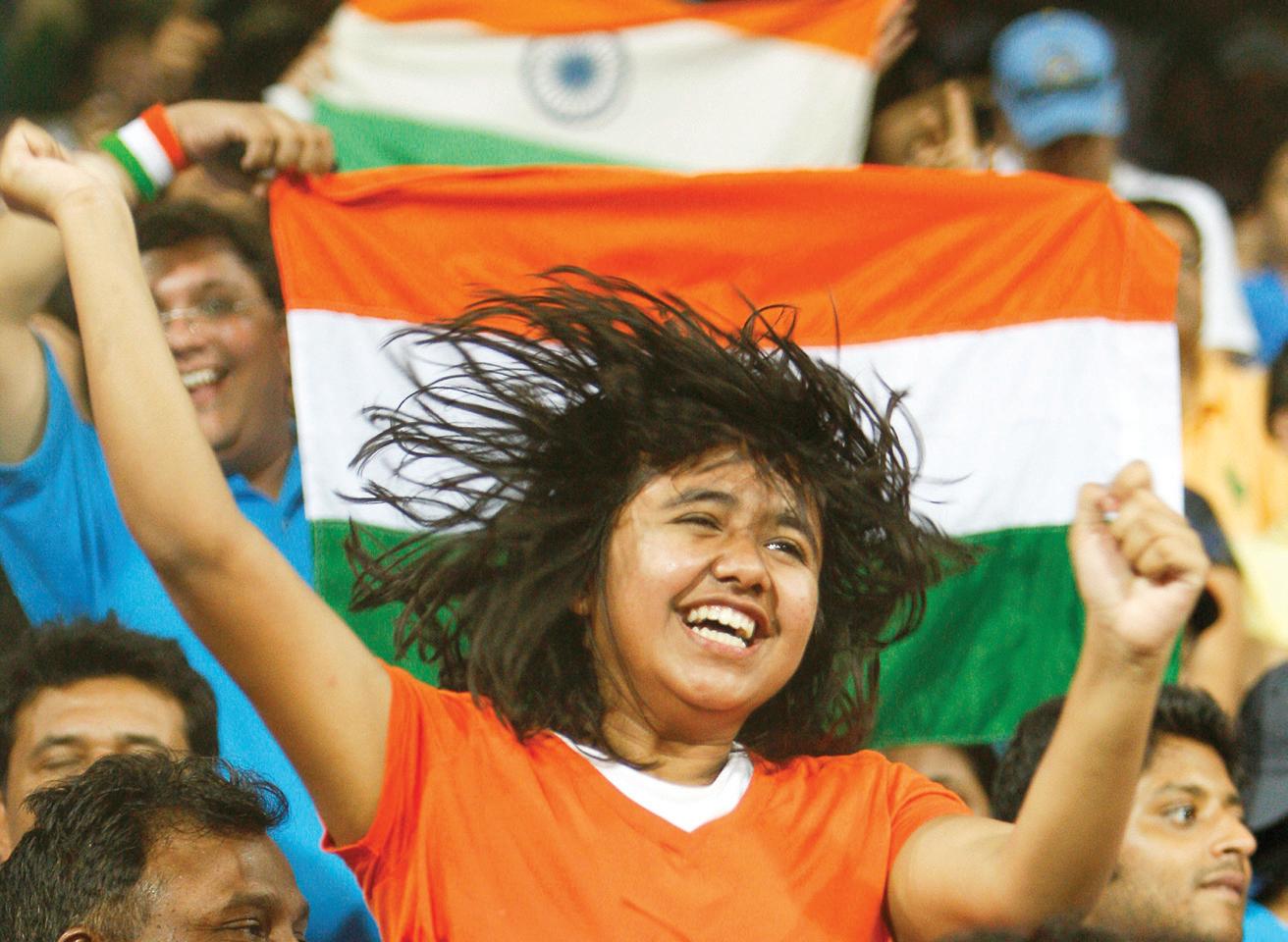
only four champions apart from India herself in 1983. Each of the victories in the knockout stages was like winning a final; if not only for the fact that losing would have resulted in exit, for the reason that each victory was so emotionally charged, so poetically scripted and that with each win came just a little release of pressure. Just a little.
The build-up to each of the knockout matches was deservedly intense, but the lead-up to the final was another story. For the first time ever, India would not be playing the reigning champions in a World Cup final. Sri Lanka is a great side, no doubt; but they carried with them hardly a fraction of the aura that the 1983 West Indian team did, and comparing them to the 2003 Australian team would be a mistake. This resulted in even more expectation. The whole of India, then, came to a standstill for a day and night of pure theatre on April 2nd, 2011.

From the outset, India were a team possessed. After losing a toss that in itself was dramatic, they were prowling tigers in the infield, with Suresh Raina and Yuvraj Singh pulling off stunning saves in the off-side ring reminiscent of a 2007 Australian outfit. Against Dilshan and Tharanga, though, the region between backward point to extra cover is especially crucial and India were ruthless, allowing only two boundaries for the first ten overs, picking up the wicket of Tharanga on the way. Zaheer Khan’s figures read 5-3-6-1, and he gave away his first run after over 3 overs. This is not to say the Sri Lankan top order was playing defensively – it was just that India seemed to be playing with extra fielders. The opening passage of play is best exemplified through the image of the 37-years-49-weeks-old Sachin Tendulkar diving full length on

the boundary to save his team just one run.
Sri Lanka, though, did not just make the finals through pure luck. Although wickets kept falling at regular intervals, the support cast to a truly special knock by Mahela Jayawardene was adequate. Jayawardene is one of the classiest batsmen in the game today, and for many, he has the best hands in the game. He works the ball subtly into gaps, picks up the odd boundary with a deft touch here or a graceful stroke straight through the line there, all while playing utterly risk-free cricket. Thisara Perera, a day before his 22nd birthday, closed out the innings superbly with a run for each of his years, at a strike rate of 245. India, who at one stage looked like chasing 250, was set 275 to win a second World Cup. The match was, at this stage, more in favour of the visiting team. If the toss consigned India to, as the pundits say, 35% chances, chasing 275 under lights against a strong bowling attack definitely did not improve the situation.
And then Lasith Malinga delivered two heartbreaking deliveries that, to many, blasted India right out of the contest. Virender Sehwag was seen as the game-breaker for India. His quickfire 38 in the semi-final against Pakistan was the difference between the two sides in the end, and his disregard for Sri Lankan spinners (or spinners of any nationality, for that matter) was seen as another factor in his importance for this match. He watched on in stunned silence with the rest of the crowd as with the second ball of the innings, Malinga delivered a searing straight ball into his pads which was knocking out the middle stump.
Photos: AP
COVERSTORY
life
Sachin Tendulkar meanwhile, looked ominous, as he has throughout the tournament. Lasith Malinga then sent down a wide delivery that just went away a fraction. Sangakkara pouched a low edge, and at 31/2, the dream was shattering.
At this stage, the only way to sum up the situation would be through the reaction of the crowd. Mumbai was shell-shocked. Two of the biggest fish in the Indian batting line up were gone within the first 40 balls. 245 runs remained, and Murali hadn’t even entered the attack yet. Heads lay in hands, while an entire nation barely dared to look on.



Virat Kohli and Gautam Gambhir, team mates at Delhi, then produced a partnership that has not been mentioned much in the aftermath of this match. The 83-run stand stopped the fall of wickets, established a base for the in-form middle order and most importantly, kept the scoreboard ticking. If not for a freak one-handed caught-and-bowled from Dilshan, to remove Kohli, these two looked well set to take India all the way.
Indian fans awaited Yuvraj Singh, who has been their talisman this tournament and had a crucial part to play in this match. However, instead entered the captain. There was a huge roar, but it was followed by the unmistakeable whispering of thousands of spectators: Why is he here now? He is not in form.
Continued on page 12
The nail-biting night when an entire nation came to a standstill lived up to its surreal build-up
www.indianlink.com.au
Road to semis
India’s ride to World Cup semi-finals was often a nerve-wracking affair, notes RITAM MITRA
India’s journey in the tournament wasn’t an easy one. Playing in the unpredictable Group B, India’s only wins over Test playing nations were against Bangladesh and West Indies – the two lowest ranked ODI teams of the major countries. Questions were raised over fitness, fielding and bowling – but as the road began to twist and turn, so too did India’s mettle grow ever stronger. India’s path to the semi-finals looked like this:
Game One: India 370/4 def.
Bangladesh 283/9
The drama unfolded from the very first ball of the tournament. Virender Sehwag, ever the mercurial opener, blasted the first ball of the World Cup for four (and proceeded to repeat this first-ball murder in India’s next four matches). Sehwag continued to pillage the shell-shocked Bangladeshi attack, compiling 175 violent runs, while Virat Kohli came up with a fantastic ton on World Cup debut. India amassed 370 in a brutal welcome to the tournament for the packed house at Dhaka. A spirited Bangladesh reply no doubt worried Indian fans; but India had already bettered 2007. The journey was underway.
Game Two: India 338 tied with England 338/8
The mother-in-law of all cliffhangers. After a typically serene century by Sachin Tendulkar, India amassed a total few gave England
Continued from page 11
M.S. Dhoni. His walk to the crease in itself was purposeful. Dhoni emanates such strength with each stride, and it is not just physical strength that he exemplifies. His eyes were steely, his movements were precise and his body language was fearsome. Even though the match was well in the balance at this stage, and Dilshan had just celebrated wildly at taking the stunning catch, the mere presence of Dhoni in the middle seemed to belittle everyone else. Sri Lankan heads began to droop.
Dhoni and Gambhir’s 109 run stand was the epitome of composure and intensity. Dhoni, apart from a nervy swipe in his first over, barely played a false stroke. They ran like horses, turning ones into twos even though both were struggling with back problems. Dhoni had just kept for 50 overs while marshalling his troops, while Gambhir had been out in the middle for 20 overs already.
Muralitharan was nurdled and nudged, Randiv was manoeuvred beautifully, and every single bad ball was punished. The pressure was telling on the bowlers as well – Perera, normally known for his consistent length and stump-to-stump line, served up some rubbish short and wide deliveries which Dhoni duly murdered. Sangakkara looked extremely worried, and he had reason to be.
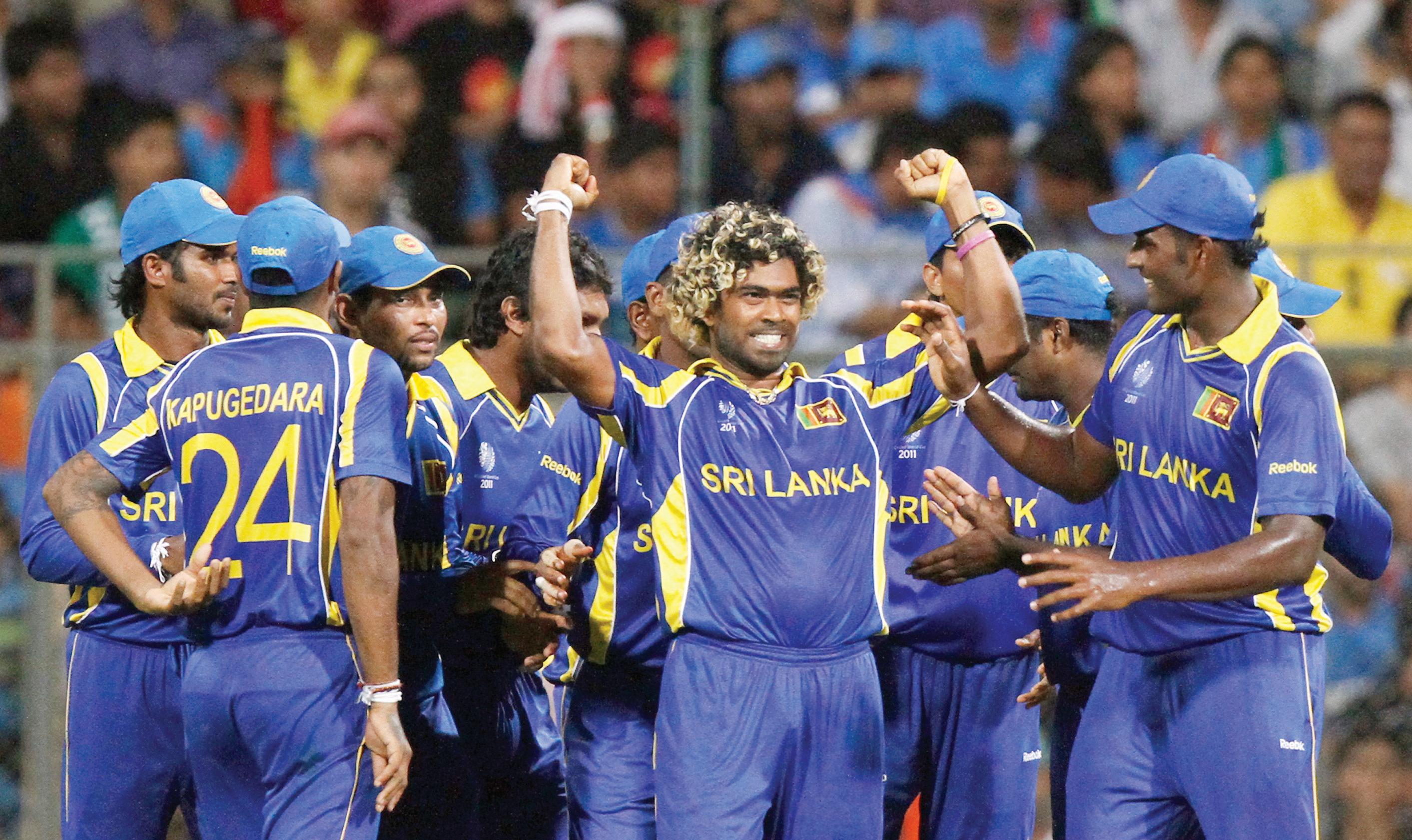
Gambhir played a sublime innings but
any hope of chasing down. Then came one of England’s finest ever one-day innings, a sublime knock from skipper Andrew Strauss, who smashed 18 boundaries and a 6 in his 158, as England raced to 281-2 after 39 overs.
Zaheer Khan entered the attack soon after and promptly made the pitch look like a minefield, taking 3/13 in his last three overs to turn the match well and truly on its head at the 46 over mark. At which point, Swann, Bresnan and Shahzad combined to turn the match England’s way again; each of them hitting a six to help England salvage a tie. Neither side knew whether to be happy or disappointed.
Game Three: India 5/210 def. Ireland 207

Zaheer Khan continued his impressive form, picking up 3/30 against an Ireland outfit coming off a scarcely believable win against England. It was at this point though, that eventual Player of the Tournament Yuvraj Singh truly stamped his authority on the Cup – picking up 5/31 along with his second consecutive half-century to guide India home from a somewhat sticky situation, Yuvraj more or less carried India home on his own with an unbeaten 50.
Game Four: India 5/191 def. Netherlands 189 India’s second match against an Associate nation resulted in a very similar pattern of play
departed 3 short of a deserved century with the score at 4/223, and although there was still tension, it was purely a product
– India bowled Netherlands out for a paltry total, once again thanks mainly to Zaheer and Yuvraj; Yuvraj bagged 3 half-centuries on the trot, and his second man-of-the-match award, taking India home with an undefeated 51. No one else in the match crossed 40.
Game Five: South Africa 7/300 def. India 296
Another day, another Tendulkar ton, and another defeat snatched from the jaws of victory. India, at 1/267 in the 40th over, looked set for a mammoth total. What followed was a procession of wickets so bizarre that even Steyn looked bemused when he finished up with 5/50 in an Indian collapse of 9/29. The South Africans kept building partnerships, and while Harbhajan and Zaheer were impressive, Nehra leaked 16 runs in the first four balls of the last over to cap off a farcical performance for the hosts. The doubters now had their ammunition.
Game Six: India 268 def. West Indies 188
What looks like a comfortable 80 run victory on paper will be remembered for the struggle it was on the field. Yuvraj Singh hit his first ODI ton in almost two years, as India lumbered to a par 268. It didn’t look like enough when Devon Smith carried his side to 2/154 after 30 overs. But Zaheer Khan once again took centerstage. His performances with the new
into the stands over long on. Ravi Shastri exploded on air. The crowd, who had already begun partying, went into hysterics.
ball have been bettered only by his fantastic control of reverse swing in the late overs, and with a superb slower ball to bowl Smith, he started a mesmeric batting collapse in the 31st over. Suffocated by Ashwin and deceived by Yuvraj, the last seven in the West Indies batting line up managed a grand total of 15 between them. India finished second in the group.
Quarter Final: India 5/261 def. Australia 260/6
A match worthy of a final came much earlier than expected. Australia, as a result of a dramatic loss to Pakistan, finished 3rd in their group and thus were left looking ahead to a match against the heavyweight Indian side. A defiant, spine-tingling century from Ricky Ponting in a gritty “I-told-you-so” fashion saw Australia post a tricky 260, with Ashwin, Yuvraj and Zaheer impressing with the ball. India were given the most explosive of starts by vintage Sachin, but when Yuvraj and Raina came together the match was in the balance. Yuvraj decided that this was a good time to score yet another undefeated half century, in the process picking up his fourth man-of-thematch award from the 5 Indian win so far this tournament, as India pulled off a stunning victory. For the first time in the tournament, India looked like genuine contenders. For the first time in 12 years, we were going to have new world champions. Australia was finally out.
knock. Ponting and Gilchrist may have played blinders in the past two finals, but an out-of-form captain playing an innings of this calibre with the pressure of a chase lends his story with an even more poetic front. Dhoni’s innings beggared belief and redefined courage. The easiest thing to forget is that it was purely Dhoni’s decision to move up the order and shoulder even more responsibility for the
‘powerplay’ to see India to within just one shot of history. And what a shot it was. Dhoni, who built up a character, a reputation, and a career on his ability to stamp authority on the opposition, saw a length ball from Kulasekera. An absolutely terrifying swing of the bat ensued, and the ball was launched
M.S. Dhoni, who stood alone watching the ball disappear. The dressing room erupted. Sachin Tendulkar came running out with teary eyes and a smile. Hundreds of millions embraced each other. Dhoni stood still, an image that will endure for a lifetime.
Emotions aside, Dhoni’s knock was amazing for what it was – a superb captain’s
But although the nation is celebrating and the party will continue for weeks to come, everyone’s thoughts are with one man. Although everyone will spare a thought for the Dravids, Gangulys and Kumbles who put in years of hard work to send India in the right direction, one man endured six World Cup campaigns, each one ending in disappointment. One man has scored more World Cup runs and centuries than any other batsman in history. As his team mate Virat Kohli put it, “He has carried the burden of the nation for 21 years, it is time we carried him on our shoulders.” Each and every player has dedicated this win to Sachin Tendulkar, but he dedicates it to the nation. His elation was summed up when he said, “This is the proudest moment of my life”. Tendulkar’s tears of joy were shared by the entire country, and it is apt after years of heartbreak that, when he eventually does hang up the gloves, he will have gone out a world champion.
A more perfect script could not have been written.
12 <> APRIL (1) 2011 INDIAN LINK www.indianlink.com.au COVERSTORY
Lasith Malinga celebrates the wicket of Sachin Tendulkar
Photo:AP
A potpourri of emotions
In perspective, the India-Pakistan match achieved little more than a win and a loss
BY GAURAV PANDEY

Without a doubt, the greatest – perhaps only – contribution of Saddam Hussein to the world was the phrase, “the mother of all battles.” In the lead up to the India-Pakistan World Cup semi-final clash, the phrase was repeatedly abused in the subcontinent media by tempestuous anchors who seemed to know only one way to communicate: by screaming.
Dubbed almost everything that could imply it was end of the world, in essence, the match was just that – a cricket match. The attempts to make it sound like a panacea for all the problems that ever beset these two nations were – in plain words – unfortunate.
Uncertainty and ignorance are the breeding grounds for madness. Anchors on 24-hour news channels screamed on top of their voices; cleverly clipped old – often unrelated – video clips were shown repeatedly to incite passions; the opinion of experts – mainly journalists and retired cricketers – was sought on every single scenario; numerous rituals were telecast live; and every word uttered by the cricketers was analysed threadbare.
There is a fine line between informing a nation and misleading it. In India and Pakistan the media enjoys enough freedom and power to do both, and more often than not, the line between the two is blurred.
The media in both countries grossly –perhaps deliberately – over-estimated the worth of the contest. False hopes were sold on television without a trace of responsibility
to naïve multitudes. The build-up to the match was devoid of any logic and far from objective truth.
Pakistan is a nation grappling with numerous conflicts: it is a country in which one has learnt to shrug off a bomb blast as one would a minor traffic accident; where an abundance of talent is nullified by an abundance of intolerance; a nation burning its blood fighting someone else’s war; a nation fluttering under a mountain of external debt; a nation where feudalism continues to oppress the downtrodden; and a nation where, for many, decline has become a fact of life.
The battered populace deserved some happiness, but sadly the media – in its myopic pursuit of television ratings – falsely raised their hopes to a level from where it could have only gone one way: down. In reaching the semi finals, the Pakistani team, which was till recently confronting painful questions about the debauchery of three of its most promising players and embarrassment from inept officials, had already achieved far more than what was expected of it.
In India, histrionics had reached a crescendo. Not long ago, modern legends such as Kumble, Ganguly, Laxman, Dravid and Sachin played the game with such gravitas that it made one wonder if being ‘sorted’ translated into being prolific on the field. In comparison, we seemed to be in a world many times louder. Most of this ‘golden generation’ has retired or fallen out of favour. The whole nation was on the mission of gifting Sachin the World Cup. A spirit of triumphalism, a do-or-die madness and suffocating vehemence took over, even as the nation continued to grapple with nagging questions on corruption and poverty.
Then, there were the usual suspects: unreasonable fans; a heady influx of glamour and riches; and the media.
To make matters worse, politicians from both sides jumped in to ride the cricket wave and – for a brief while before the game –political posturing and diplomacy seemed to take centrestage. Interesting as it was to see the Indian Prime Minister Manmohan Singh and his Pakistani counterpart Yousuf Raza Gilani together, it was never going to be a pathbreaking meeting, considering the deep-rooted problems between the two countries. It was ironical though, to hear phrases such as “the fourth world war” and “opportunity for peace” used to describe the same match. By then, one should have been expecting such things!
If the match managed to live up to the hype, it was because two nervous teams made for an equal match. The quality of cricket wasn’t first-rate, but the contest was. It is not easy to be a loser when the stakes are so high. India will look back at the match with relief, for essentially the difference between the two teams was a legend who came to the match a bundle of nerves, but wrapped in luck. No team can realistically expect to win after giving Sachin Tendulkar four chances. He made them pay, though it was a knock of outstanding shots as well as awkward misses. On the other end, between two wonderful cameos from Virender Sehwag and Suresh Raina, the wickets fell regularly. Pakistan’s best moments came with the ball. Wahab Riaz, who many before the match wanted to make way for a retiring Shoaib Akhtar, bowled his heart out, taking a five-for in the process. The spin trio of Mohammad Hafeez, Shahid Afridi and Saeed Ajmal for a long time, did a wonderful job of containing

the Indian batting line-up.
Pressure makes one do strange things and 260-odd runs in a World Cup semi final is not an everyday chase, certainly not if it happens to be the most hyped match in the history of the game. Despite a promising start and some resistance from the young breed, Pakistan’s batting ultimately caved in. India panicked, but Pakistan panicked even more. India was the less flawed team on the day, it was the team that managed to keep its nerve. Aided by sharp fielding, stingy bowling and colossal home crowd support, they managed to overcome the Pakistani challenge, despite one of their most bedraggled batting performances in the tournament.
The story of the match cannot be complete without a mention of the fans. Imagine a sea of humanity on steroids in an unending session of wild head-banging, and that was the kind of fervour this match induced, especially as India inched towards victory. The stadium crowd cheered, sang and prayed; at homes, people remained glued to the television. The two countries came to a standstill. Soon after the match, frenzied celebrations engulfed India. Fireworks lit up the Mohali sky. Hoards and hoards of screaming masses swarmed the streets, blowing horns and bursting crackers. The party had only begun.
Elsewhere in Pakistan, the mood was sombre. Cheerful congregations had turned morbid. It was the time for conspiracy theories. Thousands of fans took to the streets in protest, they blamed everything from bad catching to irresponsible shot selection. Their World Cup dream had been so cruelly culled. Sadly, for many, life would be normal soon.
APRIL (1) 2011 <> 13 NATIONAL EDITION
www.indianlink.com.au COVERSTORY
Photo: AP
Celebrating colours and cultures



Music, song and dance light up Holi at city school
BY GAURAV PANDEY




More than 300 children came together at Mascot Public School in the city recently to celebrate Holi, as part of the ‘India Calling’ campaign, which was launched in February under the ‘Expanding Horizons with Asia’ initiative of Sydney Region of the NSW Department of Education and Training.

Assistant Principal of Mascot Pubic School Tina De Angeli, clad in a vibrant red sari, welcomed the gathering. Dr. Phil Lambert, Regional Director, Sydney Region, who was the guest speaker, said, “Our aim is to provide students and teachers with knowledge and understanding about India, and the response that we’ve received from everyone so far has been truly extraordinary.”

“Countries such as India and China are significant trading partners with Australia, and there is little doubt that our students will be connected through work and life with these two super-powers, ” he stressed.
Dr. Lambert described India as “a great country with a rich heritage, cultural diversity and glorious past, whose future is also our future.”
After the national anthems of Australia and India respectively, and English and Hindi versions of Hum honge kamiyaab, the hall erupted with Hindi music and beats of traditional dhol, and soon hundreds of children turned into an irrepressible force of colour and energy. Others joined in and the celebrations got well and truly under way.
Singer and TV personality Kamahl, who is of subcontinental origin, was the special guest at the function. In an inspirational speech, he recalled his early days in Australia as a migrant from Malaysia. He exhorted the children to “learn as much as they can” and appreciate the marvellous country they lived in. Soon after, in line with the Holi spirit of rejoice, the guest broke into song and the audience could not help but sing along.


Tiny tots, dressed in ethnic Indian costumes, walked around saying an exaggerated namaste to all and sundry in excited, cheerful voices. They participated passionately in Indian-style dances and other events that went on for more than three hours, the broad smiles on their faces refusing to wane.

The children responded brilliantly to on-stage demonstrations and, despite their obviously limited experience with such things, showed great skill with the ‘dandiya dance’ sticks. Parents and teachers also put their dancing and learning skills to test in an attempt to mimic the performers on stage.
“Such programmes are excellent as they offer people an opportunity to get to know other cultures,” said Mir Nabeena, a Bangladeshi mother seemingly proud to see her son and daughter express themselves so brightly.
Stan Kondilios, President, P&C Association, Mascot Pubic School, felt programs such as this one not only allow children to learn about other cultures, they also encourage parents to come out and interact with other parents – something that will go a long way in ensuring “not just tolerance but appreciation” of other cultures among people.
“This program is a part of our efforts in this direction.”
The days music and dance events were followed by a barbeque lunch, traditional Indian appetisers like samosas were also on offer. This was followed by various sporting events – hockey, cricket, tennis, soccer and football – and a rangoli competition where children displayed their artistic skills to make beautiful patterns using coloured powder.

Seven primary schools joined hands to be a part of the India calling program February this year. The objective of the program is to teach students about the Hindi language and aspects of Indian culture. It also aims at developing sisterschool partnerships with schools in India through a connected classrooms concept. The program, which will run every Wednesday in 2011, involves both faceto-face lessons with teacher Kulwinder Kaur, as well as lessons taught to all seven school groups using connected classrooms technology.
The participating schools are: Ashbury Public School; Carlton South Public School; Cronulla Public School; Double Bay Public School; Kogarah Public School; Oatley West Public School; and Mascot Public School.

Mala Mehta, founder of IABBV Hindi School and one of the driving forces behind the event, said, “We intend to get all the seven schools in the program together at the end of each Term 1 for a celebration like this. In Term 2 we hope to cover 7 different states of India along with the IPL teams attached to these states.”
She also praised the role played by the local Indian media in “spreading awareness on this initiative.”
Teachers and senior students at Mascot Public School were the hosts for the day and formed the organizing committee. Members of the Indian community, many of whom participated as volunteers, played an active part in organising the event.
The celebrations, the music, and even the speeches were a beautiful example of Indo-Australian identity and mutual respect. The event, by all counts, was a success –something the children will remember for a long time.
14 <> APRIL (1) 2011
MAINSTREAM





APRIL (1) 2011 <> 15 NATIONAL EDITION

16 <> APRIL (1) 2011 INDIAN LINK
Faith in the line of fire
Attacks on Auburn’s Sri Mandir Temple take a violent turn

On the night of March 19, two masked attackers sprayed the reasonably fortified Sri Mandir Temple in Auburn with about eight rounds of bullets, one of which found its way inside the temple. Although no one was hurt in the attack, it was another blow to the psyche of an already harassed
“We condemn these attacks, as we would condemn one on any religious building in Australia; multiculturalism requires one to respect the other communities,” says Rama Ramanuja Acharya, public relations officer, Australian Council of Hindu Clergy. “Our sympathies are with the temple priest Jatin Kumar Bhatt, who lives within the temple complex with his family, and the larger Indian community. We request the government to do all in its power to find the culprits.”
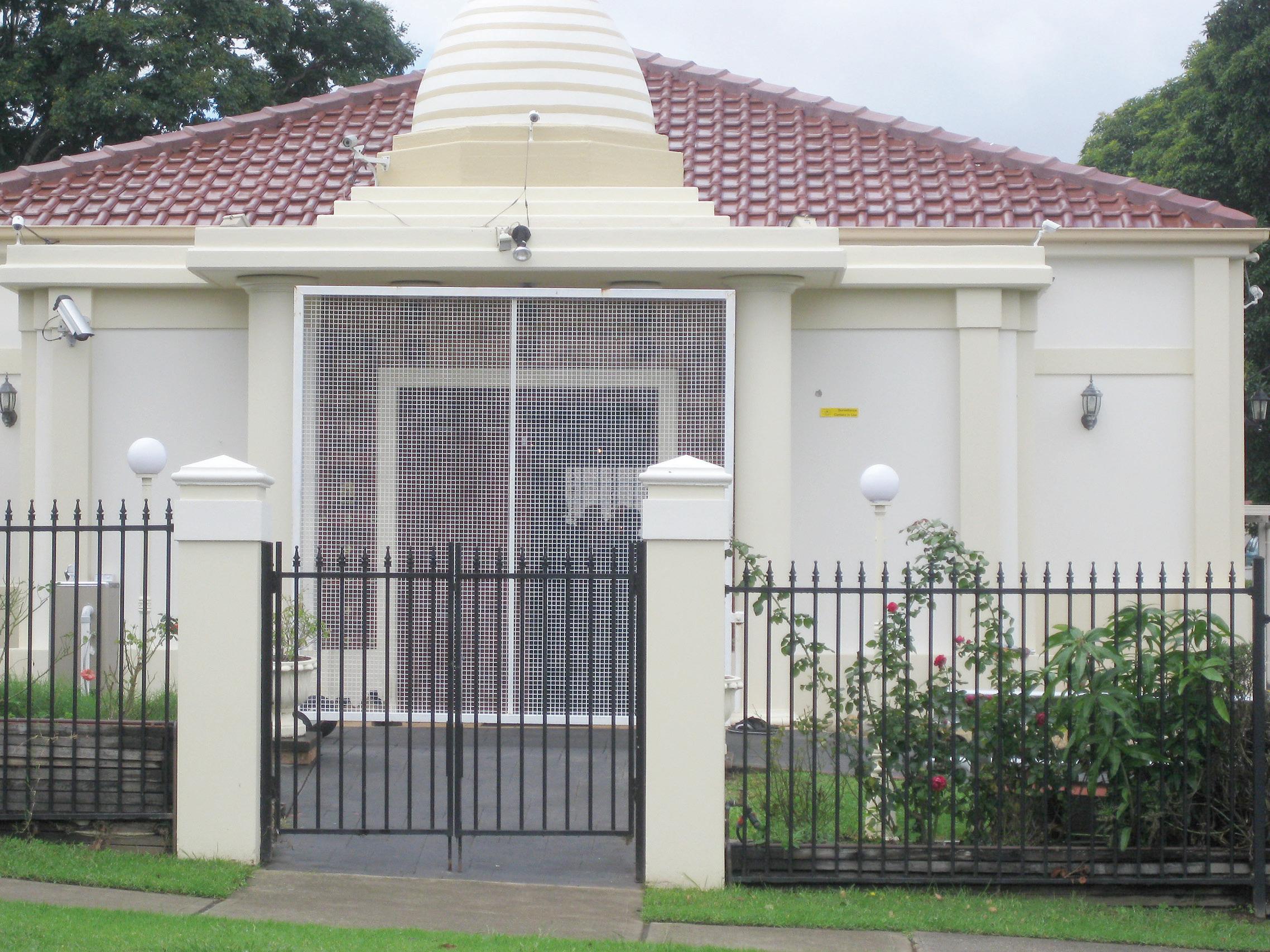
“The Indian community feels scared and threatened and they are very concerned about the temple,” says Rajeev Kapoor, president of the temple. “We need to nab these anti-social people and put them behind bars.”
The police are conducting their investigation. “Forensic experts came and checked the temple from inside, where the bullet was lodged,” Kapoor says.
A police patrol of the temple was organised after a delegation met with local government minister Barbara Perry and the police commissioner.
The police have also arranged a ‘community safety audit’ of the temple and its surrounding locations on April 5, with an intention of seeking information on existing or potentially dangerous threats and discussing security measures. “It will commence with a briefing in the Montgomery Room at Auburn Council and continue out to the temple location with interested stakeholders from NSW Police, council and community taking part,” says Kapoor, adding that he was “happy with the way the investigation is going.”
“In the past, Sikh gurudwaras, in densely populated
face rejection until they are accepted as a part of the society, which often takes a very long time.”
Many of these places of religious worship are located in residential areas – a fact that does not go down well with some of the local residents. “There have been concerns raised in the past, but those issues have been addressed locally and directly with the neighbours,” Acharya says, adding, “The site itself was originally earmarked for a church, so it is zoned as a religious site.”
Bawa Jagdev acknowledges the problems, such as “noise pollution” and “traffic congestion,” experienced by local residents due to regular gatherings of a large number of people in cramped places.
a move out of this place as it’s very difficult for anyone to do anything when a youth passing by the temple does something like this and disappears.”
It was not the first time that the temple has been at the receiving end of someone’s irrational wrath. Incidents where bottles and eggs were hurled inside and abusive graffiti written on its walls have been common. Last year, in an attempt to deter miscreants from indulging in such acts, the temple authorities had raised its fence, reinforced external windows with shutters and installed surveillance cameras.
The drive-by shooting incident is a sign of the growing audacity of the elements involved in these attacks. The incident also underlines, though, another and perhaps bigger challenge the Hindu community faces – its own painfully passive response to provocation.

“Religious institutions built in the less crowded developing areas don’t have such issues,” he adds.
Yet Rajeev Kapoor notes that the incidents are a recent development. “The SriMandir Temple has been at this site since 1977. These incidents only started three years ago. The only problem I can think of is people park their cars in the neighbourhood when there is a function in the temple – as with churches and gurdwaras in residential areas – but that doesn’t mean that someone should come past and open fire on the temple”.
Acharya feels that deploying private security, like at the Jewish temples, may not be a viable idea as it is an “expensive proposition” for a minority community. “I don’t think we have the financial wherewithal to provide 24-hour security to the temple.”
“Security camera footage doesn’t give one a clear enough picture,” Acharya points out. “We have been considering
“The problem is that the Hindu community tends to keep a low profile. They are more focussed on damage control,” Acharya agrees.
“There is a need to educate those holding differing beliefs than ours about our ways of life, religion and culture: there is a need for us to understand and respect their ways of life,” Bawa Jagdev says.
Auburn, the suburb where the temple is located, is no stranger to crime. Being the heartland of Migrant Australia, the area has long been plagued by high unemployment rates, crime, and conflict between and within different ethnic groups. The suburb – a melting pot of various cultures and religions, dominated by Muslims and Christians – has seen a steady rise in such crimes over the years, as the opportunities for cross-cultural dialogue have remained limited.
Whatever the outcome of the investigations may be, future visits to the temple will undoubtedly carry a frisson of doubt – a situation one does not expect to face in a country that claims to be proud of its multiculturalism.
APRIL (1) 2011 <> 17 NATIONAL EDITION
www.indianlink.com.au SPECIALREPORT
Acharya feels that deploying private security, like at the Jewish temples, may not be a viable idea as it is an “expensive proposition” for a minority community
Pt Jatin Bhatt at Auburn’s Sri Mandir
Community seniors honoured at UIA event
Strike while the iron is hot. United Indian Association (UIA) has rightly used the opportunity around the Seniors Week and thrust some relevant seniors’ issues in the spotlight. An important benchmark in advocating for the seniors in the Indian community is to allow and further discussions about medical, transport and visa facilities.
The UIA Seniors’ Forum organised on 19th March at the Parravilla Function Centre was a fantastic opportunity to throw some light on these matters in a light and cheerful tenor.
The forum was rife with information about various topics right from men’s sexual health to aged care facilities. Sumati Advani, Chair of the Forum Organising Committee, drove her point home when she elaborated on the seniors’ lack of access to very basic needs such as health card, travel card and medical benefits.
When elders and parents of young families arrive in Australia to settle here with their children, it is not all that easy for them. While the waiting times for bridging visas are high, their access to some very basic needs is indispensably hung in the balance.
Aruna Chandrala, President of UIA and Raj Natarajan, Chair of the UIA Seniors’ Committee, highlighted that UIA has been collectively advocating for seniors at the State and Federal government levels. Raj Natarajan said, “While there have been some wins, a lot is yet to be achieved. The UIA Seniors’ Steering Committee will continue to pursue these critical issues until they are resolved.”
On that note, he also mentioned that he has been rationalising to establish a joint working committee who gives time and puts in their effort in order to list out and scrutinise the needs of the seniors in the Indian community
Public forums and cultural events like this provide an interesting platform for many messages in the community. This year, Carewell Aged Care launched its second suite of aged care services, since laying its first foundations in August 2010 at the Seniors’ Forum. There was an informative presentation arranged by Madhu Chaudhari and Arnab Ghosh Dastidar, the founders of Carewell, who also provided valuable transport service for some of the attendees. Sheba Nandkeolyar, of Multicall Connexions came at the lectern provoking a few laughs at an old saying “Age is strictly a case of mind over matter. If you don’t mind, it doesn’t matter!”
“What matters is your support for a worthy cause…” she continued by mentioning the
“When the numbers don’t make a good count, it is hard for the decision makers to round up in favour of the Indian community,” Sheba said. “The Census of Population and Housing is conducted every five years and while the Indian community was undercounted in the 2006 Census, 2011 is our chance to come out of the shell from being a hidden community,” she added.
Carewell’s vision is to provide culturespecific aged care services to a culturally and linguistically diverse audience in Australia. The organisation has been involved in advocacy for aged care services, to make training and support centres accessible to many aged groups in NSW. Madhu Chaudhuri, of Carewell said “Unique facilities like volunteer
It’s RAINing goodwill!
The Active CALD (Culturally and Linguistically Diverse) Seniors Awards 2011 were held recently, in which several Resourceful Australian Indian Network (RAIN) members were recipients of awards and certificates for their positive contribution to the cause of fellow seniors within the community. The event was organised by Hurstville City Council and St George Migrant Resource Centre on March 15 at the Marana Hall in Hurstville, and was attended by 400+ people, including seniors and their families. The occasion also marked the launch of Senior’s Week, which had ‘Live Life’ as its theme this year.
Seniors Week was officially launched by Councillor Nancy Liu, JP of Hurstville City Council. Ruth Fyfe Vice Chairperson, Board of Management of St George Migrant Resource Centre also addressed the guests.
Seniors were collectively honoured for making a difference to the lives of others. Among these, Mrs Loga Rengasamudram and Mrs Sushma Sachdev from RAIN Inc.’s Sutherland Branch received the award for Sutherland from Councillor Nancy Liu, JP for their active contribution to the community in Sutherland and making a difference to the life of others. They had effectively coordinated projects such as YAAD (Yoga and Ayurvedic Diet) and ‘Leave a legacy’ project in partnership with Gymea Community Aid and Information Centre. They were nominated for the award by Jenny Grey of Gymea Community Aid and Information Centre Inc., who has had first-hand experience of the effectiveness of the programmes.
In the St George region, Vedavalli Srinivasan and Sudha Natarajan were awarded a Certificate of Recognition for their voluntary services by Cherie Burton, Councillor for Kogarah. It is an honour that senior members are recognised for their good work within the community, as their contribution is relevant, but so often publicly unacknowledged.


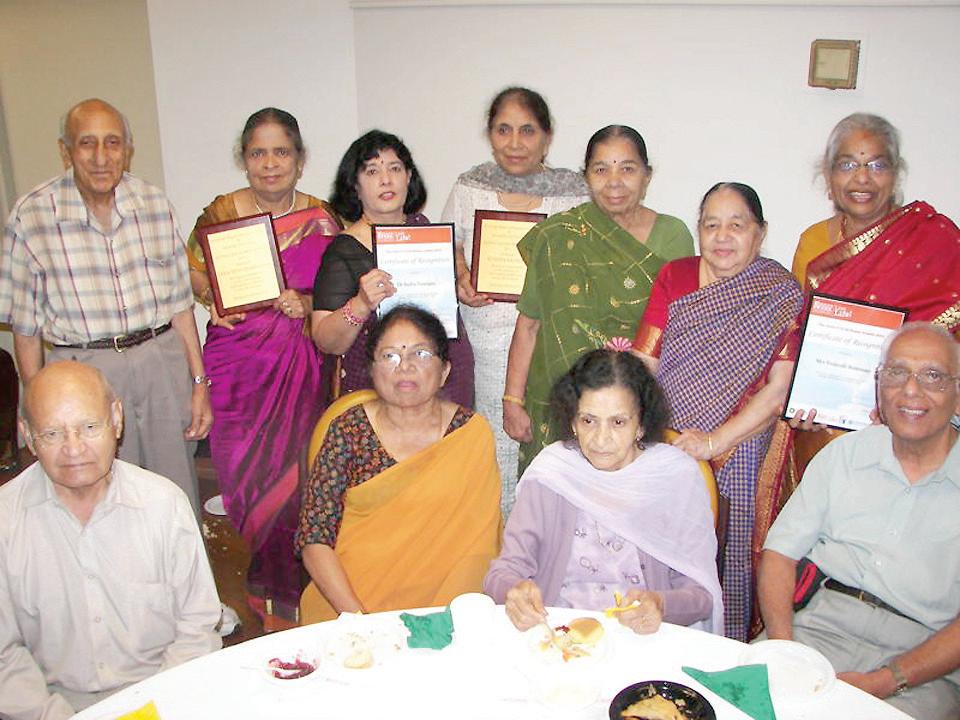

Members of other communities were also recognised, including those from the Macedonian, Chinese and Italian communities.
Traditional herbs make competition unique
To mark Seniors’ Week, fifteen participants from RAIN Inc took part in the Herbal Cooking Competition on March 17, presenting entries using different herbs to create not only mouth-watering delicacies, but ones which were also beautifully presented. Seniors also teamed up with youth supporters and young family members
driven computer training classes, support to disadvantaged women, allied health care services and group activities are already being conducted in association with various other community groups. Apart from these, the dementia day care facility is going to be introduced very soon.”
Discussions on issues such as Power of Attorney, Wills and Advanced Care Directives, Health issues among the ageing population & Healthy Ageing also formed an interesting part of the forum. Commonwealth Respite and Carelink Centre held a stall and provided useful information.
The Forum was also attended by Mr Vivek Kumar who represented the Consul General of India; Ms Julie Owens, Federal Member for Parramatt; Peter Primrose, Minister for Ageing; Barbara Perry, Minister for Local Government; Mr David Elliott, Liberal Candidate for Baulkham Hills and Mr Geoff Lee, Liberal candidate for Parramatta. Vivek Kumar, Peter Primrose, Julie Owens and Barbara Perry all praised UIA for the excellent work they are undertaking on behalf of the Australian Indian community. There was a round of applause when the Minister for Ageing committed to follow up on the issues raised at the Forum with the NSW Ministerial committee.
Community Service Awards were presented to Dr Gurcharan Sidhu, Mrs Hemalatha Chandramohan, Sri Vasudevacharya and Mr Selvadorai Tinnanur. Participants were entertained with Bollywood golden hits by Band Baja Group and Nandini. Lots of door prizes were won and the guests enjoyed a delicious lunch.
who helped them find the nutritional and medicinal value of herbs they have been using in their cooking for several decades. Every entry was accompanied by a list of ingredients, the recipe and also the nutritional value of the herb used. Judges for the entries were Malia, chef from Hurstville Community Food Services, accompanied by her young assistant Patrick; Jenny Grey from Gymea Community Aid and Information Centre; Lorrain Watson and Mariette Leong of St George Women’s Interfaith Network; and Patrick Cranney, Multicultural Officer from Kogarah Council. Needless to say, the judges had a tough time deciding on the winners.
Said Patrick Cranney, “The wide range of meals were all very delicious, and many of the recipes were original or clever variations on traditional ones.
It was an excellent idea to encourage the participants to explore the health and nutritional factors of their recipes and to have these details available for the judges.”
“The concept behind this competition is wonderful. It gives encouragement to older folk to make them feel more important in growing herbs, in understanding their use and their nutritional value,” said Mariette Leong.
Herbal recipe book launched
As a follow on to the herbal cooking competition, 65 Indian Seniors and 30 wider community seniors participated in and enjoyed a colourful afternoon of Herbal Green Bolly-Food Festival.
RAIN Inc., supported by Hurstville City Council, Kogarah City Council and also funded by the Department of Human Services Ageing Disability and Home Care, had a presentation ceremony for those who won the herbal cooking competition held on March 17. Councillor Nancy Liu of Hurstville City Council presented the prizes, and launched the RAIN Herbal recipe book Aushadi Rasoi Vedavalli Srinivasan won the first prize for ‘Green and gold soup; Vimu Patel came second for ‘Basil salad’; Raxa Narsey came third for her ‘Coriander dhokla’ and finally, Tara Surti carried away the fourth prize for ‘Herbal salad on the side.
All the participants received certificates of appreciation and a recipe book for their excellent presentations and valuable efforts.
INDIAN LINK
SENIORS
Priyanka Rao
Sudha Natarajan
Gurcharan Sidhu, Selvadorai Tinnanur and Hemalatha Chandramohan are among those felicitated at the Seniors’ Forum
RAIN seniors are recognised for their voluntary work.
Cooking competition
Seniors’ Week at Sri Om Care
Seniors Week in March celebrated the theme of “Live Life”, aiming to encourage seniors to actively participate at social events. At Sri Om, we celebrated the valuable contribution seniors make to our community in general, and families in particular.
Together with Auburn Council and Auburn Tamil Society, SEWA International, it was our way of saying thank you to seniors and was a great opportunity for all generations to join with older people in celebration of this event dedicated solely to them.

As our President HH Sri Om Gnana Sakthiyendra Swamiji put it, “Vandharai vazha vaikkum India” (India will give life to whoever comes to it). This proverb applies to Australia as well, as the Government here recognises and helps the community, and respects seniors.
“I am going to request most seniors that besides spending time enjoying various cultural activities, they should think of their responsibilities as well. One such is bringing up their grandchildren in a proper manner and teaching them good things,” said Easwaran Iyer, Senior Coordinator of Day Centres, in his welcome address when opening the Seniors Week 2011 event.
Also present were Amit Dasgupta, Consul General of India; John Murphy, Federal Member of Parliament for Reid; Barbara Perry, NSW Minister; Councillor Ned Adi representing Mayor
of Auburn, and Councillors Le Lam and Irene Sims, among others.
From the community, Bala Balendra (Auburn Tamil Society), Nihal Agar and Dr Raja Jayaraman (Chair and Vice Chair of the Hindu Council of Australia), Sanjeev Bakri (Secretary of Hindu Council of Australia), Satya Khanna (President SEWA International), Karthikeyan and Rajesh Venkataramiah (Secretaries of SEWA International), Sant Bajaj (AHIA Seniors Group), Ruben Amores (President of the Filipino community), F Wali (President of Auburn Small Community Network), attended this momentous event.

All the dignitaries spoke of the several achievements and contributions made by our seniors, and encouraged them to come forward to make even more valuable contributions towards peace and harmony in families and in the community.
Amit Dasgupta, Consul General of India in Sydney gifted numerous books about India, its culture and tradition to Auburn Library. He also presented a book about India to Councillor Ned Adi, representing the Mayor of Auburn.
Welcoming the gifts, the John Murphy, Barbara Perry and Councillor Ned Adi expressed happiness at the size of the gathering as over 300 seniors attended. They also spoke of the connections between the two countries and the positive contributions made by our community and seniors in particular, to Australian society.
Seniors and their families were entertained by an entertainment section which included several multicultural programs of Bollywood songs and dances, Filipino act, African drums, Taiwanese traditional indigenous dances and Chinese
Tai Chi Five Animal formation exercises.
The seniors themselves staged a significant entertainment program, comprising of Bollywood songs and dances and Gidda.
Many seniors were awarded for their excellent participation in initiatives and activities by the dignitaries present.
Sri Om Care and SEWA provided a free morning tea and lunch to all participants and visitors.

Two more events were conducted during the Seniors Week celebrations. On March 25, Sri Om Care with the support of Riverstone Neighbourhood Centre inaugurated the First Organic Veggie Patch in a garden, to be fully maintained by seniors at Riverstone.
The second event was an open air picnic for seniors on March 27 at Auburn Park, Macquarie Road, and was organised in association with the Auburn Council and Auburn Tamil Society. The turnout of attendees was large, despite rainy conditions. Traditional Indian games like tug-of-war, lemonand-spoon race, musical chairs were enjoyed by all. Free morning tea and lunch were provided for both events.
Jay Raman
APRIL (1) 2011 <> 19 NATIONAL EDITION

20 <> APRIL (1) 2011 INDIAN LINK


APRIL (1) 2011 <> 21 NATIONAL EDITION
A marketing marvel
It’s no surprise that most Indians in Australia, probably armed with pakoras and beer, sat glued to their TV screens until the early hours of April 3, watching India make history as they carried away the Cricket World Cup 2011. And it is unlikely that they would have even indulged in a bit of channel-swapping during the commercial breaks, for fear of missing out on even a bit of the excitement.
Which is why it is likely that most of them would have seen the Value World Travel advertisements promising generous airfares to the Indian subcontinent, and other destinations. What makes this advertisement unique is that it was the first and only Indian company advertising on mainstream national and international channels at prime time, trying to reach out to a wider audience. The strategy could not have been more spot-on, the medium could not have been more accurate. The advertisements, showed prominently on Fox Sports and Channel 9, created a stir within the Indian community, who probably didn’t expect to see a local Indian company advertising during the crucial final match.
Gargi Tripathy, Business Director of Value World Travel and her team were the brains behind the strategy, which promised a very high viewership of their target audience, namely, people travelling to the subcontinent. “We wanted to put out a message that was relevant to the community, one that would help them and also show our support to the Indian cricket team,” says Neni Tiwary, Managing Director. “Our aim was to create awareness of our company, which offers very competitive fares to the subcontinent and beyond, and ensure that people realise
that we are there to give them not just the best prices, but also the best service.”

Gargi and her team were instrumental in every process of the creative process too, from conceptualising to storyboard, and the final shoot. In fact, their solidarity to all things Indian is apparent, as Indians were involved in all stages that led to the creation of the commercial. Value Media Group, a sister concern of the travel agency, was actively involved in the shoot, and it is only the voiceover that is, obviously, Australian. Neni’s son Vedang (pictured above), also featured in the advertisement, with his cute face, enchanting smile and tousled curls - vaguely reminiscent of the legend Sachin Tendulkar himself. It was a massive marketing venture, and one that promises to reap rich dividends in the future.
Neni Tiwary and his family have been in Australia for the past seven years and have been involved in various business ventures. However, their latest brainchild Value World Travel was inaugurated about seven months ago, and has since enjoyed a great deal of success. Neni says that doing business in Australia is easy, as the country is strong on legislation and rules, and once one has a grasp of those, it’s a matter of working within the guidelines. But apart from the hard work that comes with any business venture, Neni also believes in using the best talent available. “We have a think tank of consultants, professionals and advisors, all of whom ensure that whatever we plan is based on sound business practices,” he says. “We discuss, analyse, review and finally come up with a plan.” And it is precisely this kind of thinking that has seen the company grow from strength to strength.
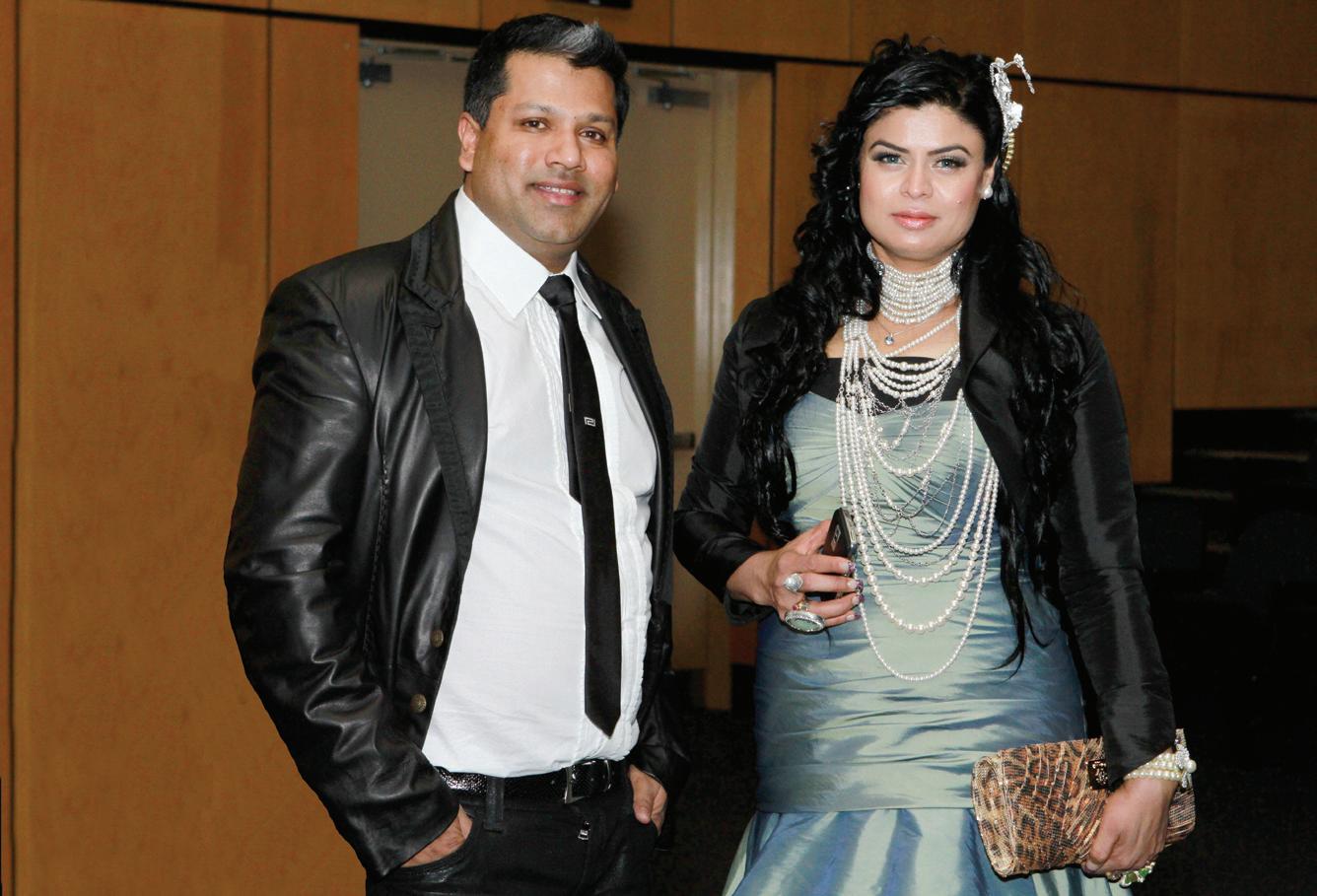
Indian student chosen to market Brisbane abroad
Manpreet Kaur, an Indian student studying in Brisbane, is one of the 29 students appointed ‘Brisbane International Student Ambassador’ by the city’s Lord Mayor Campbell Newman recently.

Brisbane Marketing’s Study Brisbane Program selected the students from 24 countries with an aim to promote the city to international students. “I’ll be making use of social networking websites to talk about my experiences as a student in Brisbane,” Manpreet says, and adds that international students who have had a good experience in Australia are the “best voice” to promote the country as a destination for higher studies to international students.
Traditionally, Sydney and Melbourne have been the preferred destinations for international students coming to Australia to study.
Manpreet has been studying in Brisbane for the last two-and-a-half “fabulous years”, the city’s “great infrastructure, proximity to Gold Coast and Sunshine Coast, warm weather and world-class education” are the reasons that made her choose it over other international and Australian cities. Her Australian education has, she believes, transformed her from a “shy” person to a “confident Brizzie girl” and helped her develop professionally and as a person.
She’s aware that the attacks on Indian students in Australia, highlighted zealously
by the media in India, could impact Australia’s reputation as a safe destination for international students. “I think it’s a challenging role, especially owing to the strained Australia-India relations,” but is quick to add, “Brisbane welcomes everyone who has the potential to grow and contribute to its multicultural society with an open heart.”
The resilience and community spirit of international students was evident in their efforts to mitigate the anxieties of Queensland flood victims despite many being personally affected by the tragedy.
“It was heartbreaking; many students had to evacuate their houses,” she recalls the experience. “We received many calls from anxious friends and relatives. The phone just won’t stop ringing.” Fortunately, the street she lived on escaped the fury of the waters, and her house became a safe haven for other less fortunate students. Through university campaigns and volunteer work international students not only helped fellow students but also the wider community. “The selfless spirit of international students helped Brisbane recover relatively quickly. It also brought the students closer.”
Interestingly, she believes, “homesickness” and “lack of Indian food” would perhaps top the list of problems that Indian students face in Australia – issues
that may seem trivial for those who have availed of huge student loans back in India to pursue their dream of studying in Australia or those concerned about their safety in this country.
“University education in Australia is quite affordable, especially in Brisbane as compared to other cities. For Indian students, Brisbane could be the best destination for studies in terms of expenses as well,” she explains and cites her own example to drive home her point, “I belong to a middle class family and most of my education has been funded by my education loan. I was able to find a part time job, so earning for my living expenses was not hard at all.”
For Neni Tiwary the future seems not just bright, but full of opportunities. He has plans that will, in essence, be of help to the community, but is reluctant to elaborate. He also has positive ideas of how associations can be better organised to ensure that the people who are truly in need, get genuine help. “We are young, different, full of ideas and we firmly believe in our motto: making it easy. Not just for our customers, but also for the wider subcontinent community and Australia’s mainstream,” says Neni.
The Brisbane International Student Ambassador program is a part of Brisbane Marketing’s Study Brisbane program. It is dedicated to advancing the development of Brisbane’s international student sector.
“The Ambassador program is all about creating global advocates for City Brisbane. As our Ambassadors return to their home countries, they may become leaders in industry and government who create
strong global connections for Brisbane,” she quotes John Aitken, CEO, Brisbane Marketing.
“While the Ambassadors integrate and interact with their student peers and the Brisbane community they also help to enrich us with cultural diversity that benefits local business and domestic students who may also study overseas.”
22 <> APRIL (1) 2011 INDIAN LINK www.indianlink.com.au PEOPLE
‘The city welcomes everyone who can contribute to its multicultural society’
Gaurav Pandey
Manpreet Kaur with Brisbane
Lord Mayor Campbell Newman
To recognise an opportunity and make the most of it takes a good deal of marketing acumen, and that’s exactly what this innovative Indian company did, writes DEBBIE FERNS
Neni and Gargi Tiwary



APRIL (1) 2011 <> 23 NATIONAL EDITION • For an opportunity to be a part of a thriving Indian community • Restaurant in the best location in Harris Park. Indoor and outdoor dining with newly fitted equipment • Great for Husband and Wife team or a Partnership • Loads of potential • Cheap Rent • Long Lease Restaurant for Lease/Sale $ 205,000 Genuine Buyers Only. Please call on: Restaurant for Lease/Sale 0405 100 222 Well Established Cash Flow Retail Businesses For Immediate Sale Owner Moving Interstate,Reluctant Sale Be Your Own Boss,More Profitable For Owner Operator 1.Sunglasses Kiosk In Westfield Liverpool 2.Sunglasses Kiosk In Westfield Kotara 3.Womens Clothing & Accessories Boutique Preference & Very Good Deal For Buyer Of All 3 Outlets. Individual Business Buyers Also Most Welcome Contact For Further Details: designer@australiamail.com Mobile:0426964342 RUNNING RETAIL BUSINESSES FOR SALE
A life devoted to dance
HAMSA VENKAT is convinced that Prof. CV Chandrasekhar sees dance as a form of sadhana

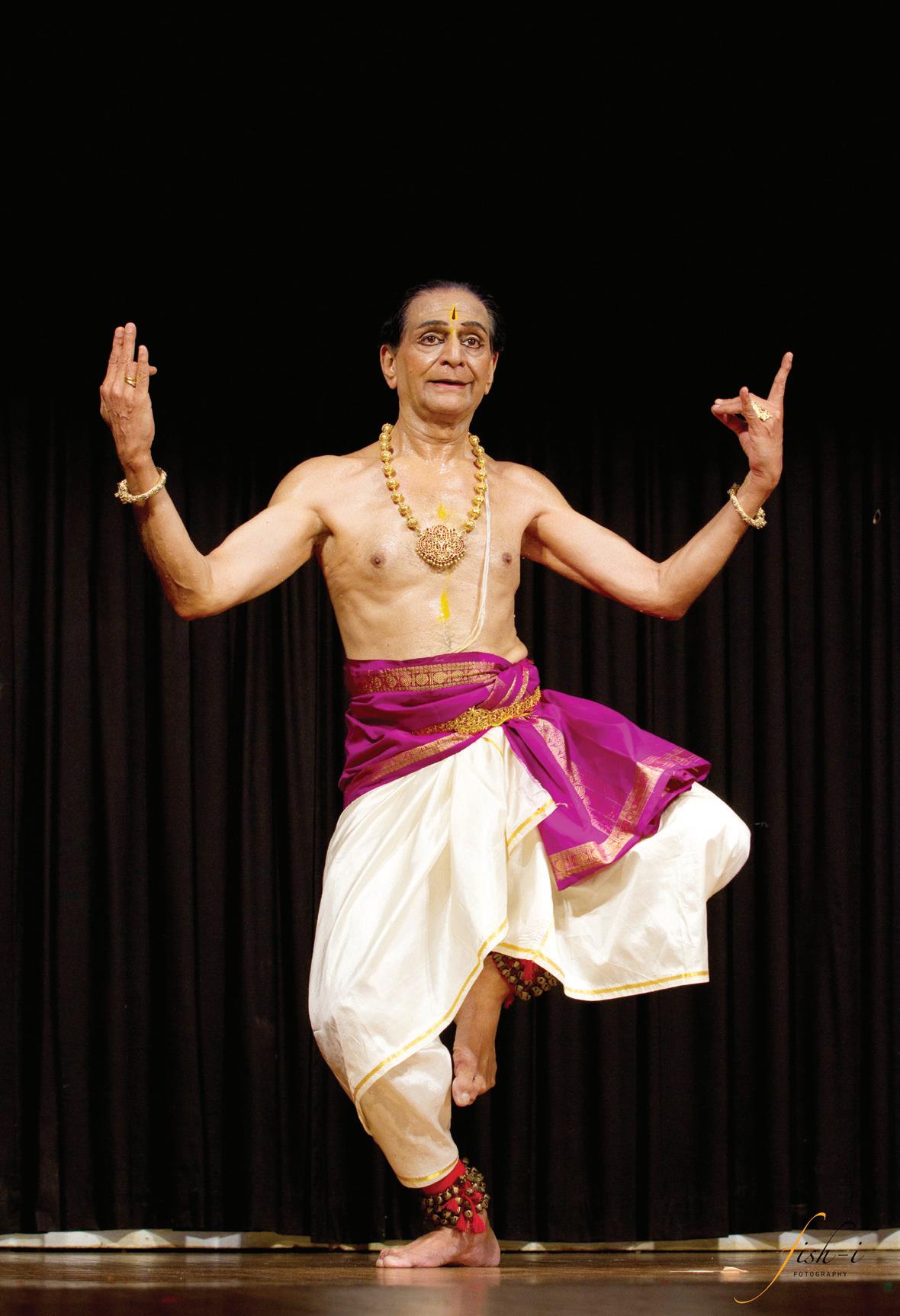
“Dance is my passion; it is my life,” said Prof. Chandrasekhar as he addressed the audience at the end of his Sydney performance recently.

A pin drop silence welcomed his address and not a single person in the audience wanted to leave. They wanted more. When most shows witness people walking out during the interval or before the mangalam (final prayer) is sung, this was a difference and was in itself an evidence of the quality of the program. The show titled ‘Parampara: A heritage in expression through dance’ was staged on 27 March at Ryde Civic Centre, organised by the Samarpana School of Dance.
Padmabhushan Prof. Chandrasekhar truly demonstrated the age old saying from the Natya Shastra. “Yatho hastha, thatho drishti, yatho drishti thatho manah, yatho manah thatho bhava, yatho bhava thatho rasa”. When the hands, eyes, mind and soul are all dancing in unison, one is transported to the sublime. Every glance, turn of the head, flick of the wrist, right up to the tip of his fingers, danced in unison… It was clear he was dancing with joy… and from within. He truly transported the audience from the mundane to the realms of the
alarippu was a treat to watch.
The invocatory piece was followed by the Varnam, the piece de resistance of any Bharathanatyam recital. Here Prof. Chandrasekhar chose the very intense and moving Papanasam Sivan varnam, Swami naan in Nattakurinji. This was preceded by a vritham, describing Lord Shiva. The humility with which he held his body in the delineation of the line manitha piraviyum venduvathen spoke powerfully about the dancer as a human in total surrender to the Lord. Every line of the Varnam was sculpted in detail; the difference portrayed in a split second between the masculine and feminine Shiva and Shakthi, in the line maadhor panga the Lord’s name and sang his praises on the namamrutha paname en jeevaname yearning to have a glimpse of the Lord’s feet in the line adum sevadi darisanamintricate, with variation in speed, and it was a joy to watch the perfect postures of Chidambaram Suresh on the on the cymbals and the pronounced with majesty and mastery.
The second half began with the sedate nee, where a mother questions her daughter about her choice of husband, Lord Shiva. The mother says, what attracted you to Gangadharan, the one who has the other woman, Ganga flowing from his matted locks. The mother lists Lord Shiva’s faults with sarcasm and says, maybe you are attracted to his matted locks, maybe the snakes that coil around him, the garland of skulls or perhaps his toddling on bull? Or perhaps his dancing with the beings of the netherworld, or the gifts that your in-laws will shower on you? The myriad emotions reflecting the angst of the mother was communicated through this item with beauty and subtlety: the puzzled look, transferring to sarcasm, intensifying to scorn and concern, and finally an attempt to persuade in vain.
This was followed by the famous piece from the Rama Natakam, Yaro Ivar Yaro Chandrasekhar donned the role of Rama entering Mythila, picking the ball that falls from the balcony and gazing up to lock eyes with the beautiful Seetha.
Prof. Chandrasekhar transported us to that moment in time in the Ramayana as he portrayed the grandeur and prosperity of Mythila, the moment of love at first sight followed by the reflection on who this divine beauty is, the vague sense of recognition from a past birth. The way he walked away at the end of the dance with a backward glance at the balcony at Seetha, brought a smile to every romantic sitting in the audience.
Kalai thooki ninru
Lord Nataraja couldn’t have been performed by any dancer more appropriate. If anyone has longed to see the dance of Lord Shiva or the devotion of a humble human, this is probably the closest they would get as they watched Prof. Chandrasekhar dance that padam beautiful thillana composition of the dancer himself.
The orchestra was made up of stalwarts in the field of accompanying for dance, Chidambaram. R. Suresh on the conducted the performance in a vibrant and energetic fashion. Vocalist Ahilan Sivanandan mesmerized the audience with his resonant and expressive voice. Yogarajah Kandasamy accompanied on the on the violin added a fourth dimension with his soulful playing and special effects.
Shobana and Suresh from the Samarpana School of Indian Fine Arts have to be commended for bringing to Sydney an event which can be described aptly as a reflection of the words “Dancing is the loftiest, the most moving, the most beautiful of the arts; it is no mere translation or abstraction from life, it is life itself.”

24 <> APRIL (1) 2011
STAGE
“ “
Every glance, turn of the head, flick of the wrist, right up to the tip of his fingers, danced in unison…
www.indianlink.com.au
(From left to right) V. Suresh Babu (violinist), Yogarajah Kandasamy (mridangist), Prof. Chandrasekhar, Chidambaram R. Suresh (nattuvangam and organiser), Shobana Suresh (organiser) and Ahilan Sivanandan (vocalist)
The Indian link to Convict Australia
BY ANUSHA MENON


At first glance, it is hard to see an Indian connection in Australia’s convict history. However, it only takes a closer look to realise that India indeed played a pivotal role in shaping what constitutes Australia today, primarily through the numerous Indianbuilt ships that facilitated the transportation of the surplus ‘rotten apples’ of European society to Australia.
Miserable journeys
One of the most important phases of Australian history was the many arduous sea voyages of convicts and other migrants, over a period of 80 years, to ‘temporarily’ settle in penal colonies established across the country. From 1788 to 1868, Australia not only served as a dumping-ground for the undesirable petty criminals of England and Ireland, but also accommodated prisoners from a variety of other ethnic backgrounds, including Chinese, Africans and Indians.
The prisoners came to this country crammed into ships, forced to endure a journey of many months of immense hardship on vessels lacking adequate space. As a result of overcrowding, diseases such as scurvy, dysentery, typhoid fever and

smallpox were rampant and claimed the lives of many on these ships.
Most of the ships used for transporting these prisoners were built in India. They were ordinary, old ships not equipped to carry the number of passengers that they did and virtually all of them had performed years of useful service between Indian ports and on voyages to China before they set sail for Australia.
However, after 1843, an increasing number of vessels newly built in India, were chartered to carry prisoners. Most of these had been built in Calcutta, which despite its dependence upon imported timber, was one of the flourishing centres of Indian shipbuilding. The list also included Cochin, Bombay and some other ports across the Indian Subcontinent.
Made to last
In many respects, the Indian-built ships made ideal convict transports. They were considerably larger than their British counterparts and were built to survive years of heavy use. These vessels simply refused to wear out and if they were ever scrapped, it was often because they simply went out of fashion.
The ships exemplified incredible durability, as highlighted through two of the ships: the Cornwall, weighing 827 tons, and the smaller Fairlie, weighing 756 tons. Both these ships were made in Calcutta and were 40 years old when they arrived
with prisoners at Hobart in 1851 and 1852 respectively. They were also capable of making outstanding passages of 107 and 114 days from England to Hobart.
The Fairlie, built on the Hooghly River in Calcutta, was named after William Fairlie, a successful English merchant who lived in India. Fairlie established an agency house in Calcutta, which had one of the largest ship fleets of the early 19th century. The Fairlie was one of the many Indian-built ships the agency house owned.

The Cochin-built Navarino was launched in 1808. It was 33 years old when it made its first voyage as a convict ship in 1841. The Maitland and Neptune III, both products of Calcutta shipyards, were each 36 years old when they made their last voyages as convict ships in 1846 and 1850 respectively. Perhaps one of the most famed ships utilised for the transportation of convicts to Australia was the Lady Kennaway. Although Calcutta relied heavily on imported timber to build ships, it did manufacture its own timber and teak, which was the product of a tropical hardwood tree native to Southeast Asia. Teak was used to build the bulk of Lady Kennaway in Calcutta in 1817.
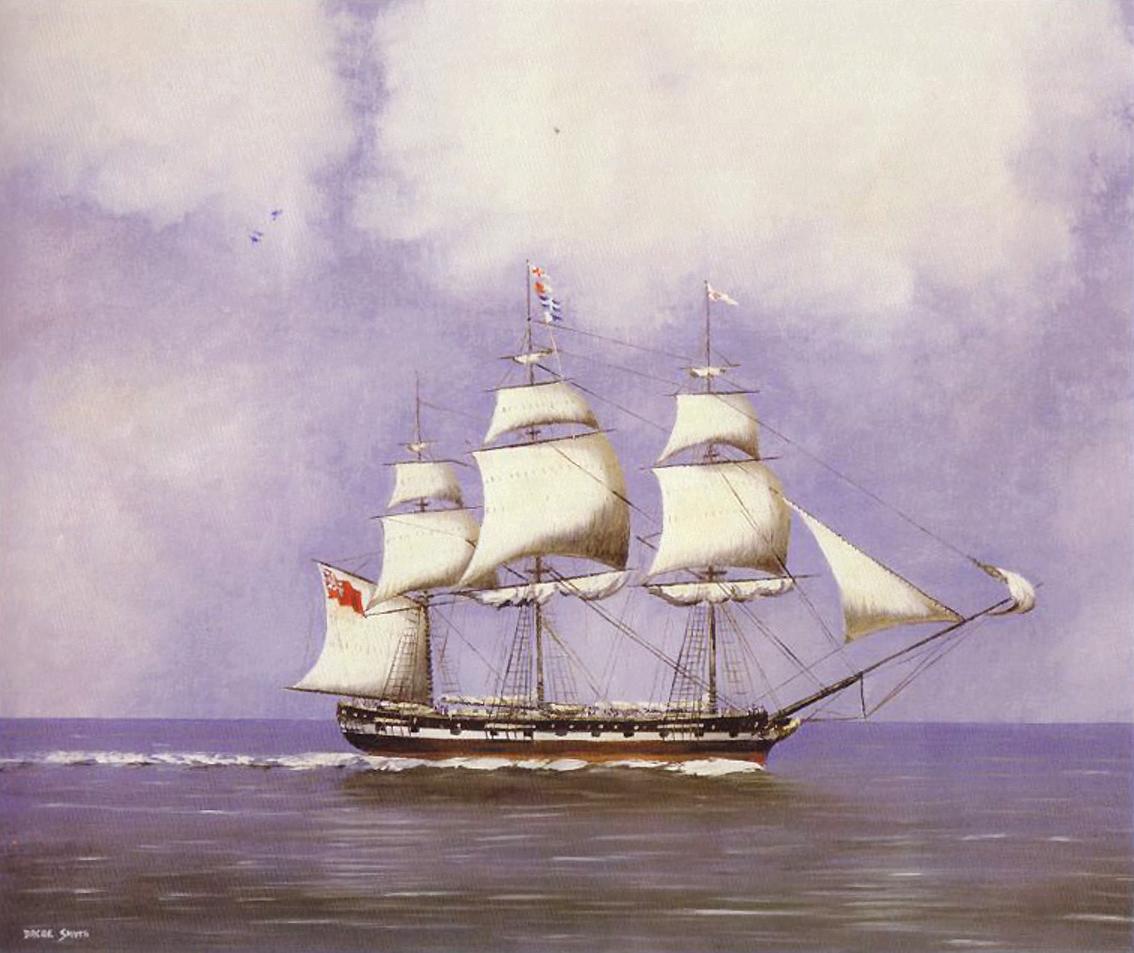
In 1851, it performed a passage from Portsmouth, England to Hobart in 112 days - an incredibly efficient journey at the time. Lady Kennaway was employed to carry immigrants to Australia on at least four occasions, although it was perhaps more recognised in Australian history as a convict transport ship during the 1830s. The ship
carried over 850 convicts and hundreds more immigrants to Australia and achieved an overall lifespan of over forty years. After an unforgettable time of valuable service, the Lady Kennaway eventually began to founder. The teak that was used to build it was salvaged from the hull of the ship by the local East London merchants and utilised in the construction of many of their houses on the West Bank.
They were ordinary, old ships not equipped to carry the number of passengers that they did and virtually all of them had performed years of useful service between Indian ports and on voyages to China before they set sail for Australia.
The convict ships to Australia were stopped in 1868, by which time they had brought more than 160,000 people to the land down under - people who eventually made this country their home. A large number of these Indian-built ships continued to bring to Australia immigrants from all over the world for years to come.
APRIL (1) 2011 <> 25 NATIONAL EDITION
1 3 2
Many of the early ships that came to
www.indianlink.com.au
1. LR Lady Kennaway 2. Portrait of William Fairlie of Calcutta 3. Hooghly River
A vision beyond Oz
A group of Sydney doctors take their skills to the downtrodden in India
 BY RAJNI ANAND LUTHRA
BY RAJNI ANAND LUTHRA
They describe their annual trip to India as “one of the most rewarding experiences” of the year.

For one group of Sydney-based doctors, the India trip is not exactly a holiday, though. They travel to rural regions to perform cataract surgeries for some very poor people.
The organisation Vision Beyond Oz, set up by Dr Shailaja Chaturvedi and associates in 2002, has been doing sterling work in Uttaranchal, UP and MP states in India.
“There are over 2 million people blinded by cataracts in India and each year an additional 400,000 become blind due to cataract,” Dr Chaturvedi told Indian Link . “The cataract operation is one of the most cost-effective forms of health interventions. Nearly half a million cataract operations are performed in India annually, but this barely covers the urban population”.


Vision Beyond Oz is helping address this issue in the rural areas with a sustainable model for the highest quality eye-care with modern techniques.
The activities have so far been based at an ashram in Rishikesh run by spiritual leader Swami Chidanand Saraswati, president of the charitable Parmarth Niketan. A defunct operating theatre was provided within a small Ayurvedic hospital in the area in 2002. Over the past eight years, it has been converted into a modern eye surgery unit fitted with the latest in operating equipment.

Nearly 1000 patients have been treated annually at eye camps held here. All are from surrounding rural areas, and 90% of them are poor.
“We advertise the camp a month before it actually takes place,” one of the doctors revealed, “and word gets around. Now, the case is that people wait for us each year - Jab Australia ki team aayegi, unse karvaayenge , they say”.
The project is self-funded. The team includes four ophthalmologists, two anaesthetics and a general doctor, all from Westmead Hospital, all of who pay for their own expenses. They employ locally trained paramedics for assistance, to whom the experience is an added attraction.
Outcome studies for the early work at Rishikesh revealed such high success rates that the model has now been taken to Fiji as well. The Uniting Church now funds a Parmarth project at Fiji, although
the ophthalmologists, anaesthetists, orthoptists and specially trained nurses that are involved in this program each donate a week of their time graciously to
“The experience and expertise of the volunteers in both projects are credited for their 100% success rate”, a doctor with the Vision Beyond Oz revealed. (The team requested anonymity for purposes of this article).
Buoyed by the success of their voluntary work in cataract surgery, Vision Beyond Oz decided to expand their services to other forms of interventions as well. Mental health has been another area in which work has begun. Two clinics have been held so far in which Fijian post graduate students in psychiatry have come out to Australia briefly to gain experience.

The team is currently in negotiations to associate themselves with GAPIO (Global Association for Physicians of Indian Origin) which was formed early this year and has already set programs in action including voluntary work, support
at eye camps held here. All are from
areas,
them are
in collaborative research and medical education. Such a tie-up will not only see their resources increase, it will also help in dealing with bureaucratic obstacles that are the bane of operations such as these. The Sydney-based doctors revealed that there has not been much help forthcoming from Indian government agencies in helping transport equipment over.

“We’ve now decided to handle the transport issue ourselves,” one doctor revealed, “but we would still like venues where we can conduct our operations, and maybe some basic security at the spot”.
In this regard, private foundations such as Parmarth have helped where government departments have failed.
It is hoped that the lobbying power that GAPIO will bring, will help.
Meanwhile, the work continues for Vision Beyond Oz. The next project is scheduled to be held at Barsana near Bridavan and will commence shortly.
26 <> APRIL (1) 2011 INDIAN LINK
www.indianlink.com.au INDIA-OZ
Nearly 1000 patients have been treated annually
surrounding rural
and 90% of
poor.
1. Dr. Jay Chandra operating
2. Juvenile diabetic with bilateral cataracts
3. Dense, mature brown or white cataracts
4. Congenital cataract
5. Lautoka Hospital, Fiji
1 2 5 3 4 6
6. Parmarth Ashram

APRIL (1) 2011 <> 27 NATIONAL EDITION
The Favourite Honda Jazz
The Honda Jazz has been a class favorite in Australia since its release in 2001. The current model is longer and wider than its predecessor resulting in more interior room and storage. More on that later.

Typically Honda, the Jazz comes well equipped with power windows and mirrors, central locking, single in-dash CD player, ABS, Dual Airbags and Electronic Brake Force Distribution. And that is just on the base 1.3 litre GLi model! As another improvement, all 2011 Honda Jazz models now have VSA (Vehicle Stability Assist) as standard fitment. This feature essentially is activated when it detects that the car is sliding either in understeer or oversteer situations. It can be a lifesaver.
Moving up to the 1.5 litre Jazz VTi it has some added safety equipement in side and curtain airbags, a multi-function display and security alarm.
The VTi-S adds to the VTi features with front, rear and side skirts to complement a set of 16 inch alloy wheels. Paddle shifters on the steering wheel add to the sporty flavour.
Performance and Economy
While the engines seem small in capacity, Honda has managed to squeeze the most out of them using Honda’s i-VTEC technology. This technology adjusts the valve timing to suite the performance required. During hard acceleration, possibly when overtaking, the valve timing is adjusted for maximum power to ensure adequate performance. At the other extreme when stuck in traffic, the engine shuts down one cylinder to aid fuel efficiency.
The 1.5 litre engine has slightly more power and torque for even better performance with only a small fuel economy penalty. Both engines come with a standard 5 speed manual or automatic gearbox. In fact with a 5 speed auto, the Jazz is a rare breed in its segment. 5 speed autos are usually reserved for more expensive and larger cars.
Engine outputs are 73kw and 127nM for the 1.3 litre and 88kw and 145nM for the 1.5 litre engine. Combined fuel economy is as low as 5.8l/100km for the manual 1.3l to a maximum of 6.7l/100km in the auto 1.5l!
Interior
The interior of the Honda Jazz is one of the best features of the vehicle. In fact, there simply are not any other vehicles in its class that has the level of ingenuity that Honda has managed with the Jazz interior. It needs to be experienced to be believed. There is ample storage for almost all things the average person would take with them in the car, and room for others items you would struggle to fit in a large sedan.

There are numerous storage bins, large 337 litre boot with the seats folded down and doors that open to 80 degrees for easy in and out access. It’s easy to load shopping bags, kids and boxes amongst other things.
It’s no wonder Honda have sold more than 2.5 million world wide since 2001.
Singh Food and Spices


28 <> APRIL (1) 2011 A s ip c e s h op w ith 143 Stephen Street (cnr Sackville Street), Blacktown Phone 02 9676 4677 enquiry@singhfoodspices.com.au www.indianspices.com.au
Quantity Quality Service
www.indianlink.com.au ADVERTORIAL

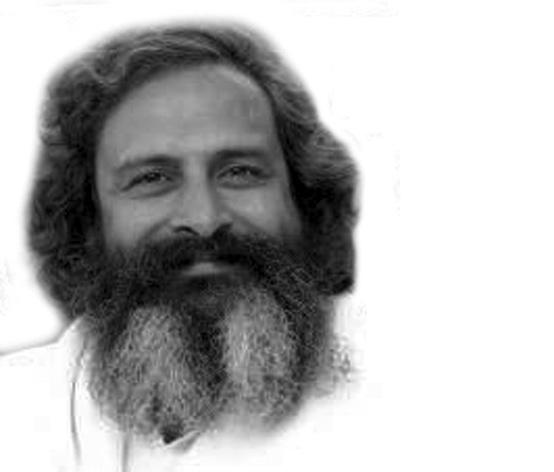

APRIL (1) 2011 <> 29 NATIONAL EDITION For expert coaching in Lowest Fee Guaranteed IELTS ENGLISH GURU Suite -1, 71 A Macquarie St, Parramatta, Phone 0411 520 546, 9687 9741 www.englishguru.com.au • Power Packed Sessions. • One and Two Weeks Crash Courses Available. • Money completely refundable, if not satisfied with the first tuition session. KNOW THYSELF AS SOUL For more information... Contact Sita 0408 880 155 www.santmat.net.au Know Thyself As Soul Foundation is a not for proft association incorporated in NSW
Mat is a practical
on meditation,
to
&
Sant
spiritual path based
ethical living, service
others
love for all creation. Its goal is to enable the soul to return & merge into its source; the purpose of human life described by mystics of all traditions. Discipline & dedication are essential, as is the help of a competent living master. Entry is via a preparation program. There is no charge at any stage.

30 <> APRIL (1) 2011 INDIAN LINK
“We always make our travel arrangements through Ram World Travel for its excellent service and best price!”
ONE STOP SHOP FOR:
* Competitive international airfares to all parts of the world

*Special airfares to Indian sub-continent
*Package and tailor made tours to India and Nepal
*Holiday packages to all parts of the world
*Round the World Airfares

*Hotel accommodation, car hire and guide services
*Travel Insurance
*DAILY DEPARTURE TOURS OF INDIA FROM: $975 P.P (ask for color brochure)
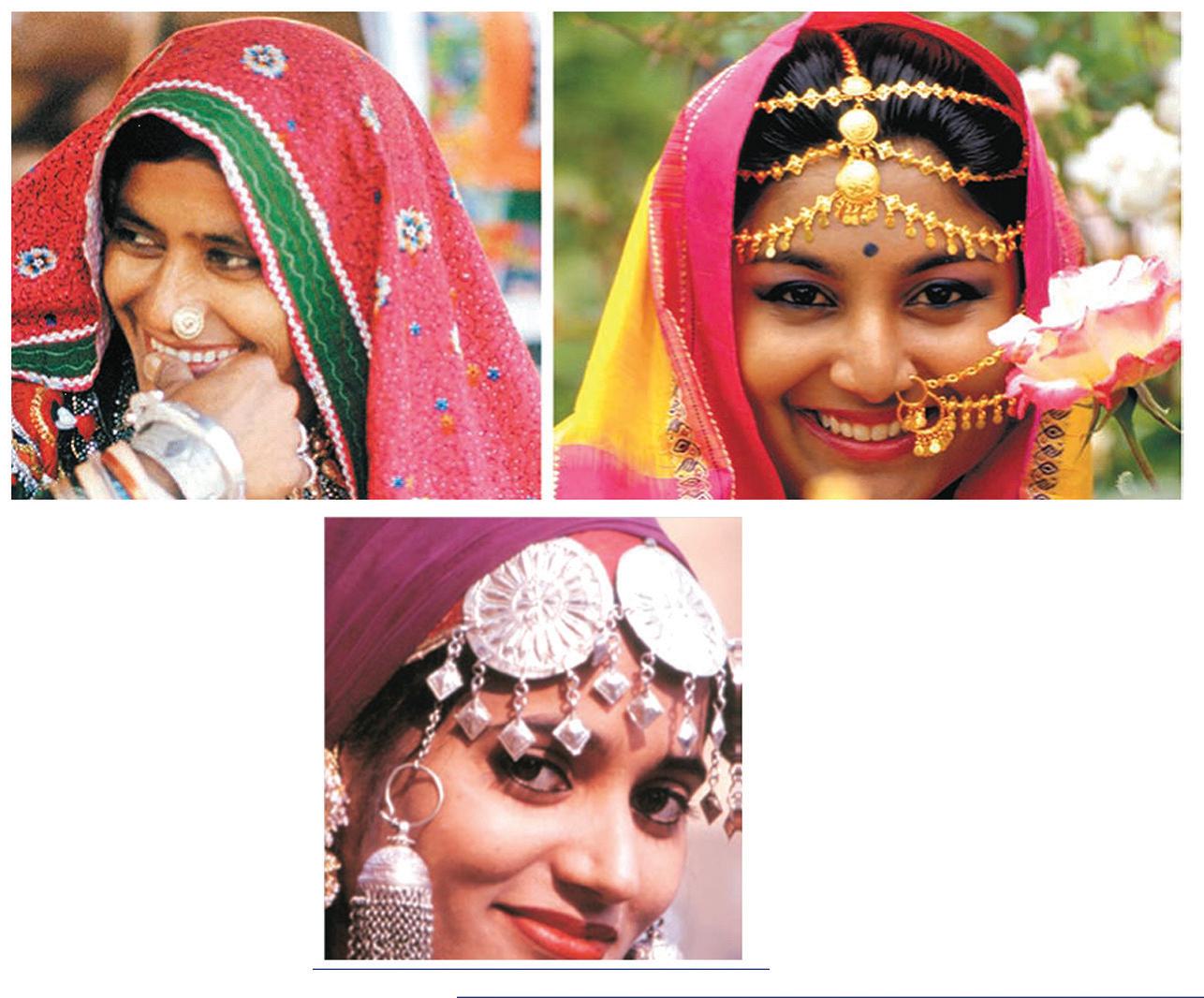

5/32, York Street, Sydney, NSW 2000. Tel: (02) 9262 1661 Fax:(02) 9262 1217
Email: ram@ramworldtravel.com.au Web: www.ramworldtravel.com.au
South West Sydney
• Supermarket - Recession Proof – Consistently increasing profit - 1.5 person operation - $25,000 to $27,000/week turnover - very low rent$399,000 + SAV
• Italian Restaurant - Quality Fitout - $18,000 to $20,000/week turnoverCurrent owner willing to keep 33% share in the business - AT $399,000 +SAV , CAN YOU FIND A BETTER OPPORTUNITY
• Car Rental Business - Potential Unlimited - Cash Flow Day ONEProfit increasing every year - WHERE IS GLOBAL FINANCIAL CRISIS..?? - Only $150,000 + Takeover of Hire Purchase & Leased Fleet
Sydney & South Sydney
• Long Established Italian Restaurant - 6 days/week - good returns$30k++ per turnover during X’Mas Only $295,000 + SAV
• IT business - 2 retail stores - $160k+ income for owner operator –Established for 10+ years - $320,000 including stock of approx $50,000

Northern Beaches
• Kids Clothing and apparel store - Strong revenue, 8 year history, great location-price negotiable
• Manly Coffee shop - 3 day work week for owner, 12K NET for owner per month-300K
• Seafood Takeaway/Cafe - 1 minute walk from Manly beach, recent fitout - 7 Day trading – Trial Period Available, $180k
If you are interested in buying any of the above businesses or would like to engage our services to find you a suitable business, please contact Taran Singh at Sunbelt NSW on 0433 107 356 or email taran@sunbeltnetwork.com.au Sunbelt is the largest business broking network in the World with offices in 12 countries and our presence in 5 states in Australia.

APRIL (1) 2011 <> 31 NATIONAL EDITION


















32 <> APRIL (1) 2011 INDIAN LINK


APRIL (1) 2011 <> 33 NATIONAL EDITION
India still in carnival mode
Be it celebrities like Amitabh Bachchan or IT professionals or common citizens –people all over the country hit the streets following India’s World Cup win with the festivities continuing into the early hours of the next day.
Youngsters were seen holding national flags and singing and dancing away to Vande Mataram , Chak De! India and Sabse aage honge Hindustani
“We went to India Gate and celebrated with all our friends. All over, people were screaming and shouting and dancing to celebrate the historic win. We simply loved the enthusiasm. We also saw bikers performing stunts at India Gate,” said Mohit Verma, who works with a software firm in Delhi.
Every stranger became a friend and class distinctions blurred as just about everyone came out onto the streets, leading to huge traffic snarls.
“The traffic was such that some people who wished to go to India Gate had to park their cars at Pandara Road (about 1 km away) and then walk to India Gate. We had to do the same,” said Radhika Sharma, a media professional. “Even Prithviraj Road (in the heart of the capital), which is usually quiet and relatively traffic-free, was jampacked. There were two cars moving parallel to
each other and people in both the cars were waving the national flag and cheering all along,” she added.
People – their faces painted in national colours – cruised along on their bikes and in their cars while screaming and shouting.
“We went to Centre Stage Mall (in Noida) and people went crazy there. They were blowing trumpets and most of them were wearing India T-shirts and had tattoos. It was so much fun,” said Sucheta Bhatt, an HR professional.
Every stranger became a friend when Indian skipper Mahinder Singh Dhoni ended the match by hitting a spectacular six.
“We hit the streets immediately after the win. We were at a pub and the whole crowd came out on the streets. I knew everyone will be on the roads once India wins because I saw that during the India-Pakistan match,” Shashi Verma, a freelance writer based in Mumbai, said.
“I wanted to be part of the revelry. It was crazy on the streets. So many people were out. Dancing to the beat of dhols I’ve never witnessed anything like this before,” Verma added.
Kinshuk Pal, who works with a production house in Mumbai, said: “I was watching the match at my cousin’s place. We were eight of us and when Dhoni hit that six, all of us were ecstatic and we ran
out on the streets to join others. We went around the roads for almost two hours, screaming loudly with people we didn’t even know. It was a great feeling. It was like a festival.” In Chandigarh and Mysore, too, people couldn’t stop themselves from coming onto the streets to cheer for the Men in Blue.
“Everyone was dancing on the roads. There were firecrackers. It was like we were celebrating Diwali. They were shouting slogans like Humse jo takrayega choor choor ho jayega ,” said Shivani Ganju, a media professional from Chandigarh.
Sidharth Shandilya, an IT professional in Mysore, said: “All my colleagues hit the road as soon as Dhoni hit the sixer. They didn’t know who they were hugging, congratulating or dancing with, but people partied till 4 am. It seemed the whole country was celebrating India’s win. It was a sight to watch.”
On Saturday night Bollywood megastar Amitabh Bachchan, too, joined the jubilant crowds with son Abhishek and daughter-in-law Aishwarya Rai on Mumbai streets.
Fashion buyer Alka Nishar of AZA store was delighted with the way the Indian team dedicated the victory to Sachin Tendulkar.
“Only in India will you see the entire team dedicate their victory to one player. Only in India will you see the players lift their (South African) coach and honour him for their victory! Only in India will you see a Pathan lift Tendulkar to honour him and respect his dedication to cricket. No race, creed, colour, caste will ever separate our unity and integrity. We are Indians and we are one!! Jai Hind! World Champions...,” said Nishar.
Mumbai still soaking in World Cup win

Security forces retreated to their bunkers, and shops and establishments opened to brisk weekend business as Mumbaikars resumed their daily course of life the day after a wild, unforgettable night of celebration.
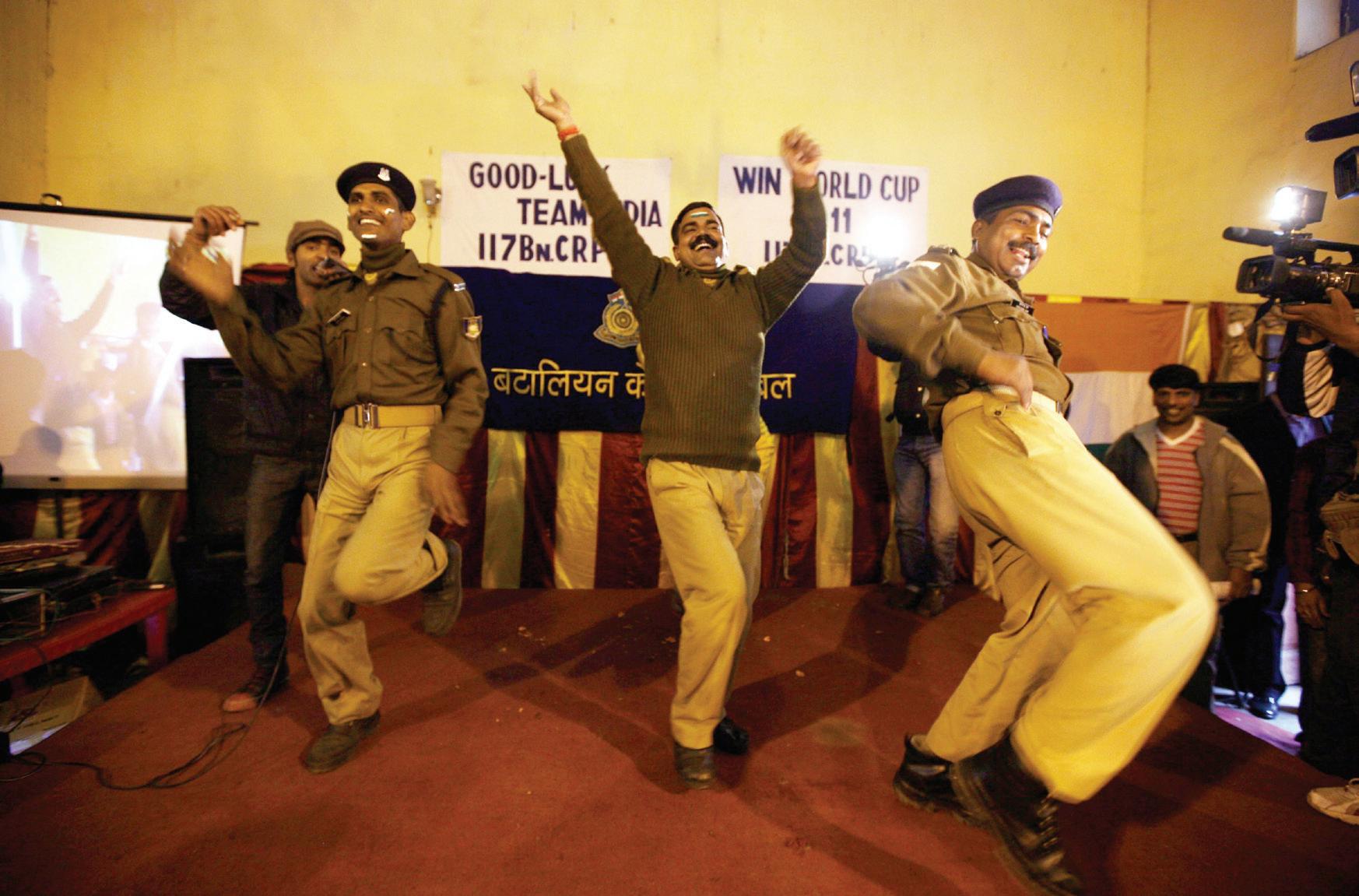
India’s win against Sri Lanka at Wankhede Stadium in south Mumbai made history for the city.
All security measures, barring in some pockets, were withdrawn from south Mumbai. And the next day, the forces went back to their respective camps and
the city came alive with outings, holiday crowds and tourists.
After nearly a week of tight security in south Mumbai, even the police took it easy as the World Cup final ended without a single untoward incident.
Even the suburbs returned to their usual active self. People were seen out on the roads, going about their routine chores with happiness written on their faces.
The crowds prepared to throng shopping malls, cinemas and multiplexes. People were also seen jogging on Marine Drive, Chowpatty, Five Gardens, Juhu Beach, Bandra Bandstand and queues were forming for the boat trip to Elephanta Islands and Mumbai Harbour joy rides.
However, the backbone of Mumbai’s night life – pubs and clubs – came alive only later in the evening after having worked practically till dawn.
Happy ‘next-door-brother’
India has won: Pakistan
It would have been wonderful if Pakistan had won the Cricket World Cup but the Indian team deserved to win, said many Pakistanis who avidly watched the final between India and Sri Lanka and cheered their “next-door-brother.”
Unlike India, there were no firecrackers or euphoric crowd running on the streets of Pakistan’s cultural city, but the people supported the Indian team in their grand victory in Mumbai.
“We would have loved to see Pakistan winning the World Cup, but the Indian team deserved it because they played well. So three cheers to India,” said Saima Mohsin, an architect.
Though in the beginning there were some who cheered for Sri Lankan team, but when it became clear that India was close to victory, everyone started cheering for India and they were happy that India had won the cup. ‘When Pakistan lost to India in the semifinal, I knew I was supporting India because we two countries are very close, like brothers, so I cheered for India, all through the match,” said Ehsan Ul Haq, an IT consultant.
Congratulations for the Indian victory started pouring on social networking site Facebook.
Zahir Rahimtoola, a businessman, wrote: “Congratulations India.....very well crafted victory by Dhoni and his men.”
Shamira Mitha echoed the same sentiment: “The best team did win!!! Well done India....!”
According to designer Huma Adnan, the Indian team was the strong contender to win the World Cup from day one and looking at the way India played, the win was no surprise.
“The Indian team had a strong batting line up, everyone knew that. In the final, they just proved how much they deserved to win this cup. They wouldn’t have won if they were a weak team. Chasing more than 270 runs effortlessly is no joke and Indian team did it wonderfully,” she said.
Bilal Ahmad, a retailer, feels the final match belonged to youngsters of the team who rose to the occasion and kept their cool in the nerve-wracking situation.
“When you lose two early wickets, and that too senior players, there is a lot of pressure on the middle-order batsmen, but Gautam Gambhir and Virat Kohlithe two young lads did a commendable job. It was not at all an easy situation with millions looking at you to win the Cup. The result could gone have either way if they had lost their cool,” said Ahmad. But there were many people who did not watch the final because Pakistan was
34 <> APRIL (1) 2011 INDIAN LINK
Anil Kumble gets to share the moment
Photo: AP
Indian soldiers, stationed in Srinagar, break into dance
Photo: AP
out of the game.
“I know India has won, but I don’t care. When Pakistan lost, I had no plans to support any other country. I love my cricket team and inshaallah ! we will win the next World Cup final, and then you can ask me how I am feeling,” said Mushtaq Hassan, a local.
Another generational change
If the previous edition of World Cup Cricket marked a shift in the way many in this nation kept track of matches, shifting from transistors to FM-radio enabled phones, the tournament this year saw another generational change.
“I could watch the match on the move and caught up with the rest at home,” he said. “Not that it was cheap. But one can always spare a few hundred rupees –anything for cricket.”
Nishant Ugal, an Airtel subscriber, could not help flaunt his mobile TV service and shared his tablet screen with eager onlookers. “The speed was amazing, like television on the move – no strobe effect and a clear picture.”
Rakesh Nagar, a freelance photojournalist using Reliance Communication’s 3G services for the past one-and-a-half months, also believes that as long as the service is good, money does not matter.
“I had an important meeting scheduled with an overseas visitor in the evening –and as you would guess he was not from a cricket-playing country. But I went ahead to fix the meeting since I knew I could always watch the match live on my mobile.”
New generation mobile phone services also offer features such as video-calls, video streaming and applications to access on the i nternet at superfast speeds on a wide variety of both mobile phone and personal computing devices.
But many in this cricket-crazy nation agree – the World Cup was an eyeopener for the dynamics of 3G telephone services in India and the upcoming Indian Premier League will certainly take it to the next level.
Gilani congratulates Manmohan on India’s World Cup win
Prime Minister Yousuf Raza Gilani has congratulated Indian Prime Minister Manmohan Singh on India winning the cricket World Cup final and expressed hope that the sporting link between their two countries will be fully rest ored in the near future.
India had moved into the final after beating Pakistan by 29 runs at Mohali – a match watched by both Gilani and Manmohan. The Mohali meeting between the two leaders was dubbed as cricket diplomacy.
Gilani commended the excellent performance of the Indian team throughout the tournament as well as in the final match, reporte d Associated Press of Pakistan.
He said the World Cup has been successful in bringing the cricketing fraternity even closer and making this sport more popular around the world.
The prime minister noted that the March 30 India-Pakistan match, which generated exceptionally high excitement and interest among the people of both the countries, also provided an opportunity to their leadership to advance the peace process and build bridges o f peace, trust and confidence.
He expressed hope that the sporting link between India and Pakistan will be fully restored in the near future and the
sportsmen of both sides will continue to play their important role for peace, friendship and amity between the two countries.
Average run-rate highest in 2011 World Cup: ICC
The 2011 World Cup was the first in history to have an average run-rate of more than five per over, the International Cricket Council (ICC) said on April 4.
The average run-rate stood at 5.03 per over in the tournament that concluded on April 2, an ICC statement said.
The previous highest was 4.95 runs per over in the 2007 edition in the West Indies. This trend goes on to show how scoring rate has changed since the early editions in 1975, 1979 and 1983, when 60-overs-a-side matches were played.
In contrast to the overall trend of an increasing run rate, the average runs per wicket has remained consistent throughout the history of the competition. This is with the slight exception of 1979, which was played in disappointing weather early in the English summer.
“The statistics are a clear illustration of the exciting cricket that was played during the ICC Cricket World Cup 2011,” said David Richardson, ICC General Manager (Cricket).
World Cup final viewership broke records
Television viewership increased four times when India and Sri Lanka clashed in the World Cup grand finale with 67.6 million viewers with cable and satellite connections watching it for more than four hours, rating agency Audience Measurement and Analytics Ltd. (aMap) estimated recently.

The match on April 2 got ratings of 13.7, which is the highest for any event so far and when the winning moment arrived, the ratings peaked to 21.44.
“(April 2’s) viewership broke all records. Every Indian was glued on to TV to see the big win! Sixty-four percent of homes (cable and satellite) were watching the game…The match was on for an average of four hours in every household,” Jiniti Shah, vice president, aMap said in a statement.
“Viewership increased almost four times yesterday. Until the quarterfinals, India’s matches had an average rating of 3.7,
the quarterfinals saw it increase to 5, the semifinal ratings went up to 11 and April 2’s big win made it 13.6,” Shah added.
The semifinal between India and Pakistan was watched by 67.3 million people with cable and satellite connections.
In a thrilling match, India defeated Sri Lanka by six wickets to win the World Cup for the second time after 28 years. People across the country came out on streets to celebrate the historic win.
Obama hails India’s victory in World Cup: envoy

US President Barack Obama congratulated the Indian cricket team - “Kings of Cricket” - for bringing back the World Cup to the country after 28 years, US Ambassador Timothy Roemer said recently.
“On behalf of the people of America and President Barack Obama, we congratulate heartily the Kings of Cricket and the Kings of the World for bringing the Cup after 28 years,” the US envoy told reporters after meeting Foreign Secretary Nirupama Rao.
Using words like “spectacular” for India’s World Cup victory, Roemer was equally generous in his praise for Indian
cricket captain M.S. Dhoni.
“We want to congratulate the magnificent decision-making of the Indian captain, Dhoni, who was flawless in exercising great judgement,” he said. Roemer said he had plans to visit India Gate in New Delhi area, which was filled with partying people on the night of April 2, but was dissuaded by his security advisors.
The US envoy had a special word for the Indian security forces for having successfully and tirelessly conducted a safe World Cup.
He also turned his focus on IndiaPakistan relations, pointing out the cricket had been playing an important part of the revival of contacts.
“You have three things working at once in these talks. You have cricket diplomacy, you have the real substance and engagement on issues, which is critical, and then you have the people-topeople ties. That is something which the US applauds,” he said.
Indian Prime Minister Manmohan Singh had invited his Pakistani counterpart Yousuf Raza Gilani to watch the semifinal match between the two South Asian neighbours at Mohali.
APRIL (1) 2011 <> 35 NATIONAL EDITION
IANS
Disappointed Sri Lankan fans after their team’s defeat
Photo: AP
Fans in Johannesburg celebrate the Indian win
Photo: AP



36 <> APRIL (1) 2011 INDIAN LINK


APRIL (1) 2011 <> 37 NATIONAL EDITION
Euphoria!






38 <> APRIL (1) 2011 INDIAN LINK COVERSTORY
6 1
Photos: AP, Ritam Mitra








www.indianlink.com.au
1. Moment of glory
2. A childhood dream comes true
3-5. Sydney fans watch the match at the Wentworth Leagues Hotel
6. Sachin Tendulkar with his kids Sara and Arjun
7. Mission accomplished
8. Sehwag makes time for a fan
9. A fitting farewell for Gary Kirsten
10. Tears of joy
11 10 8
2 5 4 3
11. The captain delivers
9
Tales less ordinary
Three novels by subcontinent women take us to the very heart of the region to highlight its pleasures and failings.
 BY CHITRA SUDARSHAN
BY CHITRA SUDARSHAN

Three novels from three women-authors from the subcontinent – one from Pakistan, the other from Bangladesh and the third from India – are the focus of this month’s IWE review. Maha Khan Phillips, a Pakistani-born author now living in London, published her debut novel Beautiful from This Angle in 2010, and Bangladeshi author Shazia Omar’s Like a Diamond in Sky was published by Penguin India a little earlier.
The two novels focus on the affluent in their society and the generation Y, their excesses and their debauchery. The novels’ main protagonists – who are 20 something – rebel in much the same way against Islamic strictures: promiscuity, drugs and alcohol. In Phillips’s novel set in Karachi, wild child Amynah Farooqui is from a dysfunctional family, unapologetic about casual sex, booze and drugs; however, she’s also smart enough to channel
her rebellion through a provocative newspaper gossip column.

Amynah’s two girl friends, Mumtaz and Henna, are the daughters of a drug baron and a leading politician respectively. When Monty Mohsin, a page 3 regular, starts to make money from Pakistan-bashing by producing a reality TV show “Who wants to be a terrorist?”, Mumtaz and her friends decide to cash in as well by making a documentary on violence against women in Pakistan. They find a childhood friend Nilofar from the village, whom they think is a perfect subject for their documentary. Things begin going pear-shaped when their worlds collide in the making of the project, and their friendship is torn asunder from the pressure that it places on them.
Phillips’ novel takes the usual clichés associated with Pakistan: failed State, radical Islam, powerful landlords, the ubiquitous ISI, and subverts them; at the same time, they are also the target of the author’s savage wit, and she gives us a snapshot of a society that is quietly imploding. Nothing happens, but the disquiet is impossible to shake off. Not unlike Melbourne-based author Azhar Abidi,
Phillips brings Karachi alive while, at the same time, painting a quite bleak future. [In Azhar Abidi’s novel, the patriarch of a Mohajir family tells his children to go and watch a music show before the Islamic radicals ban such

Beautiful From This Angle has its flaws. It’s uneven and could have done with better editing – but ultimately it is a well told story with a wicked sense of humour thrown in for good measure.

Shazia Omar’s debut novel Like a Diamond In The Sky, published before Beautiful From This Angle, is also about a group of young and affluent people who have lost their sense of direction. Deen is a heroin addict, who repeatedly tries to get his life on track, without much success. There are others such as the macho AJ, who is brave but does not have the courage to love; there is a policeman who is fixated on chasing an ‘immoral’ basti-dwelling woman who sells drugs to rich kids; and several other characters. This novel does not quite make the cut, and lacks the literary aura of a Khan Phillips, Abidi or Mohsin Hamid. It seems to have been influenced by a certain ‘filmi’ quality and ambience, and in the end, is very predictable. Nevertheless, the author must be applauded for telling a story about a part of the world we don’t hear enough about. Monica Ali’s Brick Lane, after all, was essentially about Bangladeshi immigrants in Britain, although it had flashes of their lives back home.

Delhi-based Mridula Susan Koshy’s book of fiction If It Is Sweet is a collection of short stories.
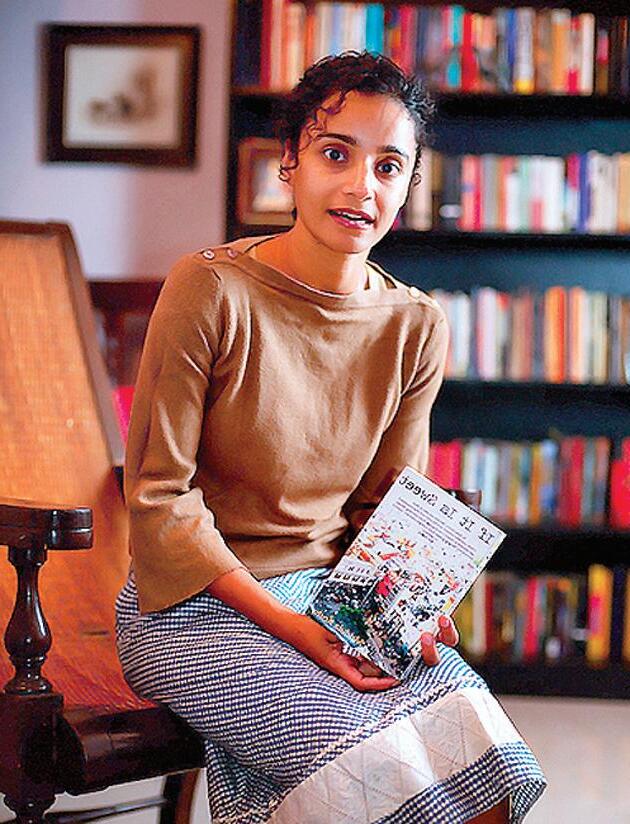
Delhi-based Mridula Susan Koshy’s book of fiction If It Is Sweet published by Tranquebar/Westland, India , is a collection of short stories. She lived in the U.S. for some time before returning to India, and has contributed to literary journals and reviews. Koshy’s stories encompass characters from servants to memsahibs, middle class professionals to labourers. The narrative style is traditional – which is just as well – because that allows her to ask some of the most soul-searching questions in literature and the answers and insights come from all kinds of characters: rich and poor, single and committed. Although the stories are located all over the world, the bulk of them are set in Delhi, and hence it may not be out of place to claim it as an anthology of stories of that city.
Koshy is a gifted writer, and she is able to shine a light on the dark crevices of lives in a city that is unsettling in many ways. Poverty is not necessarily ennobling, nor does affluence lead to degradation: a mother from Manchester who is in India to scatter her son’s ashes, as well as a mother from a basti, both self-analyse their failed motherhoods. This is a thought-provoking book from a talented writer and a book to savour.


40 <> APRIL (1) 2011 INDIAN LINK
BOOKS
Beautiful from This Angle and Like a Diamond in the Sky focus on the affluent in their society and the generation Y, their excesses and their debauchery.
www.indianlink.com.au
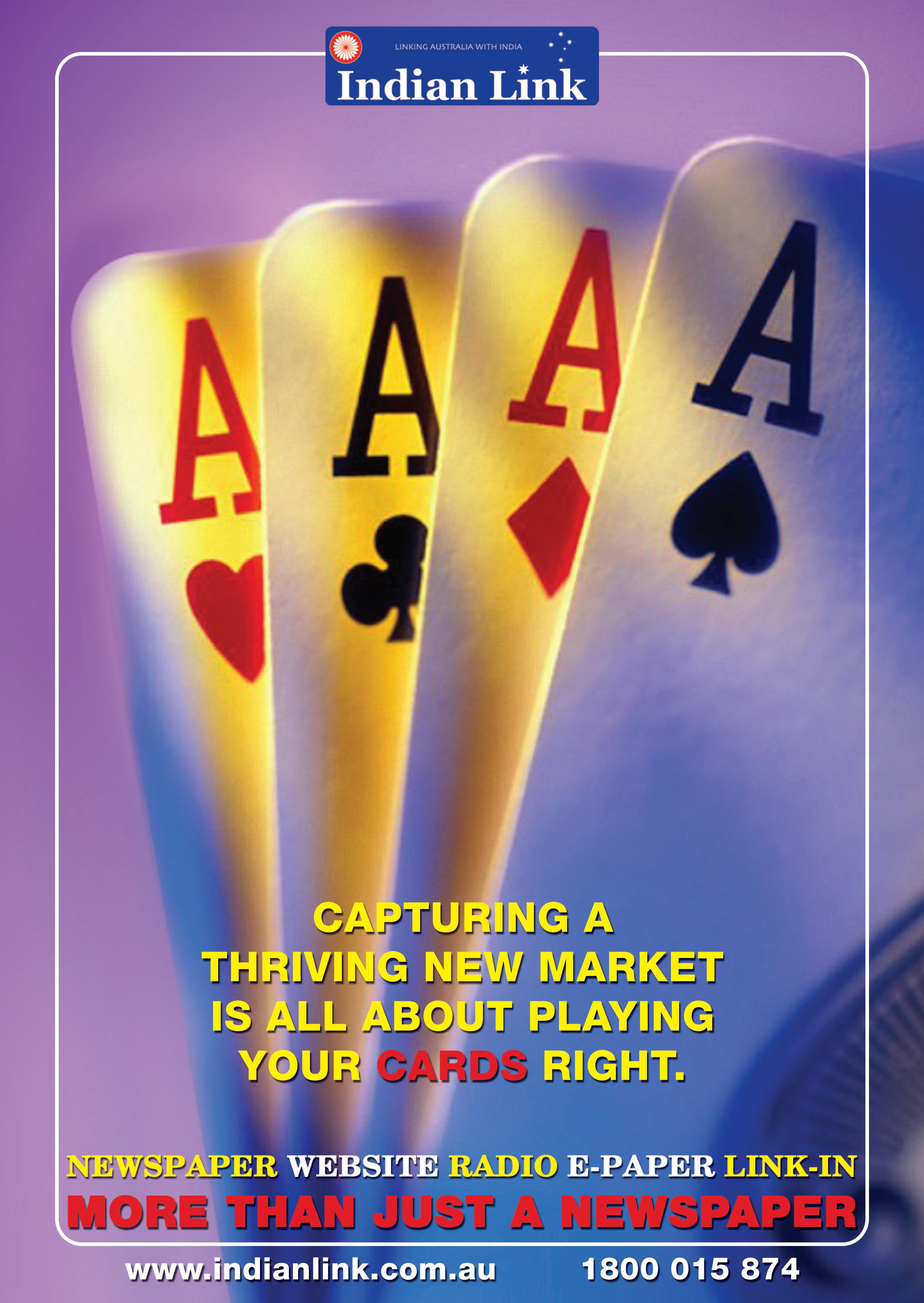
APRIL (1) 2011 <> 41 NATIONAL EDITION


42 <> APRIL (1) 2011 INDIAN LINK

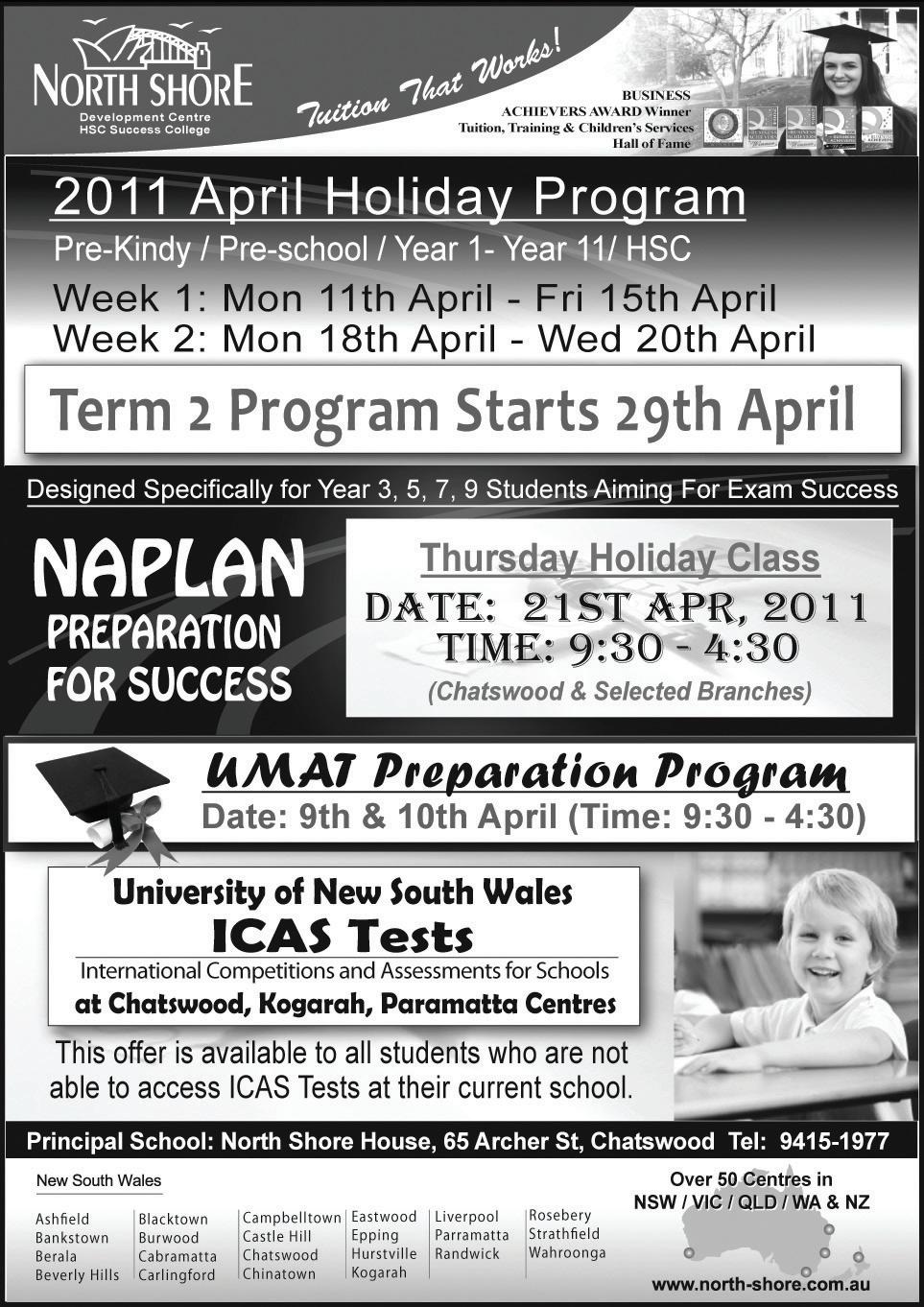

APRIL (1) 2011 <> 43 NATIONAL EDITION
An unfair world order
Should India and China take the rap for the West’s rampant past consumerism simply because they’re now emerging superpowers?
BY ROY LANGE
Fourteen years ago, newly married, I very proudly showed off Mangere Bridge (in New Zealand) to Mitu, my Indian wife. Her reaction has stayed with me. Expecting glowing praise for the lack of suicidal bus drivers and unpopulated nature strips she solemnly said, “It’s just not fair!” It was the first time in her life she saw, first-hand, the gross inequalities of the world’s resources.
Chandran Nair is the founder of the Global Institute For Tomorrow and author of Consumptionomics. He has insightfully highlighted how that inequality could not only be an injustice, but could bring consumer capitalism to its knees.
Globalisation has been an important driver of the economies of developed nations. Like automobile manufacturing joint ventures in India and Japanese plasma televisions in Liberia. Or literally, mountainsides of Australian and New Zealand coal shipped to Asian steel furnaces.
The West sees gobsmacking potential in markets like India where car ownership is 30 per 1000 citizens, compared to 750 per thousand in the OECD. They feel justified when they see China become the world’s largest car consumer at only 150 cars per 1000.
This is Nair’s point. The 20 th century’s watermark of success is indiscriminate consumption. India and China, till now deprived of Lycra cycling shorts and iPads, are making quantum leaps in consumerism. Hungry tigers pouncing about after being freed from the chains of homebred Stalinism. This, Nair believes, has to be vanquished for, if the developing world continues to affectionately adopt this model, the world will perish.
If China and India were to have a comparable consumption of cars of 750 per 1000 there simply wouldn’t be enough oil to power 1.5 billion cars.
Nair makes the unsettling claim that Americans consume 9 billion chickens a year and that Asia consumes 16 billion. But here’s the thing. Asia is 13 times the population of the United States and if they were to consume at American levels, by 2050 they would be impossibly consuming 120 billion birds.
Nair projects this vision of increasing environmental disaster that could, ironically, eventuate with a more equal world.
I greatly enjoy Nair’s take on this startling paradox but what is acutely disappointing is his proposed solution. He believes that Asia should almost solely bear the responsibility of reducing consumption of its citizens. He advocates strong government intervention with various environment taxes to ensure that Mr. Singh or Mr. Lee don’t aspire to Mr. Smith’s open plan townhouse. To settle for less than the west, for the greater good.

Last year my eyes welled up thinking what a great humanitarian I was. I went with my father-in-law’s servant, affectionately called Hero, to buy him a mobile phone. Being a tightfisted humanitarian, I purchased the cheapest model. I pompously handed it to Hero, who looks like a Somali pirate, waiting for the flow of tears and great touching of feet. He took one look at the phone, screwed his face up like he had taken poison and threw it back across the counter. ‘Touch wallah chahiye !’ (I want the one with the touch screen!).
Hero is illiterate and comes from one of the poorest districts of West Bengal but he would dutifully see advertisements for local rip-offs of the iphone in the Times of India

The heart of India is now host to the strongest consumerism. They will not take second best, even if it kills the planet. Why should they? Isn’t it absurd to expect India to punish her citizens if they aspire to their western counterpart’s level of environmental destruction?

A draft of this article was shown to friends and I was surprised at the number who insisted that India must further decrease its carbon footprint. Possibly exacerbated by Gillard backtracking on her election promise of not implementing a carbon tax.
Grudgingly, on long careful reflection I feel this has genuine merit. If this planet is to see the next century without its populace choking on Chinese car exhaust and drowning in apocalyptic floods from Russian forest fires, India must equally bear the yoke.
Assuming there are one billion people in the developed world, quick math gives us the equation. If the third world equally shared the burden of nursing our planet back to health they would have to increase their consumption, per capita, by 50fold and the First World would have to consume a 6th of current levels.

The west has molested Mother Nature single handed whilst excluding India from 150 years of industrial progress, and alone must pay penance.

44 <> APRIL (1) 2011 INDIAN LINK www.indianlink.com.au OPINION
If China and India were to have a comparable consumption of cars of 750 per 1000 there simply wouldn’t be enough oil to power 1.5 billion cars.
On popular uprisings
It ain’t the economy, stupid. Good governance is actually about improving peoples’ lives
BY DILIP JADEJA
there’s a general discontent in the air about governance. And it’s not just Egypt and Libya we are talking about here. People seem to be tired of almost all forms of governments: autocracies, democracies, socialists, communists, theocracies and neo

People in many parts of the world have their oppressive, inept rulers. And when they finally succeed in overthrowing their governments, the eternal delay in finding viable alternatives frustrates them even
It’s hard for many to believe there is old, plain-vanilla job of a leader – good lead many to seek a quantum of solace in chaos, joining the mobs, killing others to make their own lives better, scouring ships as pirates for a life of loot. When that does not work, they turn to nefarious preachers and take their own lives and that of others, to find a better life after death.
Surprisingly enough, people don’t need a lot to feel better when the chips are so down. Even in havoc-wrecked make-shift camps short of food, water and sanitation, people can still feel happy to find other like-suffering, like-minded people. People prefer these humbler places and humbler people to an eternal life of grind under self-serving politicians.
What has gone wrong with the world and its political systems, the galaxy of popular leaders of the past, and once all-mighty new ideas in politics?
Democracy as a concept may be 2000plus years old, but it seems to have become like a technology whose last improved version was released some 300 years ago in America. While many continue to accept it as the best system of public governance, the American democratic dream stands well and truly shattered for many others.
Democracy seems to have failed in two regards. Firstly, from Clinton to Bush and Howard to Gillard, seemingly trustworthy leaders make promises to people only to break them later for their political
advantage, in the name of global good. Secondly, the two-party dominated system of government means that someone only has to appear to be better than others, but no one needs to be good enough to govern, in order to hold the reins of governments. Repeatedly exploited, these two political ideas became weapons of mass trust destruction.
It will be a mistake to think that people are against just Mubarak or Gaddafi, Saleh or Mugabe. People are as much against the seemingly-nice-and-lovely Kristina and Julia. Blair to Howard, Manmohan to Zardari, Naotao Kan to Hu Jintao - many other leaders have not lived up to their expectations. Many say Blair, Howard and Bush lied about nuclear weapons of Saddam; Manmohan allowed the best part of a trillion dollars to remain piled up in Swiss banks, and King Abdullah built ‘Taj Mahal’ style homes “in the face” of their poor. ‘Kings’ and ‘Queens’ continue to get a public cheque for their wealthy lifestyles while the homeless poor from Britain to Belgium cannot get their daily bread and soup. Governments donate billions overseas, but ignore the homeless poor on their streets!

Masses in Sicily and Sao Paulo now live off mobsters. From Afghanistan to Yemen, Al Qaida lights up the dream of happier lives –or death.
And yet, the message has not sunk in. Western politicians still think good governance is about good economic headlines. Neither Bill Gates nor Warren Buffett would subscribe to such a simplistic idea.
So whether you are Tony or Julia, Barak or David – you must know that good governance is about providing people freedom from corruption; freedom from irreversible poverty; cheaper access to food, home and transport; freedom to speak, and freedom to question government about decisions that affect their lives.


People are not against taxation, as long as governments tax properly and more equally - don’t go looking to tax every element in the periodic table. Remember, more cars need more roads, more cities need more trains. Technology is capable of dramatic improvements to people’s lives. Making technology more affordable by enabling healthy markets with real competition and honest businesses, will have a positive impact on society.
Let the good overwhelm the world, or the bad surely will.
APRIL (1) 2011 <> 45 NATIONAL EDITION
www.indianlink.com.au OPINION
Democracy as a concept may be 2000plus years old, but it seems to have become like a technology whose last improved version was released some 300 years ago in America.
Ready, Set, Goa!
Although this state is renowned for its leisurely attitude towards life, its historical and cultural roots go back centuries
BY THOMAS E KING
Nature has been exceptionally kind to Goa. Its fertile and flowering land is covered with verdant forest; coconut, cashew, jackfruit and mango groves interspersed with jade green paddy fields; enchanting estuaries; beguiling bays and picturesque coastal hamlets dotted with palm protected villas built in traditional Portuguese style. Likened to a painter’s palette extraordinaire, the exquisite beauty of Goa has been known through the ages. Ancient sages called it Aparanta in Sanskrit meaning a place beyond the end while in Vedic literature Goa was referred to as Gomantak or fertile land
Goa has indeed had a long and chequered history. Once part of the Mauryan Empire, early Hindu dynasties ruled over this beautiful land until they were superseded by a succession of Muslim sultans from the Deccan. In 1380, the Bahamanis were ousted by the Vijayanagar kings who annexed the area to their expansive Hindu empire. Goa remained Hindu for almost a century until 1472 when Muslims once again took control. This religious seesaw came to an abrupt end in December 1510. Ismail Adil Shah, the Muslim ruler at the time, was engaged in a crucial project: the construction of a fort designed to be the centrepiece of his new capital.
Trade flourished as Goa became an important bridge between Europe and the Orient, and with the arrival of scholars from Spain and Portugal, Goa became a centre of culture and learning as well.

The Sultan of Bijapur – and the soon-to-be last Muslim ruler of Goa - must have been dumbfounded when he saw a flotilla of 25 ships commanded by Alfonso de Albuquerque sailing up the Mandovi River. The Portuguese explorer aided by 12,000 men stormed the fort, defeated Adil Shah in a fierce battle and took control of the bastion. de Albuquerque subsequently rebuilt the fort and transformed it into the colonial capital and headquarters for Portugal’s far flung overseas empire.
The place that the adventuring admiral and his forces landed was christened Goa Duorada, or Golden Goa. The little territory soon became the epicentre for a flourishing trade in silks and spices and porcelain and pearls. As Viceroy of Portuguese India, de Albuquerque is credited with starting the economic transformation of Goa. Under following viceroys Goa grew rapidly in both size and statue to eventually rival Lisbon. Trade flourished as Goa became an important bridge between Europe and the Orient. And with the arrival of scholars from Spain and Portugal, Goa became a centre of culture and learning as well.
The Portuguese stayed in Goa for 451 years during which time they built dozens of splendid architectural

wonders. Today little is left of Old Goa, the original capital of the Portuguese, apart from a small but still well preserved collection of cathedrals, churches and chapels. I stood before Se Cathedral, the grandest of these, admiring a massive sanctuary which is considered by many to be the largest church in Asia.
Intended to be the greatest church in Portugal’s string of Asian colonies – which included Malacca and Macau – Se Cathedral was under construction for nearly three quarters of a century. On the outside, the cathedral’s Portuguese – Gothic styling is highly impressive. Inside is a magnificent gilded altarpiece which dominates the cathedral’s massive interior. My footsteps echoed off the distant but decorated walls and barrel vaulted ceiling as I
walked past rows and rows of seats set out for the few parishioners but many visitors who come to be Goa’s old world churches and cathedrals remain a major drawcard but this 3700 sq. km tropical haven offers more. Most tourists enjoy their glimpse of European architecture in an Indian setting but they thoroughly love the state’s long stretch of beaches. And there’s plenty to choose from with more than two dozen crescents of soft sand sweeping southwards along Goa’s 105 km coastline. Some like Candaliim, Calangute and Baga are almost household names while sleepy beaches in the far north and deep south are lesser known.

The closest beach to the state capital of Panaji is an arc of Casuarina back dropped sand called

46 <> APRIL (1) 2011 INDIAN LINK
TRAVEL
1 2 3
Miramar. In one direction this popular beach is only minutes from the secluded and seductive Goa Marriott where we based ourselves for a week. The stylish river fronting hotel is only a few km from central Panaji in the other direction so it was easy to leisurely stroll into the quaint city for a memorable meal or to see its historical sites.
The capital admittedly is not awash in attractions. Panaji’s attractiveness for many visitors is simply its ambience. Portuguese Baroque style buildings, whitewashed villas with wrought iron balconies, avenues lined with gulmohar and acacia trees, palm-lined squares and an overall unhurried character where people take time for afternoon siestas are some of the enticing elements that ensures the Goan capital has a completely different
Travel notebook
Thai Airways International has 46 flights a week linking Sydney, Melbourne, Brisbane and Perth to Bangkok. From the Thai capital there is a daily onward service to Chennai and 11 flights a week on to Mumbai, convenient gateways to Goa. Contact your travel agent for the latest airfare specials and promotions or THAI reservations on 1 300 651 960. See www.thaiairways.com.au
Goa is located around 600 km south of Mumbai. Over the years I’ve bridged the distance by air and rail many times, but still have fond memories of the overnight steamer service (no longer in operation) back in the early 1980s.
A customised tour of India can be organised that begins with a flight to Mumbai and then proceeds by road south through Maharashtra to Goa before continuing on by road, rail or air to Chennai for the return journey to Australia. Boutique travel specialist Beacon Holidays can design customised ‘airport to airport’ tours of Goa and all other parts of India with English speaking drivers, a/c cars and choice hotels. Discuss your travel interests with
as the city’s elegant focal point with dandies and damsels arriving by carriages for lavish evenings of wining and dining. This was the Goa of centuries ago and to many it’s just a chapter out of history.
Maendra Alvares thinks otherwise. The local artist and sculptor is a staunch advocate of preserving the history, traditions, art and culture of old Goa. In an personal crusade to showcase the state’s unique attributes, Alvares has recreated them on a 9 ha. site in rural Goa.
During my update of Goa late last year I visited Ancestral Goa near Margoa, the state’s commercial capital. Set over a quiet landscaped plot, the unique attraction details life in the state from Portuguese times until the early 20th century. I found the open air cultural museum to be much like a life size history book filled with models of traders who undertook
1. The majestic Se Cathedral was intended to be the greatest church in all of Portugal’s Asian colonies

2. Old Portuguese buildings and modern shopping centres line the quaint streets of peaceful Panaji
3. Orange, mauve and indigo combine their hues to produce another unforgettable Goan sunset over the Arabian Sea

4. Tucked away in rural splendour, Ancestral Goa shows a tableau of life as it existed up until 100 years ago

5. Sited opposite the Secretariat Building is a statue showing one way to change the work habits of an Indian bureaucrat!

Photos: Thomas E KIng
specialists at Beacon Holidays on 1 800 667 791 or e-mail mytrip@beaconholidays.com.au See www. beaconholidays.com.au
ACCOMMODATION Set next to the popular Miramar Beach and providing a sweeping panorama over the Mandovi River, the 170 room Goa Marriott & Spa is a showcase resort offering a large riverside-sited swimming pool, expansive buffet breakfast, swish casino and stylish accommodation in a garden-accented oasis of tranquillity. The hotel is 3 km from Panaji’s colourful Central Market and even closer to a stretch of restaurants and a mini mart where all the ingredients for a pleasant picnic can be purchased.
INFORMATION Contact India Tourism Sydney for general information on Goa by phone (02) 9221 9555 or e-mail: info@indiatourism.com. au See www.incredibleindia.com There’s an efficient info-stocked India Tourism Office in the heritage Communidade Building in Panaji’s Church Square. Lonely Planet’s India with its detailed chapter on Goa remains the definitive guide. See www.lonelyplanet.com
or been substantially modernised. Among the ‘community’ there are fish sellers, cobblers, barbers and farmers tending their livestock.
Alvares has also succeeded in showcasing the environmentally friendly aspects of daily life in earlier times: the change in building materials from palm leaves to brick and concrete and the replacement of clay with copper and later aluminium for use in cooking utensils. The village is further enhanced with a spice and herb garden which adds fragrance to the humid air, tree shaded homes, a characteristic tavern and churches. I stood before a replicated sanctuary fronted by the statue of a viceroy and gazed over a tranquil treeshaded vista not unlike those which inspired the Portuguese to declare Goa as the Perola do Oriente, the Pearl of the Orient
now the Passport Office - which has been both a Muslim palace and a Portuguese fort. This latter usage came about, I learned, when Old Goa was abandoned because the nearby port silted up and the Portuguese moved their territorial headquarters to Panaji. The building now painted a pale yellow and the oldest colonial structure in the city was the regal residence for a series of Portuguese viceroys. Today it houses dusty government archives and a lethargic bureaucracy. It’s easy, though, to imagine this still stately building with its sloping tiled roof, carved stone coats of arms and wooden verandas
NATIONAL EDITION
www.indianlink.com.au
4 5
Retracing Ram’s footsteps
BY SANDIP HOR

“This sleepy town of Ayodhya throbs with thousands of pilgrims on Ramnavami day,” says my guide, as we meander through “Ram Janmabhoomi”, the birthplace of Ram.
The seventh manifestation of Lord Vishnu, Ram has been for centuries, a symbol of manhood, heroism and the epitome of virtue, for Hindus.
Ram is the central personality of the great epic Ramayana, the stories of which have enthralled Indians for ages. Godly characters like Ram, Lakshman, Sita and Hanuman are a part of every Indian household, with the ten-faced Raavan being distanced with the mark of evil. Like many other Indians I grew up listening to and reading tales from this mythical epic that gave rise to the desire early in my life to make a pilgrimage to Ayodhya, to touch the grounds of this holy place where the Ramayana is believed to have come to life.
So when I was in Lucknow recently, I wasted no time in making a day-trip to this legendary quarter located only 130 kms away from the capital of Uttar Pradesh.
A destination of pilgrimage, its vast religious and historic significance is not just confined to the Hindus, but spread across Buddhists, Jains and Muslims as well.
A destination of pilgrimage, its vast religious and historic significance is not just confined to the Hindus, but spread across Buddhists, Jains and Muslims as well.
During the pre-historic period, Ayodhya was called Kosaldesa (the land of the Kosalas) and was the hub of the Kosala kingdom which peaked to its glory during the reign of King Dasharatha, the illustrious father of Ram. Then a largely populated and fortified place, it earned respect as the most venerated settlement in India, legend claiming it was built by God and made as prosperous as paradise itself.


During a later period of time, other religions blossomed on its landscape as well.
Legend says that Lord Buddha once lived there and according to the notes of 5th century Chinese monk Faxian, the locale was crowned with over 100 Buddhist monasteries. For Jains, the land is no less significant.
Rishabh Dev, the father of their religion was born there and their holy text stands testimony to the visit of Mahavira, Jainism’s
48 <> APRIL (1) 2011 INDIAN LINK
As Hindus gear up to celebrate Ramnavami, we embark upon a journey into the history of Ayodhya
INDIADIARY
1 2
last Tirthankar to this city. Bhagwan Swaminarayan, founder of the Swaminarayan cult of Hinduism, is said to have started his sevenyear journey across India as a ‘Neelkanth’ from Ayodhya. Unfortunately you see nothing from that glorious period other than the River Sarju on the banks of which the Ayodhya grew, flourished, survived and continues to do so. However my guide tells me that outside the townscape are several mounds under which perhaps, are hidden ruins from that period, yet to be adequately explored by archaeologists. With the arrival of the Mughals in the 16th century, Ayodhya lost its influence to Delhi and later to Lucknow, and never regained it.
The first Mughal Emperor Babar built a large Tughlaq-style mosque with three imposing domes in the early 16th century at a location that is believed by Hindus to be the birthplace of Ram. Because of its significance to both Hindus and Muslims, the site became a matter of contention and hit newspaper headlines in December 1992, when it was demolished by a mob of Hindu activists. Several hundreds died in the rioting that swept through India following the mosque’s destruction. Since then the situation has remained pretty tense in this pious land. So the first thing that struck me after entering Ayodhya was the presence of large police and paramilitary forces at every corner of the shanty town. “It’s surely not to scare visitors, but to ensure the safety of all,” comments my guide as we walk through narrow alleyways. We are flanked on both sides with decrepit houses, many still with ornamentally decorated doors, shops displaying local handicrafts and photos of countless Hindu gods and goddesses, and eateries selling hot samosas, jelabis and masala chai.
We end up standing in a queue with several others to have a glimpse of the disputed site. Security is very tight, all bags searched thoroughly and you are
not allowed to take in your mobile phone and camera. However, disappointment grips me when I find there is nothing much to see at the spot today, though I feel a chill of deep ecclesiastic feeling down my spine as I think that I stand on the site where one day, perhaps God became flesh. It’s a similar kind of emotion I experienced earlier when visiting the birthplace of Jesus at Bethlehem.
Ayodhya town, very rustic in character with limited facilities for international tourists, is rife with temples and religious sites and hopping from one to the other takes up most of any visitor’s time.


Standing on elevated ground in the western part of the city is Ramkot, the central place of worship in Ayodhya. The place marks the site of Ram’s fort that once existed. It’s from here that he bid farewell to his kingdom and left for a 14-year exile in the forest with his three brothers and wife Sita. Quiet and carefree on any ordinary day, the domain comes alive during Ramnavami, when thousands of worshippers arrive to celebrate the birthday of Ram with pomp and grandeur.

Hanuman Garhi where the God Hanuman is said to have lived during Ram’s time; Kanak Bhawan, said to have been originally built by Queen Kaikai for Sita; the ghats of River Sarju, as revered as the ghats of River Ganges in Varanasi, are the other sites that draw a visitor’s attention.

When entering Hanuman Garhi with a hundred other people, I see the security personnel stopping a man with a thick beard covering his face. They ask for his identity, suspecting he could be a threat of some kind. Obviously embarrassment shadows him, particularly as he is the only one picked from the lot entering. He probably wonders if a beard changes someone’s religious identity, as I do too while walking up a flight of 76 steps to the loud calls of “ Jai Ramji Ki ”, “ Jai Hanuman Ji Ki ” and other slogans from ardent followers.
Travel notebook AYODHYA
GETTING THERE
Ayodhya is only 3 hours by road from Lucknow which is connected by rail and air to all major Indian cities. The closest international airport is in Delhi where Thai Airways (www.thaiairways.com) have regular flights from Australia via Bangkok.

ACCOMMODATION
Other than the Uttar Pradesh Government Tourist Lodge, there is no suitable place
to spend the night, so it’s best to make a day-trip from Lucknow where hotels and guest houses are available to suit every budget. La Place Sarovar Portico Hotel (www. sarovarhotels.com) in the city centre is a good option.
MORE INFORMATION
Check out the India Tourism website (www. incredibleindia.org) or call their office on 02 92219555
APRIL (1) 2011 <> 49 NATIONAL EDITION
www.indianlink.com.au
1. Ayodhya alleyway
2. Ayodhya palace gate
3. Hanuman Garhi tower
4. Inside Hanuman Garhi
5. Sarju river
6. Kanak Bhawan
6 5 4 3
Since time immemorial there has been a fervent quest for elixirs to make us look youthful. Maybe there is something in the human psyche that drives us to feel more confident and upbeat when we glance in the mirror and see someone who looks younger than the biological truth on our birth certificates. In contrast, we experience lows
Forever young
your skin to age and then try out some natural remedies and take preventative measures.

The major cause of saggy skin is sun exposure. UV rays in the sun damage skin which renders it more prone to wrinkles in the long run. So be sun smart!
Another common culprit is erratic dieting techniques, also known as yo-yo diets, where you lose weight quickly and return to your original size even quicker. This yo-yoing between the two extremes puts a lot of stress on the skin which expands and contracts to keep up with your diets. In the process it loses a lot of elasticity leaving you with wrinkles. To avoid this aftereffect, it is best to lose weight consistently over a period of time to allow the skin to adjust to your new dimensions.
Now here are some remedies to keep your skin healthy and young.
Water
around the lips, lower part of the nose and forehead. It reduces premature facial lines, blemishes, minor scars and spots. It can be used to heal chapped lips as well.
Oatmeal and buttermilk mask
For a simple skin-firming mask combine half a cup of cooked oatmeal with quarter of a cup of buttermilk. Apply on the face and let it dry completely before rinsing off with lukewarm water. This treatment moisturizes while tightening up the pores, and the lactic acid in buttermilk makes the skin look fresh.
Cucumber and yoghurt mask
Olive oil massage
A regular massage is very important to get the blood circulation going in the areas where the skin is sagging. Olive oil is a natural moisturizer and skin firming oil. Massage the skin on your face and body with olive oil for a few minutes before a shower for a firmer, softer skin.
and our confidence takes a battering when we don’t look our best (or in other words when we seem to look our actual age!). And this feeling is no longer a copyrighted property of the fairer sex. Metro males are just as conscious of their physical appearance as their wives or girlfriends. Hence the meteorological rise of cosmetic conglomerates that are coming up with products, or should we say ‘magical potions’ in bottles and jars that promise to make your skin firmer, melt those wrinkles into nothingness, vanish age spots and blemishes, and lighten your hip pocket. Many of these miraculous concoctions are laden with chemicals that sometimes do more harm than good. So if you’re ‘really’ interested in firming up your sagging skin and minimizing the appearance of wrinkles, than it is important to understand what is causing
The first thing to combat wrinkles has to be water. Your skin is like a flower that will wilt without water. Similarly, dehydrated skin starts to sag and wrinkle. Drink plenty of water to address this problem.
Exercise
Inactivity can make your skin look dull and saggy. A lack of exercise causes the muscles to deflate, making the skin hang loose. Exercise regularly to pump up the muscles; this will leave you feeling healthy, restore your skin’s firmness and bring a glow to your complexion.
Shea Butter
It is hardly a secret any more that shea butter is an effective moisturizer known for its skin-firming properties. Massage a little shea butter on your face daily, stressing on the areas
This is one of the best natural treatments for sagging skin. Grate half a cucumber and mix with two tablespoons of yoghurt. Smear on the face and leave for ten minutes before rinsing off. Add a few mashed or grated strawberries for the additional benefit of vitamin E which firms up the skin and is found in many skin-firming products in stores.
Banana mask
Simply mash a banana, spread over the face, leave for 15 minutes and rinse off with tepid water, for an effective skin-firming mask.
Egg white and coffee mask
Used coffee grinds make an invigorating facial mask that works to firm up and tone the skin. Mix ¼ cup used coffee grinds with one egg white and apply evenly on the face. Allow to dry, than rinse off with tepid water. When massaged into wet skin, coffee grounds are known to reduce cellulite and boost blood circulation in the skin.
Egg whites have astringent properties and can give the skin a lift. Whisk one egg white and dab over face and neck. Leave for 15 minutes before rinsing off.
Exercise regularly to pump up the muscles, this will leave you feeling healthy, restore your skin’s firmness and bring a glow to your complexion.
Green tea
Used green tea leaves contain antioxidants and other natural chemicals that can exfoliate skin for a glowing complexion.
Clay mask
Clay absorbs toxins and rids the skin of dead cells. Mix 2 tablespoons of clay powder with water or green tea to make a paste. Apply on face and neck. Wait for it to dry, then rinse off with warm water. For sensitive skin, add milk instead of water.
Steam
Steam works quickly to eliminate the toxins from the skin to leave it looking visibly firm. Try steaming your face for 10 minutes for an invigorating effect.
50 <> APRIL (1) 2011 INDIAN LINK
As we grow older, the urge to look youthful increases; but a few simple steps can help us keep the signs of age at bay, notes FARZANA SHAKIR
www.indianlink.com.au WELLNESS
Maybe there is something in the human psyche that drives us to feel more confident and upbeat when we glance in the mirror and see someone who looks younger than the biological truth on our birth certificates
1 2 3 4
The right kind of skincare is essential to keep the largest organ of our body performing to its maximum capacity
Everyone craves for healthy, glowing, and youthful skin. Well, skin is our largest organ performing several functions. It primarily protects us against the invasion of foreign substances and serves as the transfer point for the release of toxins from our bodies. This is why our skin is truly worthy of our protection and care. Though it is impossible to stop the process of ageing, we can delay it with a good, healthy diet. We tend to spend money and time on beauty aids and cosmetics, but more importantly, beauty comes from within. So if you nourish your body from the inside, you will make a difference to the way your skin looks - and ages. It is often said that the secret to a healthy
Blackberries, blueberries, strawberries and plums
BY GEETA KHURANA

foods for glowing skin 8
complexion is less about what we put on our skin and more about what we put on our plate.
Here are a few foods that will help keep your skin youthful, clear, and the envy of all. But remember that in addition to all these, water is often said to be the simplest, most effective natural and free treatment for clear and supple skin. It prevents dehydration that can produce sebum or oil from the sebaceous glands. Your skin needs water to function at its best; it is recommended that a daily intake of between 6 to 8 glasses of water per day is highly essential and required.
Green Tea
Lemon, lime and oranges

The Vitamin C in these foods promotes healing, helps build collagen and provides skin with elasticity and firmness, helping reduce wrinkles and fine lines. Other foods rich in Vitamin C are broccoli, avocado and tomato. Orange juice is also packed with Vitamin C.
Essential Oils

Essential fatty acids are responsible for healthy cell membranes that not only act as a barrier to harmful things, but also as a passageway for nutrients and waste products to enter and exit the cell. The best-known essential fatty acids are Omega 3 and Omega 6, which must be in balance for good health (and good skin). These good fats help clear blemishes and reduce wrinkles. Though we all seem to get enough Omega 6, most people lack Omega 3 in their diets, which can be remedied by the inclusion of olives and olive oil, salmon, walnuts, and avocado.
Wholegrains

The mineral selenium present in wholegrains is very important for healthy skin as it plays a key role in the health of skin cells. Even skin damaged by the sun may suffer fewer consequences if selenium levels are high, and research proves that skin cells are less likely to suffer the kind of oxidative damage that can increase the risk of cancer. Brazil nuts are also a very good source of selenium. Wholegrains are a good source of Vitamin E that helps protect cell membranes and guards your skin against damage from the sun’s UV radiation.
5 7 8
The common link between these four foods is their high antioxidant content. They are weighed in with the highest total antioxidant capacity of any food and they offer plentiful benefits. Free radicals, say of the kind formed from sun exposure, damage the membrane of skin cells, thus potentially damaging the DNA of that cell. Antioxidants and other phyto chemicals in these fruits can protect the cell, so there is less chance of damage and disintegration. This also guards against premature aging. These fruits may well help keep your skin looking younger for a longer time. 6

The positive properties of green tea for the skin just can’t be beaten. It has anti-inflammatory properties and is protective to the cell membrane. It may even help prevent or reduce the risk of damage from ultraviolet light (such as the burning rays of the sun), and thus reduce the risk of skin cancer. The polyphenols in green tea have anti-inflammatory properties that may also be beneficial to overall skin health.

Avocados
Avocados are high in fat, but most of it is monounsaturated, and is thus considered a healthy fat. Avocado is a good food for skin because, as is the case with Omega-3 fatty acids, it keeps the skin plump, younglooking and helps prevent drying. Avocados contain both, Vitamin C and E, which act well together as a powerful anti-aging combination.
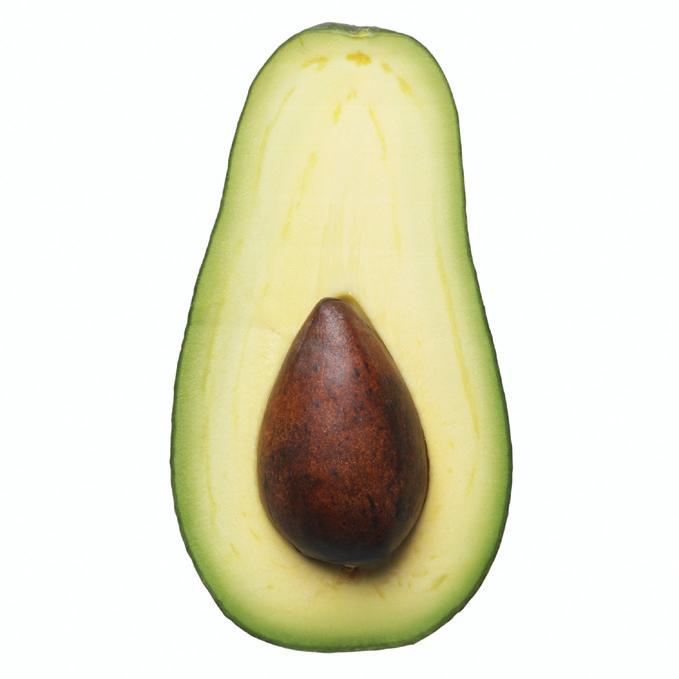
Almonds

Grab a handful of almonds for an extra boost of Vitamin E, an antioxidant that helps protect skin cells from damage caused by ultraviolet light. Vitamin E helps protect skin muscles and tissues from premature ageing, as well as a protection from dryness. Only a handful of these high-calorie nuts will suffice, as they are high in calories. Sprinkle a few almonds on cereal or desserts. Other good sources of Vitamin E are sunflower seeds, hazel nuts, wheat germ and peanuts.
Cocoa
The cocoa bean found in chocolate is packed with antioxidants like flavonoids, procyanidin and resveratol. The flavonoid present in cocoa increases blood flow to the skin, boosting nutrient and oxygen supply - both factors essential for keeping the skin healthy. It also absorbs UV light that might otherwise react with and damage skin cells. But don’t rush off to buy a box of just any chocolate, it is important to pick up only dark chocolates with more than 70% cocoa. And that too, restrict yourself to only a small piece.

APRIL (1) 2011 <> 51 NATIONAL EDITION
www.indianlink.com.au WELLNESS
Celebrating Navroz
Ancient traditions and celebrations come alive during the Persian New Year, as the arrival of 1390 is heralded

white rabbit – although I’m still not sure of their significance!” laughs Bahar.
 BY TIM BLIGHT
BY TIM BLIGHT
or the Persian New Year was celebrated among Zoroastrian and Iranian communities around the world on March 20 - 21. Tables were set, feasts were eaten, the past year was reflected upon and the New Year anticipated, as Australia’s 3,000-strong Zoroastrian community rang in the year 1390 with their cousins on the subcontinent. While the traditional bonfires are not as common at Navroz in Australia, haft sin tables, picnics and dancing are still central to the occasion. While the Zoroastrian community is comparatively small on the subcontinent, large numbers are centered around Mumbai and Karachi.
Bahar Wadia of Mumbai, explained how her family would traditionally mark the New Year. “We would go to the fire temple in the morning dressed in our new clothes, and light a special divo (oil lamp).” In Iran, bonfires are lit, danced around and jumped over into the early morning, symbolically carrying the sun through to the dawn of the New Year. “Also, much like the Chinese calendar, each year an animal and their colour are identified for the new year. For example, this is the year of the
Persian New Year is celebrated at the northern hemisphere’s spring equinox, heralding the beginning of a new season of harvest and light. Zoroastrians customarily set a haft sin table in the lead up to Navroz; haft is Persian for seven, while sin is the name of the Persian letter ‘s’. Typically, a table would be set with seven symbolic items, all of them beginning with the letter ‘s’; saffron, sumac, seer (garlic), sabzi (vegetables) and sib (apples) serkeh (vinegar) and a pudding called samanu Zoroastrians in India have slightly different traditions, but with similar meaning. “As the celebration of spring, a table is set with most things symbolizing the season - lots of greens, lots of wheat, rice, dry fruits, falooda (yum!), and fruit - especially pomegranates. Again a divo is lit on the table. You invite family and friends to join you and your immediate family for a good lunch!” says Ms Wadia.
Zoroastrianism, Iran’s ancient religion, came to the subcontinent during the tenth century with the immigration of ‘Parsi’ communities. Later migration brought the ‘Irani’ community; a different generation of the same religion. Despite their small size, the two communities are prominent in Indian society with various names such as Tata Motors and Godrej being Parsi
enterprises. Model and Bollywood heartthrob

John Abraham identifies as Zoroastrian, as did the late Freddie Mercury, lead singer of British rock-band Queen. World renowned composer Zubin Mehta, late physician and pioneer of India’s nuclear programme Homi Jehangir Bhabha and author Rohinton Mistry are all prominent Parsis.
Inevitably, the Indian Zoroastrian community’s culture has evolved in isolation to Iran’s Zoroastrian community. Norooz became translated as Navroz in the
subcontinent. With a majority of Parsis settling in the regions of Gujarat and Sindh, Gujarati, and to a lesser extent Sindhi became defacto languages of the Indian Zoroastrian community. While Iranian food is traditionally mild, Parsis and Iranis enthusiastically adopted the spicy mélange of flavours in Gujarati food to create a unique hybrid cuisine. Following the solar calendar, the next traditional Zoroastrian festival is the midspring feast.
52 <> APRIL (1) 2011 INDIAN LINK TRADITIONS
www.indianlink.com.au
A Haft-Sim table
Indian Takeaway for Sale
Can be converted into a Restaurant excellent location in Crowsnest.
Outside seating available low overheads, will suit owner operator who wishes to maximize the growth potential.
$15000 golden opportunity DO NOT MISS.
Four year lease available.
CALL – 0422 399 133 ( Genuine Callers Only)
STAFF WANTED
Experienced, good & positive attitudes, strong work ethics staff wanted to join the leading team in Sydney Southwest Indian Restaurant.
• Waiter/Waitress,
• Tandoori Chef,
Accounting Job - Tax Return preparers
MaxTax is a CPA firm established over 7 years ago. The company is recruiting staff for tax return preparation/accounting and admin services. Full training will be provided.
Applicants must have good communication skills, be highly motivated and a self starter. Please forward your resume to clients@maxtax.com.au
Staff Required
Tandoori Chef, Wait Staff & Kitchen Hand required for 7 nights a week in a busy Indian restaurant. Experience essential.
Please call on 0415825355 or 0401313314

Showroom: 1/42 Harp Street Belmore NSW 2192

02-9787 5630
MOB: 0425-249 877 (Raymond)
• Curry Chef,
• Kitchenhand, Call 0411 959 718
• Delivery Driver

APRIL (1) 2011 <> 53 NATIONAL EDITION BEST TIMBER FLOORING
No:
Specialist in timber flooring & supply installation • Laminate (variety choices)
Engineering
Floating
Solid pre-finished & Raw
Warehouse Direct to public • Satisfaction guarantee
Free quotes
Lic
206453C
•
•
•
•
•
TEL:
We arethe people




Like little drops of water and tiny grains of sand make a mighty ocean and a pleasant land, every individual in this world makes it what it is. Each one of us counts, and every action we do makes a change or a difference somewhere. When we see an atrocity or an injustice, we are moved, angry, even horrified.
Then we reconcile by saying, “I am just one person, what can I do?” But this “I” can do a number of things. And what comes to mind are the wordings of a song by Empire of the Sun: “We are the people that rule the world, A force running in every boy and girl...
We are the people”.
Of course, we are the people. We make this world; we mend it and destroy it too. Look around you, most of us are happy in our own little world that we have built for ourselves, we feel safe here and very much in control. We are comfortable when we are in control. We like to comment on issues, discuss and argue about them at meetings, gatherings and parties, but when these are over, we go back into our safe haven and forget about them, until something else comes up to shock us out of our wits.
We hear stories of bravery, goodwill, selflessness
 BY NIMA MENON
BY NIMA MENON
and wonder. In times of need and adversity, ordinary people rise to extraordinary heights, move out of their comfort zone to help some stranger, hoping for nothing in return. It is these ordinary people that make this world a better and humane place. There is death, murder, killing and horrifying cruelty imposed by man upon man for reasons best known to no one but him. Countries have been at war with each other for decades; what the fathers started, the sons and daughters continue, many of them not even knowing why! Innocents are killed, the breath of life ripped out in the prime of life and often no one knows why! ‘Good fences make good neighbours’, but what if you are fighting over the
us pleasant? We cannot stop big wars, but we can definitely stop little ones from erupting. There may be people in our immediate lives and our extended lives whom we cannot tolerate, and some we may even abhor. We can start by making a truce with them and stopping the war within from raging every time we see them or think about them. We are the people, and we can make the difference.
fence? A piece of land causes so much bloodshed, but when there is an earthquake or a flood, that same land that you killed for, buries you. We are the people. “We have the right to all our dreams and plans, living in the present, learning from the past, headed for the future, hoping it will last”. As the future is not ours too see, why not make our present and that of the people who co-inhabit this world with
We are all in such a hurry, that we often do not take time to step back and look at what we are doing with our lives. The devastating floods in Queensland and NSW reiterated once again how fragile this life is. Here today, gone tomorrow. We work all our lives to accumulate material wealth that we think brings so much happiness, but in the bargain we often miss out on valuable time with our loved ones. Birthdays, anniversaries or even a quiet evening together is worth so much, and these are the memories that stay with you, while your material wealth is being swept away in a storm or a flood. During such times, we understand the value of human life, for our first thought always is to get out with our family, not with the antique chest, Louis Vuitton bag or that expensive painting which was our pride and joy. We are the people, and it is indeed the people that matter the most. Strangers become our buddies, our guardian angels and sometimes, our only ray of hope.






We are the people: together and individually we can make a difference. Each one of us matters. I matter, you matter and we matter. Well, how about that? Awesome!

54 <> APRIL (1) 2011 INDIAN LINK REFLECTIONS
We work all our lives to accumulate material wealth that we think brings so much happiness, but in the bargain we often miss out on valuable time with our loved ones.
www.indianlink.com.au
It takes all kinds to make a world, but with a bit of kindness and understanding, we can make this earth a better and happier place
How to be a fool
BY AKRITI GOEL

No really, don’t laugh. There is no double meaning here, this is not a metaphor, and I’m not being sarcastic. Being fools is one way we can really appreciate life, and with April Fool’s Day upon us, there’s no better time to implement this theory than


Now I understand that a theory like this one could be seen as funny or ridiculous or even dumb, but let’s not knock it until it’s been tried, at least.
Maybe it’s the way we have been programmed to think, maybe it’s our own need, but somehow being in control has always seemed very important to people, and anyone who is not in control, is a fool. Like a drunk person, one might say. But who doesn’t like to be drunk? Who doesn’t like being completely free, letting go of their tiny, useless inhibitions and just being in the moment?
No, I am not converting you guys into alcoholics; I’m just making a point.
Being wise is wonderful. But no one ever became wise without first being a fool. If we as children, teenagers, adults and a society keep running away from being foolish, we will find that we’ve made a whole bunch of “pseudo intellectual” mistakes, without having any fun along the way and ever truly becoming wise.
So, in the spirit of everything hopeful and positive, let’s all listen to our pagal dils for a change and be fools. So are you a fool? Find out for yourself.
Dream with no
Which kid has ever calculated the possibilities of his dreams before saying he wants to be a space cowboy or a robot-making scientist or Salman Khan?
Kids know exactly how to live, and when they dream, they do so with all their heart and the belief that anything and everything is possible. Just imagine what an adult could be with that sort of imagination and hopefulness, combined with an intellectual, hard-working mind.
Love your pet silly
“How much hair does this dog shed!”; “I am not a poo-poo cleaner!” and other such excuses/complaints are made by people who do love animals, but instead of focusing on the unconditional love they will receive from their pet, they choose to think about how much time they will have to spend in cleaning after it. When you get a pet, make sure it receives at least half the crazy love and affection that it gives you. A dog is not just ‘another’ dog, a lost cat cannot be replaced by a new one, and fish are not decoration. Love your pet silly – when you rub your furry friend’s belly and go “You’re sho pwetty” in that funny tone, people watching will now you’re happy, even though you
Maybe it’s the way we have been programmed to think, maybe it’s our own need, but somehow being in control has always seemed very important to people, and anyone who is not in control, is a fool.
3. Carry that childhood friendship into your old age
“Friends for life are fools for each other”, that’s a slogan that’ll go a long way as a bumper sticker. When you don’t judge your friends, when you are not objective or intellectual about their lifestyles and mistakes, when you give them your unconditional love and loyalty, when there is no ego involved in saying you need a friend or apologies because you hurt them, you know that you are a good friend. And a fool!
2. Know that all is well
No one said it better than Amir Khan as Rancho in 3 Idiots. Our heart is easily scared, it worries a lot and hopes for so much, and so, sometimes, it is wiser to be a fool, ignore all the practical facts and tell your crazy heart that “All izz well”. That’s when you will get through the toughest of problems, if you just keep hoping and stay strong.
1. Be a fool for the one you love
Dil to paagal hai. Love, it is said, is an understanding between two fools. The only way to truly love a person is to be a fool for them. Rumi and Shakespeare have written it, Nusrat Fateh Ali Khan and Kishore Kumar have sung it and we have seen it in a million movies. When you fall in love with someone, that is the day you graduate from being a “wannabe fool” to a “real fool”. So if you find a person who can make an utter idiot of himself over you, know that you have found ‘the one’. Nothing says Love louder than a Fool!
APRIL (1) 2011 <> 55 NATIONAL EDITION
www.indianlink.com.au WELLNESS
Discover if you make the grade for being a first class fool, and you may be surprised that you really are one!
When you fall in love with someone, that is the day you graduate from being a “wannabe fool” to a “real fool”


56 <> APRIL (1) 2011 INDIAN LINK
A thousand spices on offer
Conveniently positioned on the inner-west City rail line, we took a few steps out of the Homebush station to walk into an intimate setting where some fine Indian gourmet delights are primed. At first look - the décor boasting of traditional Indian artifacts and handicrafts - the restaurant provides the apt cultural association to even frequent curry lovers. We are greeted with warmth and escorted to a well placed table for two in a spacious setting. Candle-lit table tops and mild music set the right scene for a multi-course exotic food journey.
While we take time to get through the varied dishes on the menu, the north-Indian tastes have already connected to our taste-buds. The menu has been crafted with crisp explanations for each dish across the entrée, mains and dessert segments. It is also sectioned to cater to the dietary requirements of both vegetarians and non-vegetarians. The specials menu adds to the already elaborate list of over 60 entrée and mains dishes.
Yet to make up our minds up, we are surprised with a tasteful platter of that famous north-Indian Paapdi Chaat. And oh, what a delight it is. The presentation is a treat for the eye, and very soon, we are reliving the flavours back from Chaat waali gali in North Delhi. While the Chaat is embellished with different sauces to bring out the depth of flavour, it still retains its essential crispness. Crunchy wafers garnished with potatoes, tomatoes and yoghurt and flavored with spices and mint chutney - as a tasteful start to the dinner, certainly raises our expectations.
But not before we are transported to Mumbai, thanks to the iconic western Indian dish, Bhelpuri. This puffed rice based dish is prepared with plenty of veggies and a tangy tamarind sauce to offer a potpourri of a million tastes. Mumbai’s Chowpatty would be proud indeed!
The tandoori chicken is well cooked, tender from the inside and crispy from the outside, cut into neat pieces, and decorated with lemon slices and pink onion rings which provide colour as well as texture. Undoubtedly a clear winner, this dish should not be missed on the menu.
With this sampling, we have prepared ourselves for some lavish and tasteful mains. Will they take up the challenge set by
the entrée?
Malai kofta and Lamb rogan josh arrive with the most authentic of fragrances, complemented with raita, rice and naan
Malai Kofta is creamy cooked in beautiful yellow gravy topped with nuts. Cottage cheese and potato dumplings form the koftas in the dish and have soft, tender insides filled with nuts. As we dip our naans into the luscious curry, we are unanimous in our judgement that this north Indian speciality has lived up to expectations. Having tasted this dish time and again in a variety of forms, the one at Thousand Spices definitely hits the sumptuous foodie’s mark.
Rogan josh is perfectly cooked and stands out as the dish of the day. Red meat and Kashmiri mirch are cooked together beautifully in onion and tomato gravy with a ‘secret ingredient’, we are informed. It leaves us speechless with its profound spice flavours. This dish, a signature Thousand Spices preparation, is the perfect affluent sensation for the epicurean.
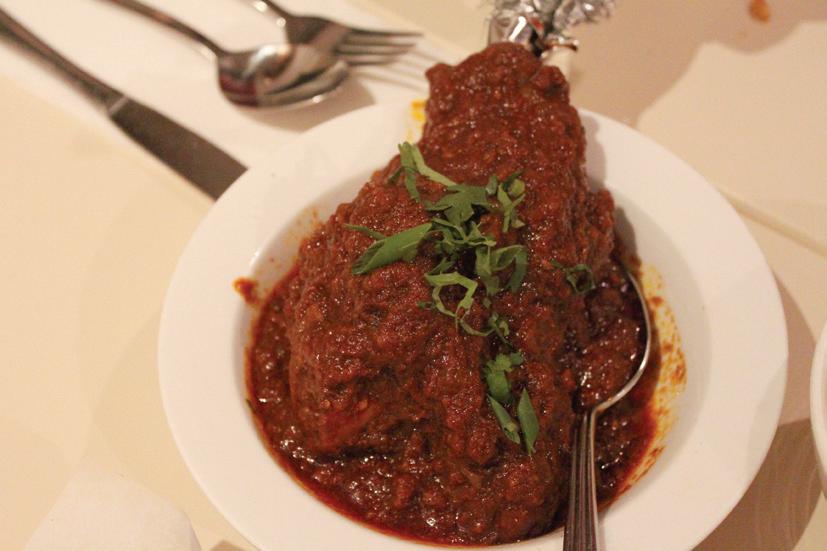
The raita is rightly served cold and comprises of perfect proportions of grated cucumber with mild spices. It adequately complements the mains with its soothing savour.
The naan pieces are a mix of butter clad and onion filled breads. Rice is thin long grained Indian basmati and freshly cooked, its fragrance reveals.
The quantity of servings on the two main dishes adequately caters to the two hungry souls.
To finish off with a sweet note, we have Kheer and Kulfi
The Kheer (rice pudding) is perfectly cooked to the right temperature with fitting sweetness and nuts on garnish. It takes us back to the special moments in our traditional household where Kheer was a mode to celebrate special occasions.
The Pistachio Mango Kulfi on the other hand, offers us a feel of heaven with every bite. The gentlest notes of cardamom and cinnamon render it truly opulent.
And the winner is? The mouth-watering Paapdi Chaat, the tempting Rogan josh and the heavenly Kulfi

Swami Tejomayananda, the ever radiant master
To meet a Saint is rare. Rarer still is to meet a saint of wisdom and learning. Yet the rarest of all is to meet a wise saint of knowledge who is immersed in supreme devotion to the Lord. His Holiness Swami Tejomayananda is one such rare soul.
As the Head of Chinmaya Mission Worldwide, Guruji as he is fondly known, traverses the globe spreading the light of knowledge and warmth of pure devotion to one and all. Let us trace those years, those precious events which formed the life and personality of this great saint of our times…
At the age of 20, the future master of spirituality (named Sudhakar) found himself in front of a large poster advertising spiritual discourses by (Pujya Gurudev) Swami Chinmayananda of Uttarkashi. Sudhakar attended and was captivated by the powerful words delivered by this powerful saint. Immediately he offered himself at the feet of the Master in his service. Since that blessed day, Sudhakar never left Gurudev’s holy feet. Taking permission from his mother, the young seeker headed to Sandeepany Sadhanalaya in Mumbai, where he was to embark on an intensive study of Vedanta, the spiritual science of the Vedas. After 5 years, he was initiated into the Chinmaya Mission’s monastic order of acharyas (teachers) as Brahmachari Vivek Chaitanya.
In 1983 he was initiated into the holy order of Sanyasa by His Gurudev. Vivekji was conferred the title H H Swami Tejomayananda, or, the “Ever Radiant Master.”
In 1993, when Pujya Gurudev Swami Chinmayananda attained Mahasamadhi, Guruji took over as the Worldwide Head of the Chinmaya Mission.
In addition to teaching, Swami Tejomayananda has executed many notable, innovative projects, including the Chinmaya International Residential School in Coimbatore, the Chinmaya Centre of World Understanding in New Delhi, the Chinmaya International Foundation near Cochin, the Chinmaya Heritage
Centre in Chennai, the expansion of the Chinmaya Mission Hospital in Bangalore and the Chinmaya Vibhooti Vision Centre near Pune.
In this way, the wisdom, the work, the mission, and the vision of Pujya Gurudev flows on unabated through this illustrious disciple.
Swami Tejomayananda will be visiting Sydney in April and over 9 delightful nights, will be delivering discourses on the essence of the Tulsi Ramayana. The talks are free, and will be suffused with devotion, knowledge and practical messages to bring the beauty and glory of the Ramayana into our lives! Attend and enjoy!
When: 17th to 25th April, 2011
Where: Bahai Centre, 107 Derby St, Silverwater
Time: 6.30pm to 9.00pm
The verdict? Thousand Spices presents a delightful eating experience, at a reasonable price to boot, and with a varied enough menu to suit most tastes. The informal and relaxing ambience only add to the whole dinner experience.
Drishya Sharma
Thousand Spices
23 The Crescent, Homebush, NSW 2140
Ph 02 9746 1144
www.thousandspices.com.au
Swami Tejomayananada & The Ramayana: The Priceless Gem

In the multifaceted priceless gem which is the Ramayana, there are so many aspects to delve into and derive inspiration from. One beautiful facet is to see the Ramayana as a mirror of our own life’s journey. Let us see Ramayana through this angle:
All beings, without exception are seeking happiness, and that is symbolised as Sri Rama whose name itself means the delighter of all. Lord Rama is the very life-spark, hidden in the hearts of all beings. The idea is, True Happiness is found within, but it manifests only in a heart which is free from inner conflicts such as selfishness and desiresthat place is called Ayodhya, which means a land free from conflict!
That delightful Lord Rama who also symbolises self-knowledge is ever wedded to the embodiment of devotion and peace (Sita). However, when desires and delusions overpower our hearts, symbolised by Kaikeyi and Manthara, Rama is exiled from Ayodhya, and along with Him, Sita as well as the embodiment of dispassion - Lakshmana. Truly, in a deluded mind, how can there be peace, bliss or dispassion?
Thus we fall into the forest of delusion, and face many vices and negative emotions - the demons, which we slay one by one with the power of our knowledge, Rama. We replenish ourselves with divine thoughts, symbolised by the divine company of saints and devotees, and we slowly approach the Lord with all love to invite Him back, as Bharata did.
Along the way, due to temptations - the golden deer, we lose our peace (Sita) and get dragged down into the endless chasm of sorrows (Lanka) where, like Sita we grieve at our misfortune and weakness. But then, we slowly take charge of the millions of stray thoughts (the monkeys) and direct them towards finding peace.
Eventually, we use all our knowledge and dispassion and an avalanche of positive thoughts to defeat the very cause of the problem itself (the ego) symbolised as Ravana. When the ego is slain, Bliss and Peace, along with dispassion return once and for all to our hearts, to rule there forever. For indeed, free of ego, our heart has become Ayodhya once more.
This is just one of the many facets of the beautiful story of Ramayana.
Join us as H H Swami Tejomayananda takes us through this journey to give us a complete picture of this grand epic and how its timeless messages can transform our lives!
“Sampoorna Ramayana” Talks: Pl see page 25
APRIL (1) 2011 <> 57 NATIONAL EDITION
www.indianlink.com.au ADVERTORIAL
Global Head of Chinmaya Mission, H H Swami Tejomayananda, comes down under

58 <> APRIL (1) 2011 INDIAN LINK
Wrapp ng it up!
Nice and easy, quick and tasty is the way to go with fancy sandwiches for any occasion, from a simple snack to party food


cucumber, add the dressing and mix gently. Serve cold in a wrap of your choice.
1/3 cup avocado, cut into small cubes
1/3 cup baby spinach leaves, chopped fine
BY SHERYL DIXIT

They’re fast and simple to prepare, and incredibly tasty. They’re just the right kind of cuisine for when you’re too tired to cook, bored of the same old lunchbox options, or simply looking for an exotic change. Fillings come in various tastes and types, are open to a whole range of ingredients and can help exercise your creative culinary talents to the limit.
Nowadays, any supermarket will offer you an array of choices when it comes to wraps. Pitas, khubus, chappatis, rotis, tortillas, naan are all readily available, and in choices of white, wholemeal, multigrain and a host of other options. And if you like, experiment with baguettes, bread rolls, dinner rolls, Panini or croissants. Perhaps try an open sandwich on gourmet bread in soy, rye, sourdough or cottage white. No matter what the choice, a mix-n-match of ingredients can make for a delicious meal. And remember that lightly baking or grilling a wrap could add another dimension of flavour to an already tasty meal.
But what about the fillings? The range and variety are absolutely staggering, but here are some easy and appetizing favourites that will tickle your tastebuds.
Don’t forget that a lot of these fillings can also be used as dips or cracker toppers for the party you’re planning for the loooong weekend!
Corn and dill sandwich spread
A quick ‘n’ easy treat
1 cup corn kernels (tinned)
½ cup creamed corn (tinned)
¾ cup shredded tasty cheese
½ cup chopped fresh dill leaves
Salt and pepper to taste
Pinch sugar
Mix all ingredients and use as sandwich spread (or as a dip with crackers).
Roast chicken ragout
Great to create with leftover roast chicken
300 gms boneless roast chicken
1 medium onion
1 medium tomato
3 leaves cos lettuce
1 tbsp lemon mayonnaise
Cut the roast chicken into small shreds of medium thickness. Flatten wrap, cover base with leaf of cos lettuce. Fill in the middle with roast chicken, slices of onion and tomato, and top with lemon mayonnaise. Fold into wrap and lightly grill before serving.
Ham and potato
A humdinger
200gms thin sliced ham
1 large potato
Small bunch chives
½ cucumber
30gms cucumber dill dressing
Boil the potato, peel and cut into small cubes. Finely chop the chives and cucumber and roughly chop the ham. In a large bowl, mix the ham, potato, chives,
Chickpeas munchie
Mmm….
1 can whole chickpeas
2 spring onion stalks, finely chopped
½ tbsp olive oil
½ tsp lemon juice
½ cup tabbouleh
2 tbsp fresh hommus
Mix the chickpeas, olive oil, spring onions, lemon juice together in a bowl. Flatten the wrap and spread hummus on one side. Spread the tabbouleh over the hummus, next add the chickpeas mix, and fold to enclose the mix in the centre of the wrap.
Turkey time?
You bet!
250 gms boneless roast turkey
4 slices vintage cheddar cheese
½ cup avocado, roughly mashed
½ cup yellow and red capsicum, cut into strips
Place the vintage cheddar cheese directly on the wrap and then add a mix of the rest of the ingredients.
Tuna and salad treat
Fun fish food
1 large can flavoured tuna
1/3 cup red capsicum
1/3 cup green capsicum
1/3 cup celery, chopped fine
Drain the tuna of excess water and keep aside. Add all the other ingredients into a large bowl and mix well. Add tuna and mix gently. I feel that the lime and cracked pepper flavoured tuna tastes best in this recipe, but any other flavour can be used.
Dijon Chicken

Delightful and delicious
250 gms chicken, cooked and cubed
2 tbsp Dijon salad dressing
1 tbsp honey
1 tbsp mayonnaise
½ cup capsicum, cut into strips
1 large tomato, chopped
2 large lettuce leaves
2 slices Muenster or Swiss cheese
Combine salad dressing, honey and mayonnaise and mix well. Stir in chicken, green pepper, and tomatoes and mix gently. Line the wrap with lettuce and cheese and fill with the mixture. Enclose and serve.
Greek wrap
Food for the gods
2 tbsp mayonnaise
1 tbsp lemon juice
1 cup canned cannellini beans, drained and rinsed
200 gms chopped cooked chicken
1/3 cup crumbled feta cheese
1/4 tsp. dried oregano leaves
1/2 cup chopped lettuce leaves
Mix mayonnaise, lemon juice and beans, mashing the beans slightly. Stir in the chicken, feta and oregano. Place the mix in a wrap and drizzle with chopped lettuce leaves.
Salmon and pesto
The perfect combo
3 thin slices smoked salmon
3 tbsp cream cheese
¼ cup basil pesto
2 tbsp roasted roughly crushed pine nuts
½ cup sliced avocado brushed with lemon juice
Mix cream cheese and pesto. Spread the mix over the slice of salmon and add avocado. Lightly drizzle with pine nuts, wrap and serve.
Try out these mix-n-match combinations
Main filling: Ham, turkey, chicken, roast beef, canned fish, paneer, canned beans, prosciutto, chorizo, bacon, potatoes, pancetta, eggs.

Add: Avocado, red, yellow or green capsicum, fennel, Spanish onion, baby spinach, cos or any other lettuce, cabbage, tomato, spring onions, parsley, coriander, shallots, salad leaves, summer greens, asparagus.
A touch of taste: Swiss, tasty, cheddar, feta, gruyere, parmesan or any other cheese, Dijon or hot mustard, sweet chilli sauce, mayonnaise, caesar’s dressing, cranberry sauce, olive oil, honey, lemon juice, hommus, tahine, sour cream, flavoured or plain cream cheese, olives, sundried tomatoes, jalapeno chillies, mint yoghurt, tomato relish, pesto.
APRIL (1) 2011 <> 59 NATIONAL EDITION
FOOD
www.indianlink.com.au
Matrimonials
SEEKING BRIDES
Looking for a match for my brother, smart, intellectual and hardworking. Prefer a family-oriented girl, either PR or on Student Visa. As myself and my sister are both Australian citizen, we will be sponsoring my brother and his spouse for permanent residency. Please contact +61 4 3306 5610
Match required for an Australian citizen Sydney resident north Indian boy, 26 years old, 5’7”, slim, handsome and very fair engineer boy from Kayastha family. Looking for a suitable well-educated Indian girl with family values. Caste no bar. Please send details to akhilsns@gmail.com or contact 0412 487 801.
Saini Sikh boy, 1970-born, 5’10”, well-educated, divorced, looking for a girl in Australia on any visa. Caste, religion or region no bars. Simple and early marriage in Australia. Ph. 0401 532 487 (Australia), 98 8864 0204 (India), email: kulvinder102@yahoo. com
Australian Citizen, Hindu, Saiva Pillai Tamil 39, M.Tech, Project Officer, clean habits seeks girl, strictly should be housewife after marriage. Strictly vegetarian. Caste no bar. Apply with BHP to soulpartersearch@gmail. com.
31-year-old male, Fijian-Indian background, 5’8”, fair, handsome, Australian citizen vegetarian and nonsmoker, living in Sydney, seeks suitable match of honest girl with good family values, age 25-30. Caste and education no bar. Please reply with photo and details HI.WATSUP@hotmail.com or call 0449 109 620
F
iji Hindu, 52, dual Australian / New Zealand citizenship, living in Liverpool, Sydney, seeks Hindu wife from India or Fiji, age 30-45. Please email details / pics to ron_87singh@ hotmail.com
Seeking an alliance for Valmiki boy, 36, 5’8”, very well educated, LLB, MIB (AUS) government employee, Australian citizen. Parents are seeking a well educated, homely girl with traditional values. Caste no bar. Respond with photo and complete bio at valmikiboy@hotmail.com or call 0431 159 221.
SEEKING GROOMS
Punjabi Hindu Khatri girl, goodlooking, smart homely, never married, 34, 5‘11”, looks very young, seeks tall Indian boy settled in Australia, caste no bar. Two brothers well settled in Sydney. Contact with photo and details on 0425 910 007 or ricky.bhalla@gmail.com
for Sale
Seeking match for Sikh girl, 30 years old, 5’2”, very beautiful, born and raised in New Delhi with Indian values. Belongs to an established family in India, father working as Director of Engg. Institute, eldest sister married and well settled in Sydney. Highly qualified with couple of masters’ degrees, completed CA from ICWAI and experienced in working with a top prestigious firm. Seeking professional, well-educated match with good family background. Early Marriage. Caste no bar. Contact: 0403 421 720 or email: kitty.80@live.com
Seeking a professional, well settled, handsome, Sikh boy for an intelligent Jat Sikh girl, dentist, 29, 5’2” working in NSW and belonging to a family of professionals. Email ozdent123@gmail.com
Seeking match for Hindu, 32, 5’4”, Arora girl (divorced), PR, permanent job in NSW and studying accounting. Family settled in India (Punjab). Caste no bar. Please send photo and details to ompar@y7mail. com
Seeking professionally qualified and well settled teetotaller match for 1977born Punjabi Khatri girl, 5’5”, MBA, diploma in HR, IAF lady officer, never married. Caste no bar. Sister in Sydney. Email details at preetiynr@rediffmail.com or riyasayal@hotmail.com
Seeking suitable match for Punjabi Aggarwal girl M.A, B.Ed, Diploma in Community Welfare (Sydney), good looking and fair, divorcee, 5’3”, 42 years. Prefer qualified Indian-origin Hindu boy between 42-45 years. Send biodata with recent photo to janakraj. aggarwal@yahoo.com
Family seeking a suitable match for a beautiful and accomplished, 23 year old, 5’ 2’’ tall, slim built, North Indian girl with strong family and personal values. She is highly intelligent, has a degree in Commerce/Law and is a tax consultant at a high profile firm in Sydney. The preference is for a suitably educated and employed boy (age: 25-28) who has been brought up in Australia, USA or England. Please send your details (including a recent photograph) to OZ7654@gmail.com.
Dr. G. L Gupta settled in Australia since 1970, seeks match for granddaughter. Meenakshi Gupta DOB 7th Nov 1986, ht. 5’ 4” fair, with sharp features, from Hyderabad, India. Graduate in Commerce, PG Diploma in Banking and Finance from IFBI and worked in ICICI Bank. Coming to Sydney. Seeking Hindu (preferably Agarwa)l professional match. Contact 0401 448 186 / 0404 833 750. E mail giri32@yahoo.com.au
Before you lodge your application, be sure to check the track record of your migration agent. At AVMCS, we have been successfully helping people like you for over 18 years, involving thousands of successful applications. We know the rules and guide you professionally all the way. No wonder, AVMCS is the first choice of people who want the best value for their money and efforts. Remember, there is no substitute for experience.
•
•
•
The
60 <> APRIL (1) 2011 INDIAN LINK
Indian Restaurant For Sale Contact: 0422 300 205 Genuine Buyers Only • Indian Restaurant (145.2 sq m, seats 72) in Canberra
Great location on the fringe of CBD
•
Fully equipped commercial kitchen
Long lease & attractive rent
Well established with huge potential
Fantastic Lifestyle Newsagent/Lotteries Agent No Deliveries, Easy to manage, Great Hours, Brilliant Water Views Huge Potential, Suit Owner Operators , on the Promenade Batemans Bay NSW Price $300,000 & SAV. Ph: 0417 063 284
hard work has been done, just take over and reap the rewards. Opportunity not to be missed.... News Agency
IMMIGRATION. THERE’S NO SUBSTITUTE FOR EXPERIENCE. 95 Wigram Street, Harris Park, NSW 2150 Tel: 02 98939606 Fax: 02 98912872 email: info@avmcs.com.au web: www.avmcs.com.au Contact Sanjay Deshwal on 02 98939606 or 0412 462 344 RMA 96 83 692 AUSTRALIAN VISA & MIGRATION CONSULTANCY SERVICES



APRIL (1) 2011 <> 61 NATIONAL EDITION



62 <> APRIL (1) 2011 INDIAN LINK
Wolf in sheep’s clothing
“Why do you say that?” I asked.
BY RANI JHALA
“Grandma, guess what?”
My little grandson came running into my bedroom. I smiled. I knew the answer was coming soon, as it always did. He informed me that we would see the finals of the National Premier League and my son’s company, a prime sponsor of the game, had been given complimentary tickets.

“Can you believe it, Grandma, we will see the greatest cricketer ever, ‘The Golden Arm’! Dad said we’ll sit in the same area as the VIPs. That means ‘Very Important Person’, Grandma!’ he said excitedly.
I smiled again. How soon time flies, to make our children’s children our teachers!
“Why don’t you take a friend, my little one? I know nothing about the game. It will be a waste to take me.”
“No Grandma, mum said you have to come. She said, it’s a family pass, and you are family”. This time, I became teary. The people I considered my world, had included me as a part of theirs. Not many who reach my age are so loved.
“Mum, he is right. You have a week in which you can learn all about the game from him,” said my son, joining in. My grandson, already my teacher in so many ways, was thrilled at the idea. And so for the next week we sat in front of his computer, and he taught me about cricket. By the end of it I had learnt such new terms as ‘dusra’, ‘googli’ ‘leg spin’, ‘bounder’, ‘full toss’, ‘cover drive’, ‘slips’, ‘short leg’, ‘gully’ and ‘night watchman’. I laughed at the new meanings given to some of the terms we had used in my generation too. ‘Short leg’ was used in sewing. And ‘night watchman’ was the name for the man who stood guard at the gate. Too many terms do not go well with an ageing mind, but I did not
“My teacher says that if at the end of the lesson no one has questions, then either you know everything about it or you are not interested.”
“Busted!” I thought, once again resorting to terminology I had learnt from him.
When the company car came to pick us up, we were ready and waiting. Three rows from the boundary fence we had the perfect seats to watch, and close enough to rub shoulders with the celebrities there. Suddenly a hush fell as the occupants of four vacant
eye, just as I had wiped away the suffering that Jeet Jaimal had caused me for so many years.

Years ago, this man’s company was my tenant. When the tenancy ended, they refused to vacate my property. We fought a lengthy case and won but they appealed on grounds that his company had not been informed of the court hearing because I had bribed his employees who had withheld the court order. I had not even met him, his family or anyone employed in his company at that stage. I don’t know why he lied, only he and the God who took his Rs. 57 lakh donation know! Finally I learnt that they were playing games because they wanted to buy my property themselves, and were preventing me from selling it to another buyer. Forced with no other option with my property being held for ransom and faced with ever-mounting legal fees I agreed to sell, but instead of giving me the market price of the property, he would not agree to anything more Rs. 57 lakhs, a quarter of the market value of the property. I could have held on, but the legal system was slow in its progress and I had a child that I was bringing up alone, as a widow. During this time, his company was not even paying rent, and I had to lease a home for my son and myself. The day his manager uttered the words, “You never know what will happen tomorrow. It’s best you take what you are getting now!”, I sold my home and Jeet Jaimal got what he wanted.
have the heart to tell my grandson that he was wasting his time on educating an old woman, so I pretended to understand. But he must have guessed, for at the end of our lesson he said, “Grandma, you are not really interested in this, are you?”
man who walked between them. Jeet Jaimal, announced the microphone, but I did not need that reminder to recognise him. I did not need the paparazzi to proclaim his importance with their flashing cameras.
During the game I did not see a single bowler bowl, or a single batsman’s response. My eyes would not waver from the man. In his designer clothes and dazzling gold accessories, he pretended humility as they publicised his charitable activities and praised his business successes. They called him a gifted entrepreneur of sterling qualities who made it on his own without sacrificing his integrity. They praised him for the Rs. 57 lakh he had recently donated to a famous temple.
While my body remained in a poised and serene pose, my son guessed the turmoil that raged within me, for he reached out his hand and covered mine. And my first tear fell. I quickly wiped it away from the corner of my
Not that he cheated me, but because he pretends to be a spiritual giver when I
him to be manipulative taker.
My son and I made our home in a smaller town and I brought him up as best as I could. While my son and I took the local bus, this man bought a transport company. We lived in a modest two bedroom unit, while Jaimal built a fifteen floor office block on my land. And while my son’s wedding was a small family affair, for his third marriage this man rented a palace. Am I bitter? No. Disgusted? Yes. Not that he cheated me, but because he pretends to be a spiritual giver when I know him to be manipulative taker. But he forgets one great Karmic law. If you snatch the morsel from another’s mouth, it will not nourish, it will sicken!
My reverie was broken when my son leaned over and asked, “Who is he, mum?”
“The wolf in sheep’s clothing, my son!” That had been my code name for Jeet Jaimal.
APRIL (1) 2011 <> 63 NATIONAL EDITION
www.indianlink.com.au FICTION
Reaching the pinnacle of fame and fortune is meaningless when you gain that status through cheating, lying and deceiving the innocent
“My teacher says that if at the end of the lesson no one has questions, then either you know everything about it or you are not interested.”
know

64 <> APRIL (1) 2011 INDIAN LINK
ARIES March 21 - April 19
Tarot predictions for April 2011 Tarot


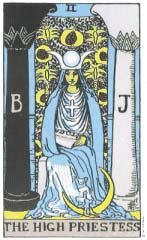





Tarot predictions for February 2010 Tarot ‘n’ You Tarot ‘n’ You



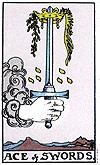

LIBRA September 23 - October 22
The new moon on the 3rd is in Aries, so this month is all about new beginnings for you. You will be making a lot of changes and may even be looking at a new line of work, change in appearance and/or change of residence. The cards also show you will have a real energy boost this month, and increased vitality. It is going to be a very exciting time, but remember to take time out to relax too.
TAURUS April 20 - May 20
There will be an increase of opportunities with love and money for you this month, Taurus. The cards are indicating that you have especially good social skills at the moment and will be making new friends. You will be like a magnet this month. You may well attract new love and other opportunities. It is also indicated that this is a super time for enjoying the finer things in life. Do not however, ignore a lower back ailment.
GEMINI May 21 - June 20
The effect of the new moon on the 3rd is fully energizing and very creative. You are all-powerful at this point in time, Gemini – and you will be able to achieve everything you want. Self confidence and energy levels are particularly high. Not only are promotions well aspected in the cards, but relationships will also be favourable. Do not worry about opposition from people around you: you are oozing appeal and magnetism, so make the most of it!
CANCER June 21 - July 22
The new moon may bring challenges with people such as superiors, older family members and colleagues. The cards are showing a testing time for you, Cancer: you need to remain very focused and strong and believe that you will get through this. Be careful of feeling under pressure from others which may result in arguments. Your ego may get in the way. You will be planning a break away to clear your head and re-charge your batteries.
LEO July 23 - August 22
The new moon on 3rd will being harmony to your relationships, Leo, as you will be feeling very balanced and calmer. The cards are showing that your plans are working out well. Goals that you have set for yourself seem attainable and are in clear sight now. You have little resistance from others. This is a very good time to enjoy yourself and relax. A holiday to re write goals and decide on your next steps is a good idea.
VIRGO August 23 - September 22

For the first few weeks of April, Venus is opposite for your sign and the cards suggest that this will increase activity in your love and relationships area. You will not feel like working this month so be careful if you are employed. Relationships seem to be the main thing on your mind and there may be some problems in that area if you do not draw the line with someone. Be careful of overspending this month and a lack of discipline.
You need to balance your emotions this month as you may feel anger and frustration. Is someone opposing your views, or are you not being able to be yourself and act the way you wish? There is a need for you to retreat briefly and think about what you want to do and say to others. You have a tendency to speak without thinking and this may hurt some people’s feelings. You may be planning to surprise someone as a peace offering!
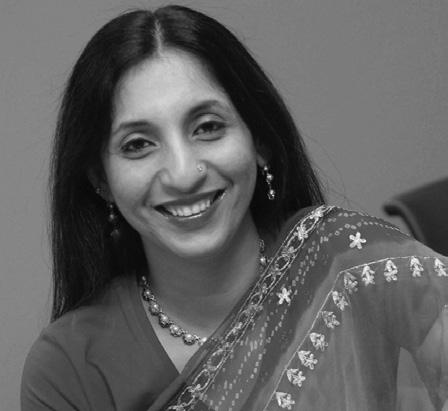
SCORPIO October 23 - November 21
Early April will be a very peaceful time for you. The cards suggest that life will be easy and you do not feel any obstacles in your way. You are also very loving and caring towards people and that is coming back to you now. There is lots of kindness and affection this month and social activities are very well favoured. You may feel keen to start a relationship with someone who you have your eye on. What are you waiting for?
SAGITTARIUS November 22 - December 21
This month sees a real surge in your energy levels, self confidence and your desires towards the opposite sex, Sagittarius. Your relationships with people will feel more balanced this month and you will feel better as you may decide to reestablish contact with someone that you fell out with. Great time also to start that exercise regime! Your professional relationships and progress are well aspected too this month, and you will feel a sense of achievement in many areas of your life.
CAPRICORN December 22 - January 19
There will be an increase in opportunities in love and money this month, Capricorn. You will feel very energetic about expressing love and affection. You will be making new friends this month as social skills seem on a high, and the cards are also suggesting that this is a great time for enjoying the finer things in life, so party on! There will also be plans to invest in foreign lands. Take advice before you make any steps and plan carefully.
AQUARIUS January 20 - February 18
It is a wonderful time to push plans to do with business or work to climb the ladder. Your luck aspect is well favoured this month and you will see progress in many areas of your life. Relationships are also well favoured. There is a possibility of a new romance entering your life. If you are not single be careful of flirtatious behaviour around your work place or social events. There is a new purchase being planned by you or someone around you.


PISCES February 19 - March 20
This month you will feel your creativity flowing, Pisces. You will radiate love and positive energy and this will bring some interesting people into your life. A great time to socialize - you will spend time with loved ones this month and plan some special events. The cards also show that you will plan to do some work on your own. There is a need to branch out and work solo which will give you good results.
APRIL (1) 2011 <> 65 NATIONAL EDITION
STARSFORETELL
By NANCY SOOD www.nancysood.com
www.indianlink.com.au
Cine Talk
A stylishly crafted whodunit
Film: Game
Cast: Abhishek Bachchan, Kangna Ranaut, Anupam Kher, Boman Irani, Jimmy Sheirgil, Shahana Goswami, Gauhar Khan, Sarah Jane Dias

Director: Abhinay Deo
“What a story!” Abhishek Bachchan, playing a cross between a fugitive and a guardian-angel, says wrily at the end of this elegantly crafted whodunit.
What a story, indeed. Full marks to writer Althea Delmas Kaushal for crafting a jigsaw that would have made Agatha Christie smile. It wouldn’t be incorrect to say, they don’t make movies like this anymore. Stylishly crafted, cunning in plot and deft in its narrative thrust, Game is one of the most aesthetically-mounted Hindi films in recent times. Huge efforts and resources have gone into shooting the murder mystery in places where intrigue seems infinite, escape seems undesirable and redemption appears as distant as the sound of the waves splashing against rocks that have centuries of stories to tell.
Welcome to the Greek island of Samos. Anupam Kher, looking pricey in his tycoon’s avatar invites four of the most distinguished elitist-outlaws on this side of Charles Sobhraj. Each has a past tense and a future imperfect. Everyone has a history and a back-projection. This is a world defined by a wealth of unexpressed resentment and smothered anger waiting to erupt.
Debutant director Abhinay Deo displays a remarkable grip over the proceedings. Though the narrative moves through a number of continents and exotic cities (Istanbul jumps out at us from the James Bond movies) propelling his tortured characters forward into motions of restless salvation. There is a quietude and grace at the heart of the narration that we’ve rarely seen in desi whodunits.
The crime and its denouement are worked in graphic detail. But the narrative is never bogged down by overpunctuation. For a crime thriller that pays a homage to the best traditions of the genre represented by Sherlock Holmes, Agatha Christie and James Hadley Chase, there is a tightly-wound feel to the storytelling, as though the
director were moving contrary to the dictates of the genre, without slipping up with the details.
If god lies in the details then why does the devil seem to have taken over Game?
At heart Game is a love story about a high-profile gambler and his doomed lady-love…a kind of Bonnie and Clyde with the inherent desperation of the duo’s togetherness reined-in and qualified by ripples of elegant punctuation.
No hiccups, then, in Abhinay Deo’s directorial debut: it is a visual feast. Contrary to films by other ad-turnedfeature directors, Deo doesn’t unnecessarily abbreviate the shots in the fear of losing audiences’ attention. The characters, specially Abhishek Bachchan’s, get sufficient breathing space in a script that favours flirting with fate. There is a delicacy in the textures and colours used to bring forward the tensions in the plot. Shashank Tere’s art direction and Kartik Vijay’s cinematography imbue a gritty cold edge to the spill of blood and the smell of greed. The portions shot on the Greek island are particularly hypnotic, the splashing waves creating a ripple of anxieties in the turbulence of the characters’ lives without toppling the storytelling boat over into the sphere of the stormy.
Whether it is Anupam Kher as tycoon-host on the mesmeric island or Gauhar Khan as his seductive secretary, the characters never cease to appear glamorous on screen: all are eminently watchable. Anupam Kher, Kangna Ranaut, Boman Irani, Shahana Goswami and the underrated Jimmy Sheirgil get the tenor of tantalizing terror right. Sarah Jane Dias is quite a find, though she needs to work on those dancing skills!
Abhishek Bachchan proves once again a master of silences, his eyes conveying the pain of lost love, his lips curling up to convey the cynicism of a man who has seen it all and couldn’t care anymore. His two key action sequences are heart-stopping in their credibility.
Waltzing wickedly between the incredible and the inevitable Game succeeds in sustaining our interest right till the end.
Game is a film that never lets us forget that the whodunit attains an enticing aura only when the characters assume framed postures. Abhinay Deo’s narrative walks a fine bloodied balance between dread and delight.
A pleasant surprise
Film: F.A.L.T.U
Cast: Jackky Bhagnany, Pooja Gupta, Angad Bedi, Chandan Roy Sanyal
Director: Remo D’Souza
F.A.L.T.U? Not quite. A film that takes stinging swipes at our education system cannot live up to a title as uninspiring as that.
F.A.L.T.U turns out to be quite a pleasant surprise. Fresh, feisty, vivacious and vibrant, and with an important message on the gaping loopholes in our education system, this film gets your adrenaline all pumped for its energetic storytelling - and more than a fair share of juvenile antics which stop short of being annoying because they represent the dimmed aspirations of hundreds of school drop-outs and semi-drop-outs who run adrift in the absence of the requisite marks to get into college.
The film offers a solution borrowed straight from Steve Pink’s 2006 high-school comedy Accepted where the losers and other unlikely heroes opened their own bogus college to pacify their disgruntled parents.
Is Bollywood still doing unofficial remakes?
As in Ayan Mukerjee’s vastly superior Wake Up, Sid, the aimless protagonist takes the earnest parents for granted until the terrible marks precipitates a domestic crisis for the academic failures.
After a point, the storytelling acquires a life of its own independent of any other films, desi or firangi. The film exudes a certain gaiety and ebullience. Bright showy colours are used to convey the shallow life where the only thing to look forward after a party is an after-party.
Post-debutant director Remo d’Souza (he has earlier directed a Bengali film) lets the four principal characters do their own thing. A spirit of unconditional bonhomie runs through the hyper-activity of the characters, as they party, party and then party some more.
And then somewhere down the line they want to get serious about their education. Interestingly, the bonding among the quarter of friends never goes into any emotional tangents. There isn’t even a hint of a romance between Jackky Bhagnani and debutante Pooja Gupta who are the official hero and heroine.


None of the four principal characters gets to lord over the proceedings. There are no romantic duets, no attempt to create individual alcoves of emotional or dramatic interest for any of the characters.
Not one moment touches your heart. This isn’t a film that encourages a slackening of narrative energy.
The performances are largely functional. Jackky Bhagnani shows a marked improvement since his last film. He gets dependable support from Chandan Roy Sanyal and to a lesser extent Angad Bedi. Among the senior cast one is rather taken aback to see Rameshwari who once played the charming scenestealer in Dulhan Wohi Jo Piya Man Bhaye, as Angad Bedi’s South Indian mother.
Angad looks as South Indian as Bishan Singh Bedi. But then we aren’t really looking for cultural specificity in these actors. These characters represent a state of mind. They live in a world of vibrant colours, a world where poor academic performance has turned them into diehard pleasure-seekers.
To avoid thinking of what darkness lies in the future for these young losers, there’s always the next party. Come, let’s join the fun.
66 <> INDIAN LINK
ENTERTAINMENT www.indianlink.com.au
Subhash K Jha

APRIL (1) 2011 <> 67 NATIONAL EDITION
BUZZThe
ABHILASHA SENGUPTA brings us up-to-date on what’s hot and happening in Bollywood

How many of you looked at Aamir Khan at the cricket and thought, “What the…??!!” I know I did. And then, just like the 2 billion other Indians watching, I knew instantly what it was all about: perfectionist that he is, Aamir is filming a new role…
The power of the moustache is in full flow in Bollywood. Screen idols are banking on it to look different on screen - Saif Ali Khan has gone for the zappa, Aamir Khan boasts the chevron and Shahid Kapoor the painter’s brush.

When Salman Khan was seen as funny cop Chulbul Pandey, sporting a pencil Dabangg, his fans went crazy, especially those from Uttar Pradesh where the movie was set.
Abhishek in Dum Maro Dum, Saif Ali Agent Vinod, Sunny Deol in Mohalla Assi, Om Puri , Shahid Kapoor in Mausam and Rahul Bose in his
In fact Rahul expressed it best recently after finishing the shoot, on Twitter: “My last day of shoot. Then this moustache comes off. Children can come out from under their beds. Fervent pleas from friends to keep the moustache. I was very touched till they explained it made them look irresistible in comparison.”
Aamir’s new look is for Reema Kagti’s second directorial venture, a suspense thriller, which is currently in production. But of course we’ve seen him don the mouche before (see pic). Aamir fans (and even those who are not) will know which film!
Hmm, do we have Jackie Shroff and Anil Kapoor twirling their long-kept moustaches in delight?
AAMIR KHAN
Govinda’s next ready for release
After battling a court case due to a monetary dispute between the producers, Naughty@40 starring Govinda will finally be released in mid-April. The movie has been delayed for two years and the definitely 40+ actor is heaving a sigh of relief at the news. The film, which also stars Yuvika Chaudhry and Sayali Bhagat, is about a 40-year-old man (Govinda) who arrives from London to India to find a suitable match for himself. I guess the ageing actor should consider himself lucky. If the case had been resolved any later, he would have hit his 50s, and that would mean a whole
Ghazal king avoids Bollywood
Ghazal king Jagjit Singh claims that Hindi filmmakers are money-minded and don’t appreciate his musical genre any more, which is why he keeps his distance from them.
“Filmmakers have no taste for ghazals. A lot of youngsters like soft songs these days, but Bollywood has no interest in ghazals... the industry is only about making money. Sab paise ke peechhe bhaagte hain (Everyone runs after money),” said Singh.
The 70-year-old veteran, who has sung songs like Badi nazuk hai, Hoshwaalon ko khabar kya Kiska chehra and Tum itna jo muskua rahe in movies elaborated, “I do not say that
GUESS WHO
Bollywood has become commercialised in recent times. It has always been about moneymaking, but earlier the taste was different. Cinema was a part of literature... but today’s cinema has nothing to do with literature. That soul is lacking and it is only about entertainment nowadays.”
The ghazal maestro has been singing for over four decades and has a repertoire comprising 50 albums. He has sung in languages as diverse as Punjabi, Hindi, Urdu, Bengali, Gujarati, Sindhi and Nepali, and continues to enthrall with his new songs, albums and concerts. But Bollywood is something he gives a miss now.
“I hardly ever had a connection with Bollywood. All through my career, I seldom sang for movies. I was always focussed on my individual career as a singer, and concentrated on my bhajans and albums... something that I still do,” he said.
The singer, who was honoured with the Padma Bhushan, will now be using a lot of instruments like the violin, flute, tabla and guitar to his older numbers, giving them a new feel. He is also keen to lure youngsters with this initiative, in which the product will be the same, but the packaging will be new.
In his 70th year, he has planned to stage 70 concerts worldwide, and is working on two albums – one on ghazals and the other on bhajans
Come on Bollywood, take the hint and rekindle an interest in this classical and unique musical art form!
Support for Shiney
Among others, Salman Khan, Arshad Warsi and Farhan Akhtar have spoken up for Shiney Ahuja after he was sentenced to seven years in jail for rape.
“Seven years is a lot! I have been locked up myself, so I know what happens,” said a shocked Salman, who himself has had brief stints in jail. The 45-year-old was embroiled in a hit-and-run case as well as in a black buck shooting case.
“I hope he (Shiney) is innocent, and if anyone is trying to frame him, that person should come out in the open. A seven-year jail term is too long, especially if someone has lied about it,” added Salman.
Arsahd Warsi feels the judiciary should not target actors “blatantly”.
“Murderers, terrorists and corrupt politicians are walking free and Shiney Ahuja gets 7 years...,” Arshad posted on his social network account.
“I am NOT saying he’s right but don’t forget that Kassab (sic) is still enjoying our hospitality. Do you know the number of rapes that happen in our country on a daily basis by influential and connected people... Those cases are not even registered. My point is all
INDIAN LINK
ENTERTAINMENT
(Find the answer under Caption Contest)
You know her as the sensible friend of the bindaas Kangana in Tanu Weds Manu





APRIL (1) 2011 <> 69 www.indianlink.com.au
JAGJIT SINGH CAPTION CONTEST GUESS WHO :ANSWER Swara Bhaskar What’s the chitchat between Kajol and Vidya here? Send in your responses to info@indianlink.com.au and win a surprise prize Send in your responses to info@indianlink.com.au and win a surprise prize Last issue Caption Contest winning entry Rekha: The only way I can get photographed these days if I cling to you girls… Preity: My trick is going to the cricket. Suneet wins a free ticket to new release Thank You Suneet Manvani Wollongong NSW What’s the chitchat between Rekha and Preity here?
GOVINDA
I Am Juhi
Juhi Chawla attended the Bollywood and Beyond Film Festival to promote her new movie, I Am, and talked to Indian Link about her career and personal life
 BY PREETI JABBAL
BY PREETI JABBAL
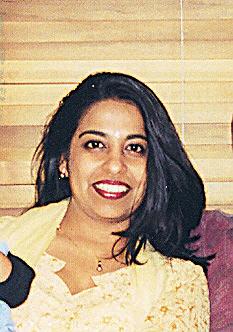
Smiles and easy laughter were an integral part of my interview with Juhi Chawla as she discussed her life and times with trademark Juhi chirpiness, with only occasional lapses into seriousness as she pondered on some of the questions. A frown of concentration would briefly appear on her beautiful face before she would give in to another bout of giggles. Surprisingly, I found that endearing rather than annoying, especially as her replies were peppered with self-deprecating humour.
When asked how she manages the three Ms - movies, marriage and motherhood, she asked me to add another ‘M’ to that list. “I Mismanage everything!” she said with a grin.

“Life just happens when you are busy making plans on how to live it,” she added, with a touch of seriousness. “I have very clear priorities. My family, kids and work come first, and then everything else. I make time for important things and excuses for the rest, that includes saying no to parties and events especially if they take me away from my family.”
“Currently a large chunk of my time is spent on learning music, I am a wannabe in the music department. If I get any chance I love to sing,” said Juhi laughingly. “I find that learning music ‘centres’ me and gives me a balance.”
Juhi’s impressive filmography includes a combination of commercially successful hits like Qayamat Se Qayamat Tak, Darr, Yes Boss and also sensitive films like My Brother Nikhil, Bas Ek Pal and the recent, I am. Her production company Dreamz Unlimited runs in partnership with actor Sharukh Khan and director Aziz Mirza, and she is a co-owner of IPL team Kolkata Knight Riders along with her husband Jai Mehta and Shah Rukh Khan. Juhi has also acted in several Punjabi films and appeared in popular ads on TV.
How do her two children Jhanavi (10) and Arjun (8) react when they watch her on screen, I ask. “They see me more on television, as we do not watch many movies as a rule; we prefer doing other activities together. My children have not seen much of my work, and the only movie we watched was Bhootnath, where I play the role of a mom. One child did not like the movie at all and the other did not like me playing someone else’s mom!” she disclosed.
Would she encourage them to join the film industry?
“They are only little now, but if they want to join films when they grow up, that would be lovely. I often wonder about this when I see other stars and their children who follow in their footsteps. Personally I would encourage my children to do whatever they want to do, and would never force my ideas on them. Like any normal parent I want my kids to shine in whatever field they choose,” she replied.
Juhi entered the film industry by chance, rather than choice. She was offered a role in Sultanat after winning the Miss India contest in 1984, followed by the stupendously
generally stuck to safe roles that suited my personality. I was happy to act in roles that required humour and fun, and did not mind some tear-jerkers or breaking into a dance but in all honesty, I never took up anything that would pose a real challenge or get me too far away from my comfort zone”.
Despite her self-confessed restrictions, Juhi has an impressive list of hits to her name, among Bollywood’s actresses. She has worked opposite the top male leads, including her dear friend Shahrukh Khan. She has now started appearing more in art house movies, lamenting that there aren’t many good roles for her in commercial cinemas anymore.


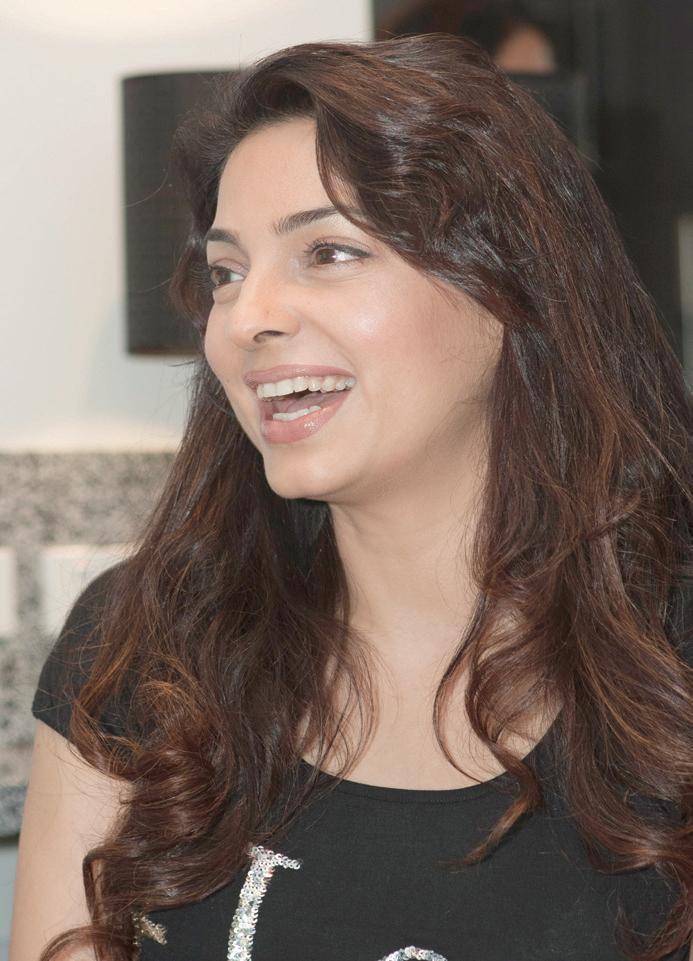

So what’s the upside of currently being at an ‘inbetween stage’ - no longer the nubile nymph, nor ready to retire yet? “The positives are that I have a lot of experience under my belt, I am very comfortable in front of the camera and I have a lot more confidence and self assurance. I am not very busy so I get to spend time doing other things like endorsements, and being with my family and kids. On the flip side I don’t do much film work, so I am not totally in the loop. Quite often nowadays I get some inane offers or am asked to act as a mother of an 18-year-old. I am a mother of young kids and prepared to act in age-appropriate roles, but certainly not as a mother of an 18-20 something,” she said indignantly. At this, I ask Juhi for her thoughts on gender inequality in the industry, where most actresses past a certain age get written off while their male co-stars keep appearing with younger actresses.
“This is a constant within the industry that has been around for 60 years, and is not about to change!” she said, laughing again.
Have you done anything about it, I asked.
“Nothing really, I have other priorities now and I am not trying to fit into the shoes that I wore ten years ago, so frankly, it doesn’t bother me too much,” said Juhi with a shrug.
And what does she think of the fresh crop of actresses, and who are her favourites? “I haven’t watched many films but from what I have seen, I think Katrina Kaif and Deepika Padukone are very glamourous,” replied Juhi.
“Anoushka Sharma did very well in Band Baja Baraat and I think Vidya Balan is also good. She is exploring beyond the heroine range and spreading her wings quite well”.
The actress’s new movie I am, directed by Onirban Dhar is a tale of four stories woven together that takes the audience through issues and dilemmas that bruise modern Indian society. Juhi plays ‘I am Megha’, a Kashmiri pandit forced to flee her home. She returns to the valley after almost two decades, livid and cynical, only to find that her Muslim friend is no better off.
In a whirlwind trip down under, Juhi travelled with Onir to Sydney, Melbourne and Auckland to promote the movie. They appeared together for a Q&A session on the closing night of the Bollywood and Beyond Film Festival hosted by Mind Blowing Films. Fans who flocked to the cinemas were also able to ask some questions and see their favourite heroine in person. And although time was short, I managed to get in a few quotable quotes that throw light on Juhi’s cheerful and easygoing personality.
Up close and personal
Her mantra for looking so gorgeous: “I don’t have enough time to look after myself, but I like yoga and my music keeps me centered and calm. The mantra is to do something that you are passionate about.” The meaning of success: “A smile on my face when I wake up each morning.”
Art house or commercial: “Haila! It’s hard to say, as I have been in commercial movies all my life and now I do some art house as well. Ok, I choose ‘commercial’. Why not? Bring on the naach gaana!” What she would change about Indian cinema: “One thing I wouldn’t change is how good always triumphs over evil. It’s a nice message and I hope we don’t get too influenced by the West and steer away from that homily.”
Politics? “No! A definite no!”
Can’t live without: “My kids!”
Sharing the spiritual: “I believe there is a divine presence and there is no coincidence. You become what you think, and that is why it is important to find balance.”
In the pipeline: “An animation called Mein Krishna Hoon directed by Rajiv S. Ruia, also starring Hritik Roshan and Katrina Kaif.”
STAR-GAZING
Juhi with Onir at the Melbourne premiere of
I Am
I Am Onir
He is a film-maker with the nerve to explore still-taboo topics in Indian society, and with the talent to enrapture the audience
BY GAURAV PANDEY


Onir belongs to a small group of Indian filmmakers whose films have departed from the time-tested, formula-based model that remains a get-to guide for many others. The director was in Melbourne recently to promote , which brings together four different stories dealing with culturally and morally sensitive issues.

Since making his debut in 2005 with My Brother Nikhil, Onir has already earned a name for himself among those who cherish sincere cinema. The movie made the audience sit up and take notice of this new director who believed in telling sensitive stories in an honest way – a philosophy he has followed in his subsequent movies too.

“My Brother Nikhil was essentially a sensitive, dramatic film that, I hoped, would appeal to people,” he says. “The fact that it was so well received surprised even me.”
For a film that was inspired by a true story and dealt with subjects still considered touchy in many cultures, My Brother Nikhil received widespread praise for the extraordinary effort put in by all involved. He has since made three other movies - Bas Ek Pal, Sorry Bhai and I Am -each an effort to stay off the beaten track.
That some of the most talented actors in the industry have worked, often repeatedly, with Onir speaks volumes about the faith they have in his ability to tell a story well.
“I’ve been fortunate that my films have always had some of the best actors in the industry. We believe in sensitive cinema and it is great to see so many talented actors come together for something they all believe in. Ultimately, the actor transforms the filmmaker’s dream into reality. It becomes important to have respectable actors in your team, especially when dealing with ‘taboo’ subjects, because they add to the credibility of your story,” he explains. “Most of the actors in my films work for free.”
It seems the satisfaction derived out of a good effort alone drives him. “The box office does not decide how good or bad your film will be. It is a matter of perspective, and a learning process for the filmmaker,” Oni avers.
Good filmmaking is as much about choosing the right story to tell as it is about choosing how to tell that story. “The script is the backbone of a film,” Onir says. “If you look at the winners at the recent Oscar Awards, for instance The Black Swan or The King’s Speech, they are essentially simple scripts devoid of unnecessary glamour and extravagance.”

However, for many in the Indian film industry, unusual scripts remain too radical a departure from the norm. “There are some
very capable writers in the Indian film industry who are coming up with interesting scripts. The problem is that Indian financers do not like to take chances with new scripts. They are very comfortable in what they have been doing over the years,” explains Onir.
The lack of funding from conventional sources, it seems, has not led to pessimism among filmmakers determined to succeed. Common sense and innovation have come to the director’s rescue, perhaps yet again, with fans on Facebook and Twitter responding in an impressive way to his request for financial support for his new film.
“I Am deals with the dilemmas and conflicts of modern Indian society. It is about looking for a life of dignity and living a life without fear. The film, at the end of it, celebrates the desire of freedom, of personal identity,” Onir says. The filmmaker found it hard to convince financers that the script is “commercial enough”; yet convincing the average fan seemed much easier.
The contributors – many of them appreciative of the previous works of the director and his desire to portray unique and sensitive stories – did not hold back when it came to funding. Almost all the money for I
Am came in the form of small contributions from fans who wanted to own a part of the film. What started as an experiment turned into a partnership of mutual respect between the audience and the filmmaker – something that is more than likely to go beyond a single film.
“For me, I Am is made by the audience. The trust people had in me as a filmmaker was humbling. I would like to make enough money from it so that I am able to return people’s money and, perhaps, give them back a little extra for believing in the movie,” claims Onir.
“A lot of people who came to watch I Am told me that they were impressed by my previous films,” he says. “You relish that as a filmmaker; it makes you work extra hard to redeem their faith in you.”
APRIL (1) 2011 <> 71 NATIONAL EDITION
www.indianlink.com.au
Desi democracy
BY ROY LANGE
Could the uprisings raging across North Africa spread to India? Could Rajpath be a furnace of revolution with farmers shoulder to shoulder with English medium types? This report from New Delhi.
New Delhi: Earlier today the Arab Spring uprisings spread to New Delhi where one million protesters massed at Rajpath. The gathering was generally peaceful until pandemonium broke out later in the day. Delhi
Police believe 23 are dead, with several hundred injured.
The protest was initially organised by student leader Amit Das from the Communist Partyaligned All India Students Association

“The mobile phone is the twentyfirst century’s Kalashnikov!” he told this reporter. “We got all our comrades to get online and rally our troops!”
Amit was angrily interrupted by Ajay Goel, leader of the ABVP, the BJPaligned student union, “Arrey yaar Bengali duffers tried to do this but they don’t own a computer, bhai! My father owns a mobile shop only.”
Amit Das tried to respond, but was enthusiastically interrupted by the Muslim Students Union and the powerful National Students Union and an emerging union from Panipat, with a membership of two. It did not escape this reporter’s observation that many of the student leaders were in their late forties, early fifties and that many of their children were in attendance as it was University study leave.
Deejay from the Congress-aligned NSUI, finally managed to be heard. “We were appalled that these Unions were campaigning for the downthrow of our glorious leader. Soniaji zindabaad! So
we started giving away mobile phones if people promised not to attend. The ABVP then irresponsibly promised, with the help of their seditious BJP masters, a 38” plasma television with every busload that came to the rally. We naturally responded by offering a 42” plasma television with a built-in coffee machine and promptly had Ajaj Goel arrested,” he stated enthusiastically.
Despite the divisions, the rally was a historic display of democracy in play - a sea of humanity demanding the reclamation of their beloved India. Columns of smoke from burnt buses punctuated the horizon. Jats, with beautifully constructed deadly homemade weapons, repeatedly pierced the night sky with 1000 spears in appreciation of the charismatic speakers from every party
It did not escape this reporter’s observation that many of the student leaders were in their late forties, early fifties and that many of their children were in attendance as it was University study leave.

dumbstruck. How could she be in two places at the same time?
Mrs. Gandhi, in impeccable HindiItalian, charmed the crowd to a murmur and said that the legacy of Mahatma Gandhi dictates that violence is completely unjustifiablebut if the million strong crowd feel it is unavoidable, they should attack the BJP headquarters which was just round the corner, “…just past the second set of lights.”
In any case she said, inflation, corruption and no basic services is an incredibly clever CIA plot.
This was when a glorious movement lost its way. Mr. Diwan, a tailor from Bengali Market tells us his story.
The NSU also took very strong exception that Mrs. Gandhi, the President of the Congress, had not been invited as head speaker at such an important rally. Regardless that it was focussed towards the downthrow of her own government.
Mamta Banerjee took even stronger offence. But on questioning, she couldn’t say why she was offended, but insisted she was very angry indeed and couldn’t stop shouting (without taking a single breath!)
Well developed Indian-Islander Business for Sale
• Currently
• One
• Plenty of customer parking close to the shop.
• Loading zone in front of the shop entrance for goods delivery and pick-ups.
• Big storage and packing room including private toilet facility.
• Lots of spaces to move around with trolleys and prams.

• Two office spaces and big kitchen room.
• CCTV in use
middle classes made herculean efforts of not panicking when the networks jammed and they couldn’t get in touch with their drivers).
After a fiery speech by a leader of the BJP, the crowd started to proceed to 10 Janpath with a taste for blood. It was Cairo all over again.
The power of the unstoppable crowd was simply terrifying.
Then Mrs. Gandhi took the podium and the less intelligent looked
“I was minding my own business, sewing a shirt with a tricky rainbow design, when there was an almighty noise outside my shop. I stupidly opened the shutters to find a mob shouting for a tape measure. Then I took a quick look at my bottle of Old Monk to see if I had taken one too many pegs because I saw at least 10,000 people start to measure a dozen plasma televisions. When they found it was 36” instead of 38”, all hell broke loose…”
On this reporter asking what happened next, searching for details of how Connaught Place was burnt to the ground, he admitted he didn’t know, as he had just regained consciousness.
72 <> APRIL (1) 2011 INDIAN LINK
UP, DON’T MISS THE OPPORTUNITY.!!!!!!!!!
send your expression of interest on the following address:
BOX 227
2210, NSW Australia
planning to retire
Opposition
location, Located at the walking distance from the station and mall.
retail system in use
spaces and opportunities to expand the business.
and well tiled floor
HURRY
Please
PO.
Riverwood
• Owners
• No
• Excellent
• Computerized
• Ample
• Air-conditioned
catering customer
from Indian subcontinent, African, Mauritius, Nepalese and Australian.
private Parking space for company car.
BACKCHAT
When protestors gather to voice their opinions in a massive morcha, a confusion of causes reaps unusual benefits
www.indianlink.com.au


APRIL (1) 2011 <> 73 NATIONAL EDITION

74 <> APRIL (1) 2011 INDIAN LINK

APRIL (1) 2011 <> 75 NATIONAL EDITION

76 <> APRIL (1) 2011 INDIAN LINK





































































 BY RAJNI ANAND LUTHRA
BY RAJNI ANAND LUTHRA




























































 BY CHITRA SUDARSHAN
BY CHITRA SUDARSHAN















































 BY TIM BLIGHT
BY TIM BLIGHT








 BY NIMA MENON
BY NIMA MENON

























































 BY PREETI JABBAL
BY PREETI JABBAL















